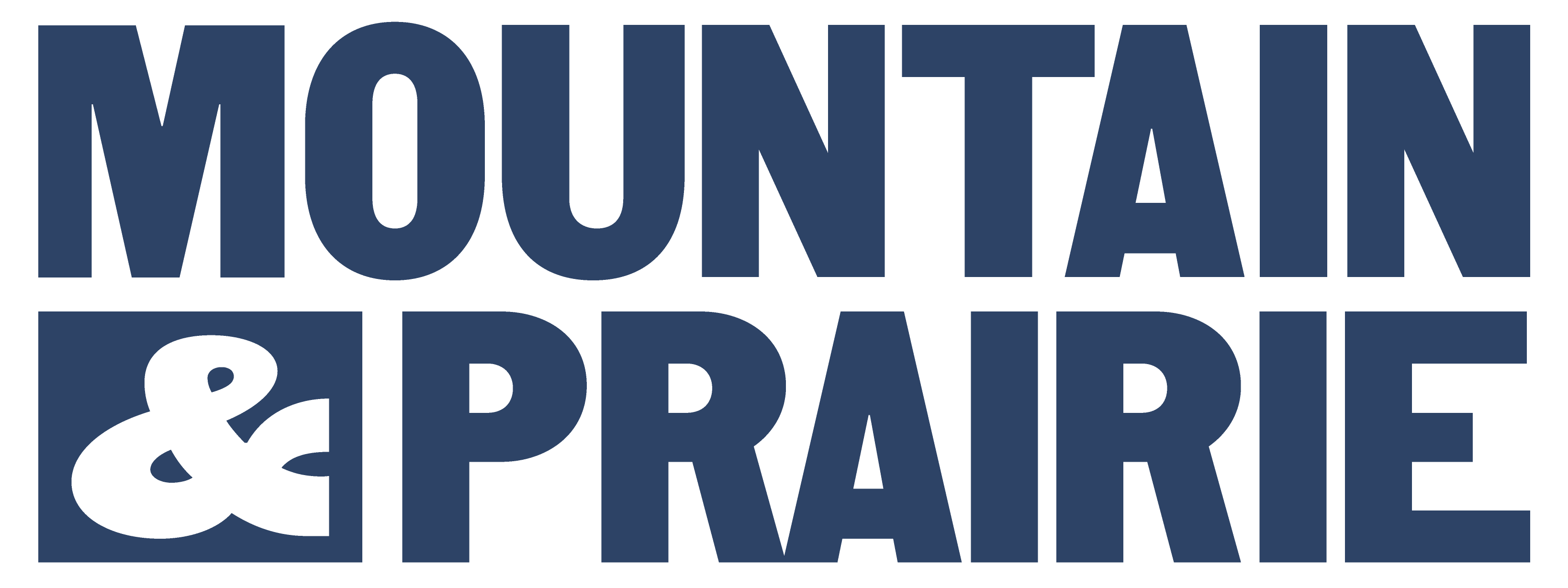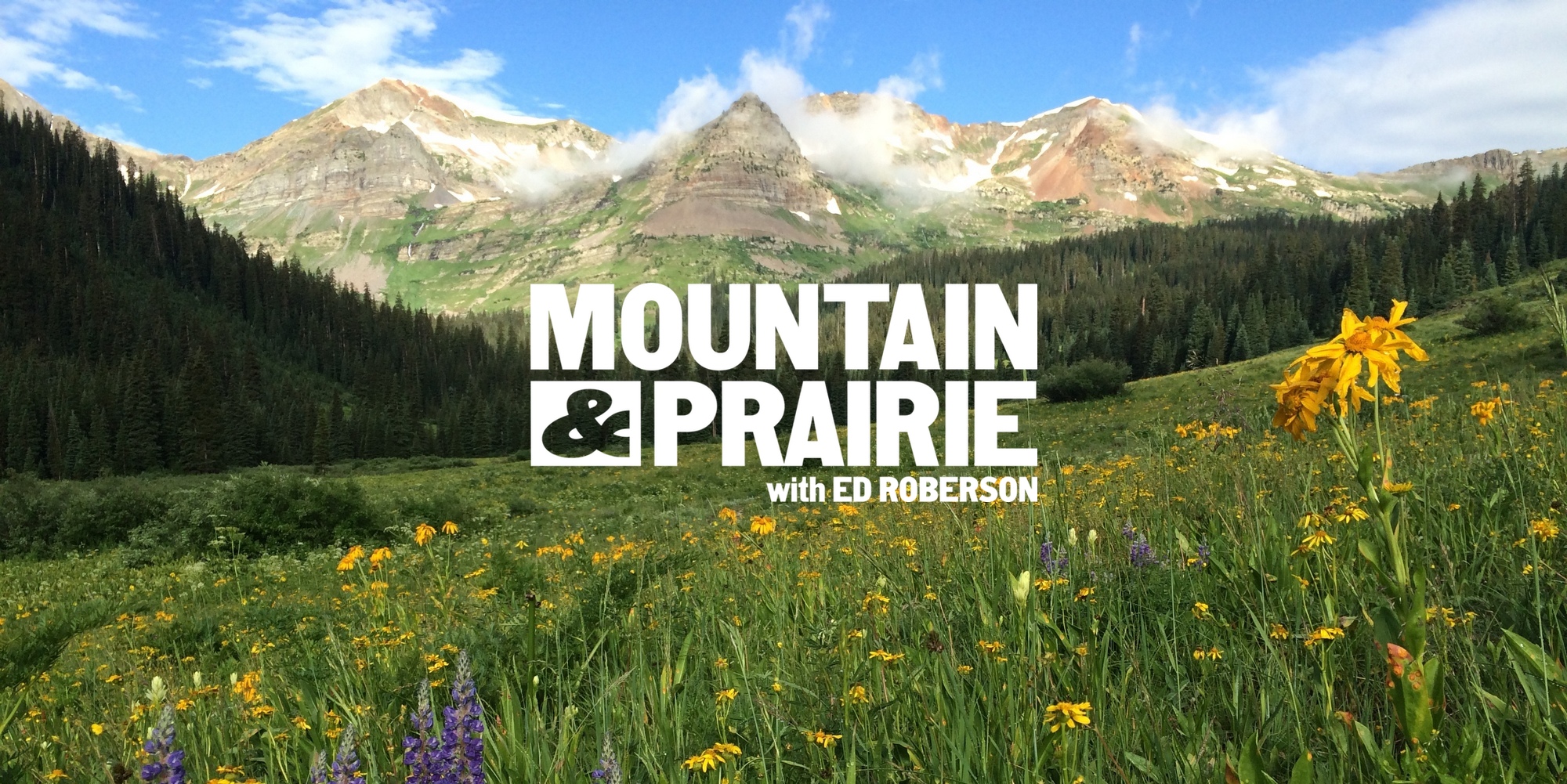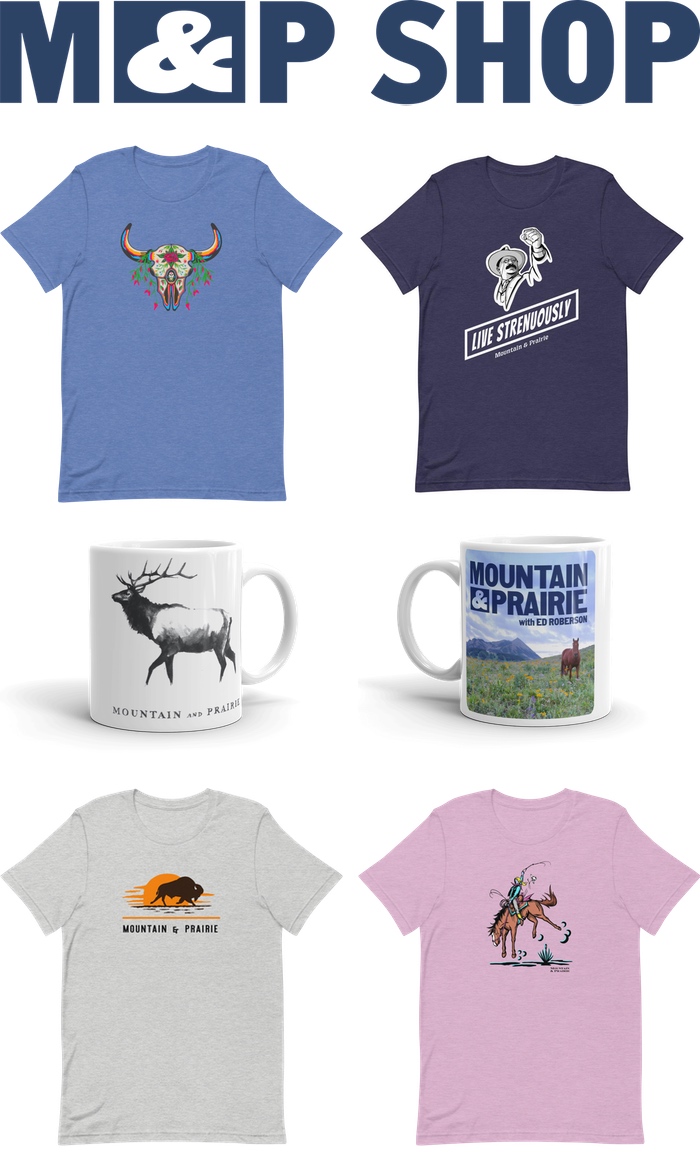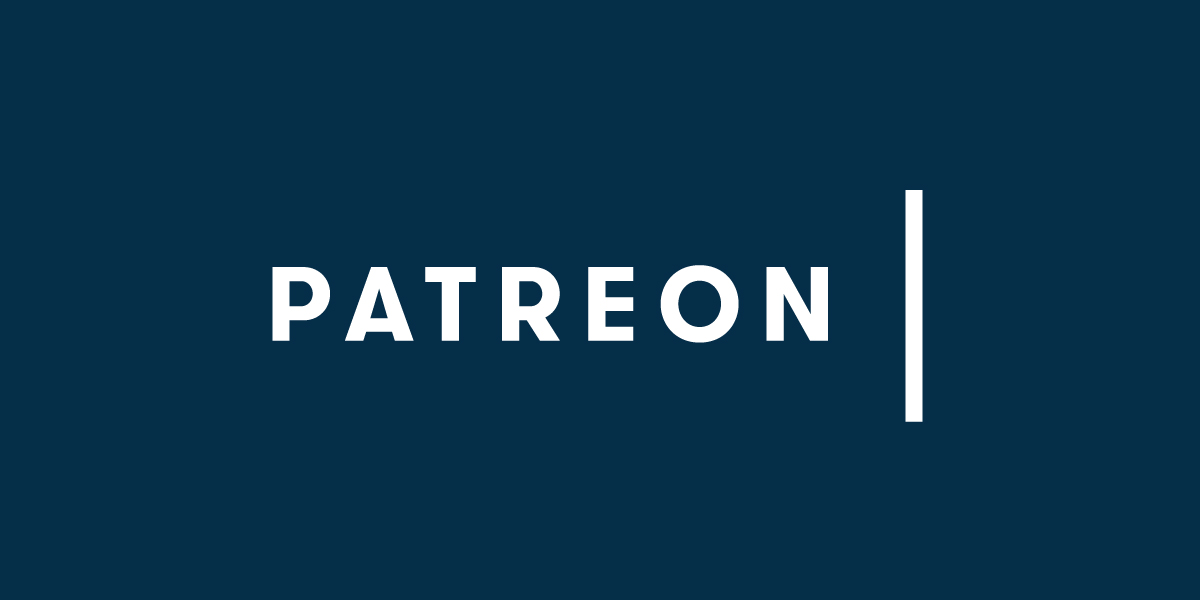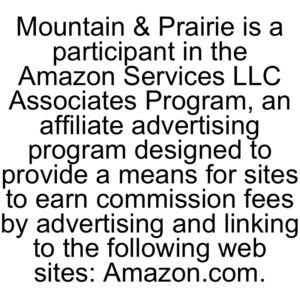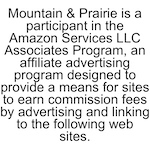Book Club Selection: “All the Wild That Remains” by David Gessner
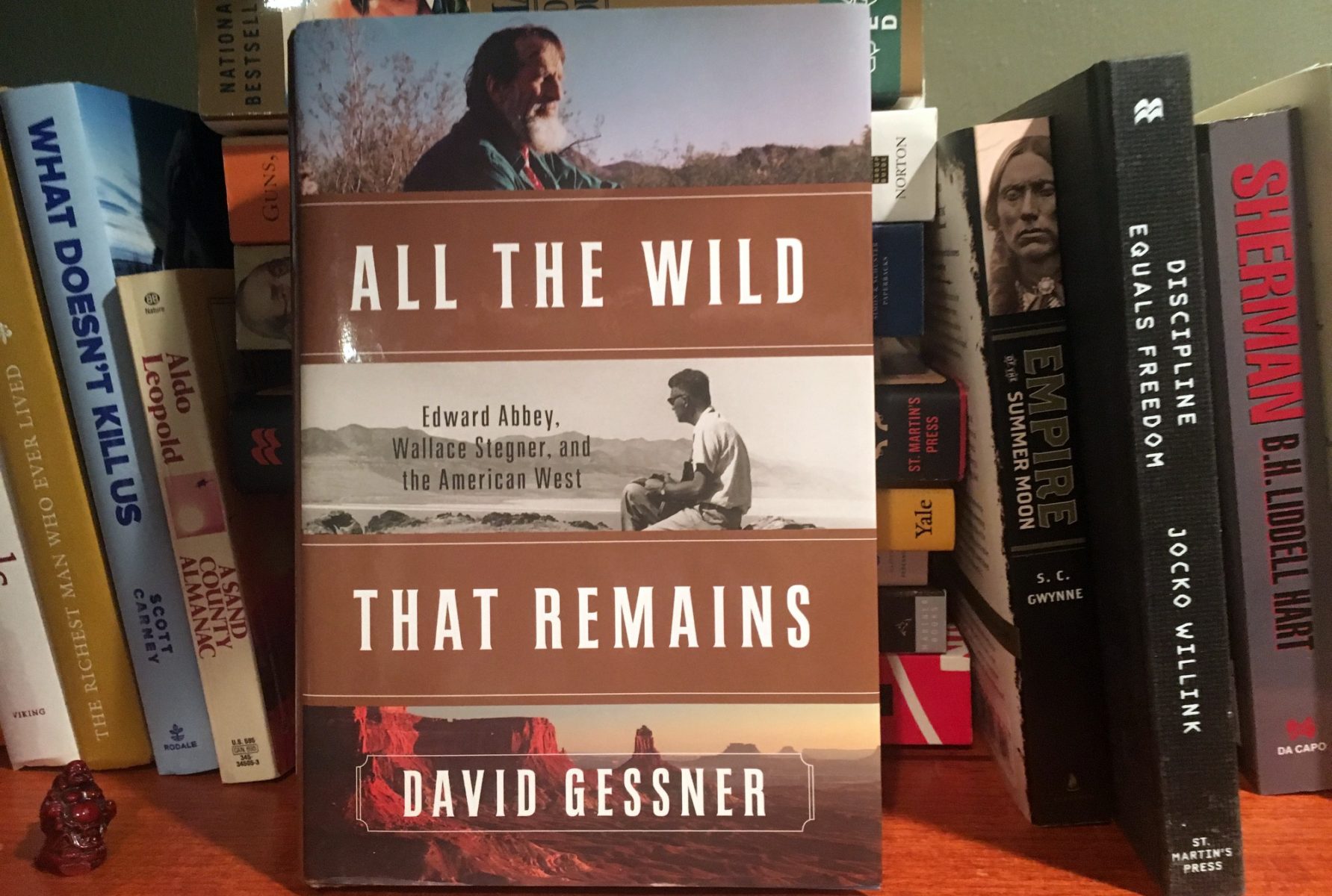
March-April Book Club Selection: “All the Wild That Remains” by David Gessner
When I’ve asked podcast guests to named their favorite books, time and again they reference titles by Wallace Stegner and Edward Abbey. No matter your political persuasion, occupation, or personal background, if you love the West, you’ve likely been influenced by at least one of these men’s work. Love them or hate them, these two men have defined much of the modern-day narrative surrounding the American West.
On the surface, the two men couldn’t have been more different. Abbey was by most accounts a hard-drinking, womanizing, take-no-prisoners environmental warrior who would consider any means, no matter how nefarious, to achieve his desired ends. Stegner was just the opposite—a proper, dignified Stanford college professor who expressed his love for western landscapes in a much more measured, within-social-norms approach. Fascinating men who were as personally complicated as they were influential.
We need to learn more about them! So the March-April book club selection is:
All The Wild That Remains: Edward Abbey, Wallace Stegner, and the American West by David Gessner
All the Wild That Remains is a double biography of the two men, written by the ultra-talented (and ultra-hilarious) David Gessner. Gessner not only provides the basic, expected biographical narrative, but also thoroughly analyzes the contradictions and complexities of the two men. I read the book two years ago* and absolutely loved it. It opened my eyes to just how thoroughly Stegner and Abbey have infiltrated all aspects of thought regarding the modern-day West. It also reminded me that no person is as simple as their manicured public image. (*My wife and I are expecting our second child in the next three weeks, so I picked a book I could revisit rather than try to read for the first time while in a sleep deprived stupor!)
It’s worth nothing that Gessner is a proud environmentalist, so some of his ideas on the development of the West and its resources may come across to some as a bit biased. But we’re all biased in one way or another, so I’d recommend approaching the book with an open mind, just as you did with American Wolf.
For further reference, here’s an informative book review from the Wall Street Journal. It gives a solid overview of what you can expect. I’m very excited to discuss with all of you and hear your reactions to Gessner, Stegner, Abbey, and their roles in the West!
If you’d like to participate:
- Grab a copy of All the Wild that Remains—purchase it from Amazon or your local bookseller, or check it out from your local library. Start reading.
- Head over to our Goodreads Group. Create an account, then join in the conversation in the online discussion forum. As you read, give your feedback on the book, pose questions to the group, and share your first-hand experience reading Stegner and Abbey. The only way this works is with lot of participation from lots of people, so the more the better.
- Keep your eyes peeled for an announcement on Goodreads regarding a live online discussion of the book via Google Hangouts. The number of video participants will be limited to 25, but any number of people can interact with the discussion by typing. This event will likely happen at the end of April, and I will set the exact date and time early that month.
Mountain & Prairie Book Club – Goodreads Group
Not interested in Stegner, Abbey, or All the Wild That Remains? Then get started on the May-June Book Club selection: The Big Burn: Teddy Roosevelt and the Fire That Saved America by Timothy Egan. This book will be read in conjunction with the Diablo Trust Book Club, a well-established book club facilitated by Diablo Trust, an Arizona land conservation organization. More details will be announced in early May.
Jim Howell, Part II – Restoring Ecological Capital Through Grazing
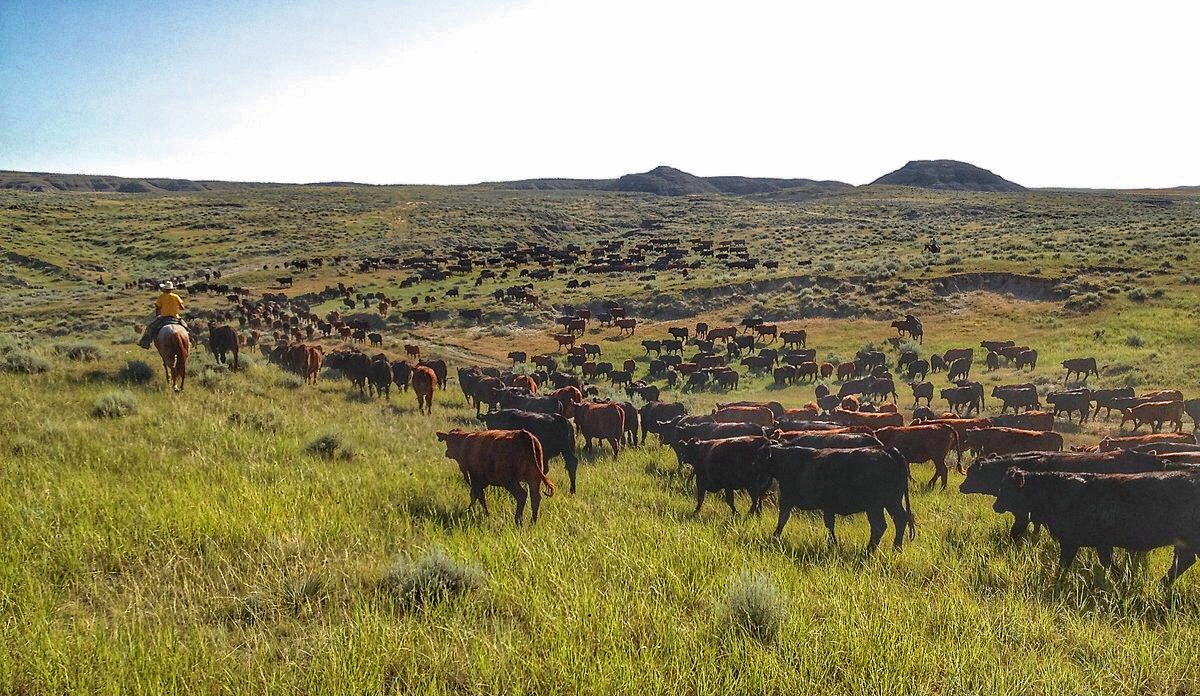
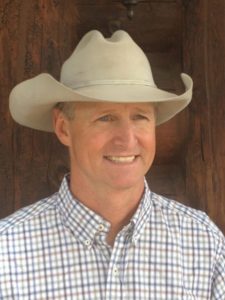
Longtime listeners of the podcast will definitely remember my first interview with Jim Howell—he is a rancher and CEO of Grasslands LLC, a progressive ranch management company with operations in the American West, Florida, and New Zealand. Jim was also a co-founder of the Savory Institute, a non-profit organization that espouses the use of holistic planned grazing to restore healthy grasslands around the world. Having worked close to the land his entire career, Jim has a fascinating personal and professional backstory, so I encourage you to listen to our first episode, if you haven’t already.
Knowing that many Mountain & Prairie podcast listeners either work in ranching or are interested in holistic ranch management, Jim and I decided to have a second conversation focused on more of the nitty gritty details of his process for managing ranches. We discuss a wide range of topics, from how Jim and his investors identify ranches as potential acquisitions to their methods for increasing stocking rates while simultaneously improving the health of the grass. We discuss the intense, focused planning that goes into each operation, and Jim explains how his grazing process translates into increased biodiversity and improved ecological health of the entire landscape. This conversation is like a college class in ranch management, only much more fun and engaging.
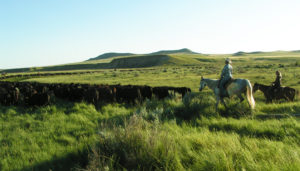
Our conversation revolves around two of Grasslands’ eastern Montana ranches—the 53,000+/- acre Antelope Springs Ranch and the 38,000+/- acre Cinch Buckle Ranch. My Mirr Ranch Group colleague Duffy Brown and I are working with Jim to market both of these ranches, so we’re familiar with the operations and landscapes and understand the amazing results that Jim and his team have been able to achieve. Both ranches serve as excellent case studies of how holistic management can bolster the health of the grass, increase profitability, and be a true winning proposition for the land, animals, and all other stakeholders.
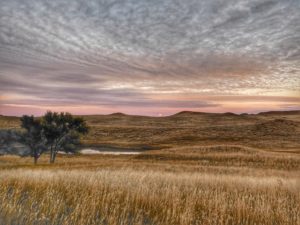
Even if you don’t have a specific interest in ranches or grasslands, you’ll still get a lot out of this episode. Jim has very wise answers to some of the quick questions that I didn’t ask during our first interview, and he offers plenty of great book recommendations, including one book that Jim thinks every college freshman should read. The episode is packed with great information, so don’t forget to check the episode notes. Jim is a hardworking, curious, humble, and smart guy who has managed to create a fulfilling career that’s making the world a better place, so I know you’ll enjoy the conversation.
All photos courtesy of Jim Howell & Grasslands LLC
Click Here to Download on iTunes
—
Click Here to Download on Google Play
—
Click Here to Download on Stitcher
—
Episode Notes
Topics Discussed:
- Jim Howell – first podcast interview
- Jim on Instagram
- Grasslands LLC
- Savory Institute
- Daniella Ibarra-Howell
- For the Love of Land: Global Case Studies of Grazing in Nature’s Image by Jim Howell
- Antelope Springs Ranch
- Cinch Buckle Ranch
- Allan Savory
- Cattle Kingdom by Christopher Knowlton
- The Rise of Theodore Roosevelt by Edmund Morris
- Bad Land by Jonathan Raban
- PastureMap
- Christine Su Podcast Interview
- Cattle Ranches for Investment-Minded Buyers by Ed Roberson
- How to Not Go Broke Ranching by Walt Davis
- Holistic Management by Allan Savory
- No Risk Ranching: Custom Grazing on Leased Land by Greg Judy
- American Serengeti by Dan Flores
- Dan Flores Podcast interview
- Guns, Germs, and Steel by Jared Diamond
Brian Calvert – In-Depth Journalism in the New West
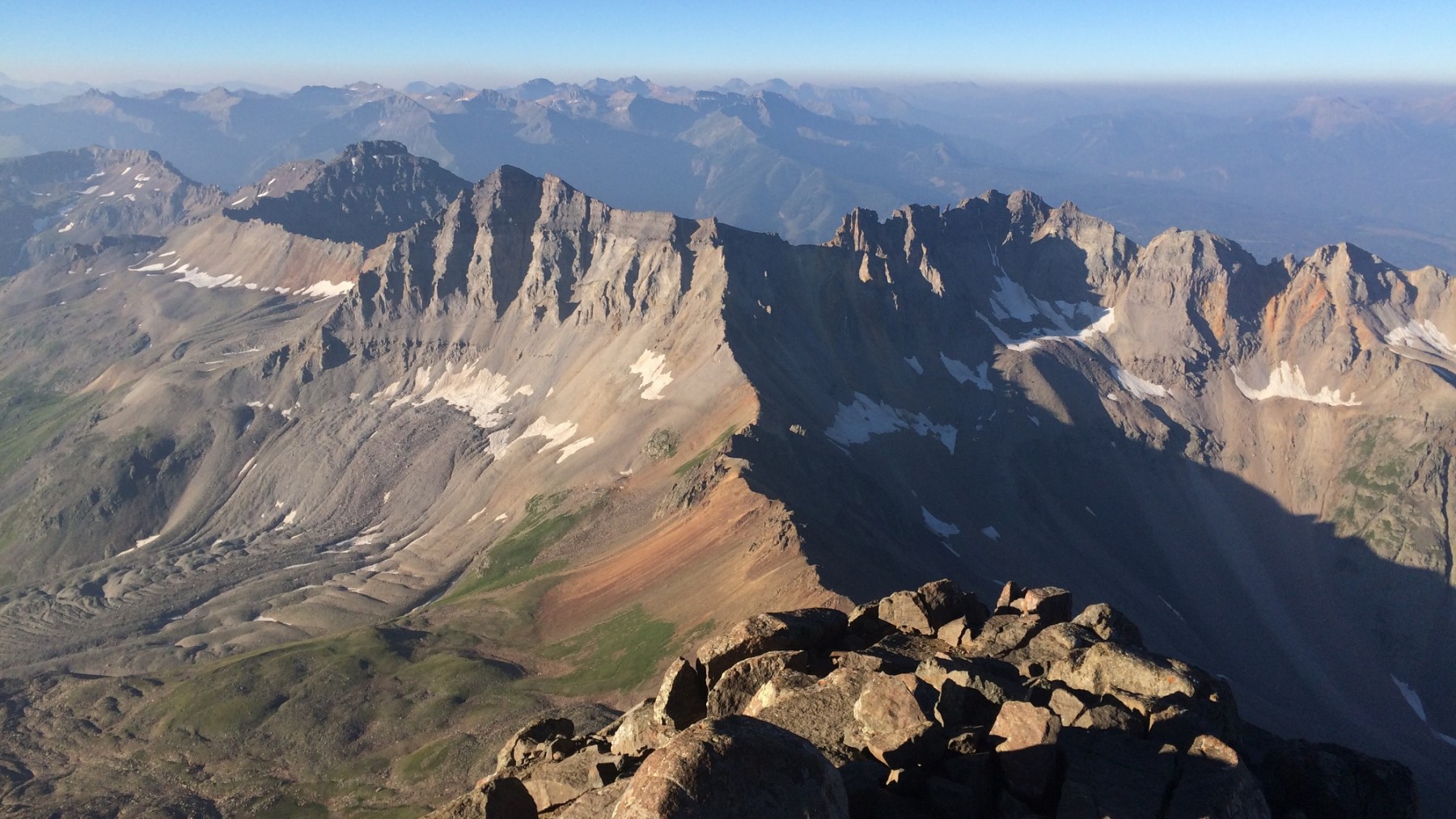
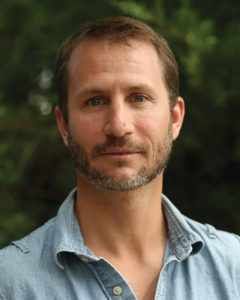
Brian Calvert is the Editor-in-Chief of the High Country News, a non-profit media organization that covers the defining stories of the American West. Since 1970, High Country News has been fully committed to in-depth journalism that explores complex relationships between the West’s communities, business interests, and the natural world. In our current media climate that seems to celebrate surface-level, hastily written news stories, High Country News remains committed to long-form, well-researched, and nuanced explorations of complicated issues.
Brian is a fourth-generation Wyoming native who grew up in Pinedale at the base of the spectacular Wind River Range. A blue-collar upbringing, a stint in the Army, time working in the oil fields, and years spent overseas as a foreign correspondent have given Brian a unique and valuable perspective into the relationship between people and place. This depth of experience allows Brian to approach Western issues with a curious, patient, and balanced style that is becoming more and more rare in today’s media.
I was on Colorado’s Western Slope for work and stopped by the High Country News office in Paonia to chat with Brian. We had a fascinating conversation about the history of High Country News and how its commitment to in-depth journalism is more important now than ever. We discussed Brian’s upbringing in Wyoming, and why he chose to pursue journalism as a career. We talked about his time spent as a foreign correspondent in places like Cambodia, China, and Afghanistan, as well as the lessons he learned from living in such intense and sometimes dangerous environments. And as you’ve come to expect, we discussed his favorite books, authors, and places in the American West.
There’s a lot to learn in this episode, so please check out the episode notes for links to everything we discuss. Also, please visit the High Country News website or consider ordering a print subscription. Brian and his team are doing important work that deserves support from thoughtful, curious folks like the listeners of this podcast. Enjoy!
Headshot courtesy of Brian Calvert
Click Here to Download on iTunes
—
Click Here to Download on Google Play
—
Click Here to Download on Stitcher
—
Episode Notes
Topics Discussed:
3:15 – History of the High Country News
5:30 – Moving HCN to Paonia
7:00 – HCN’s non-profit model
12:15 – Current shifts in modern journalism
15:30 – Challenges of producing in-depth news in the age of Twitter
21:40 – Thoughts on the rawness of the West
24:00 – Brian’s early years in Pinedale
26:25 – Joining the Army and National Guard
27:00 – Desire to write and see the world
28:20 – Adventurous childhood
30:45 – From college to foreign correspondent
33:33 – Working in Cambodia
35:20 – Where Brian was on 9/11
36:30 – Moving back to WY and working in the oil fields
40:55 – Scary events overseas
45:00 – Adjusting to US after life in war zones
47:00 – Learning to surf and surfing as a healing process
49:45 – Being selected for the Ted Scripps Fellowship
51:00 – Opportunity at HCN
53:20 – In-depth journalism in the era of “fake news”
55:25 – Importance of high values in unbiased journalism
1:00:00 – Importance of considering all sides of arguments
1:02:15 – Role of HCN in journalism for a diverse readership
1:05:30 – Favorite books about the West
1:07:50 – The American West as an idea
1:11:30 – Interesting and weird hobbies
1:12:25 – Poetry
1:14:20 – Favorite location in the West
1:15:35 – Best advice ever receive
1:16:00 – Request of the listeners
1:17:00 – Connect with Brian
- Brian Calvert
- High Country News
- Paonia, Colorado
- Ted Scripps Fellowship
- Legend of Colton H Bryant by Alexandra Fuller
- Little Big Man by Thomas Berger
- Angle of Repose by Wallace Stegner
- Bless Me, Ultima by Rudolfo Anaya
- All the Wild That Remains by David Gessner
- Indigenous Peoples’ History of the United States by Roxanne Dunbar-Ortiz
- The Legacy of Conquest by Patricia Nelson Limerick
- Charles Wilkenson
- Blood Struggle by Charles Wilkenson
- Crossing the Next Meridian by Charles Wilkenson
- Robinson Jeffers
- Robert Frost
Christine Su – The Business of Healthy Grasslands
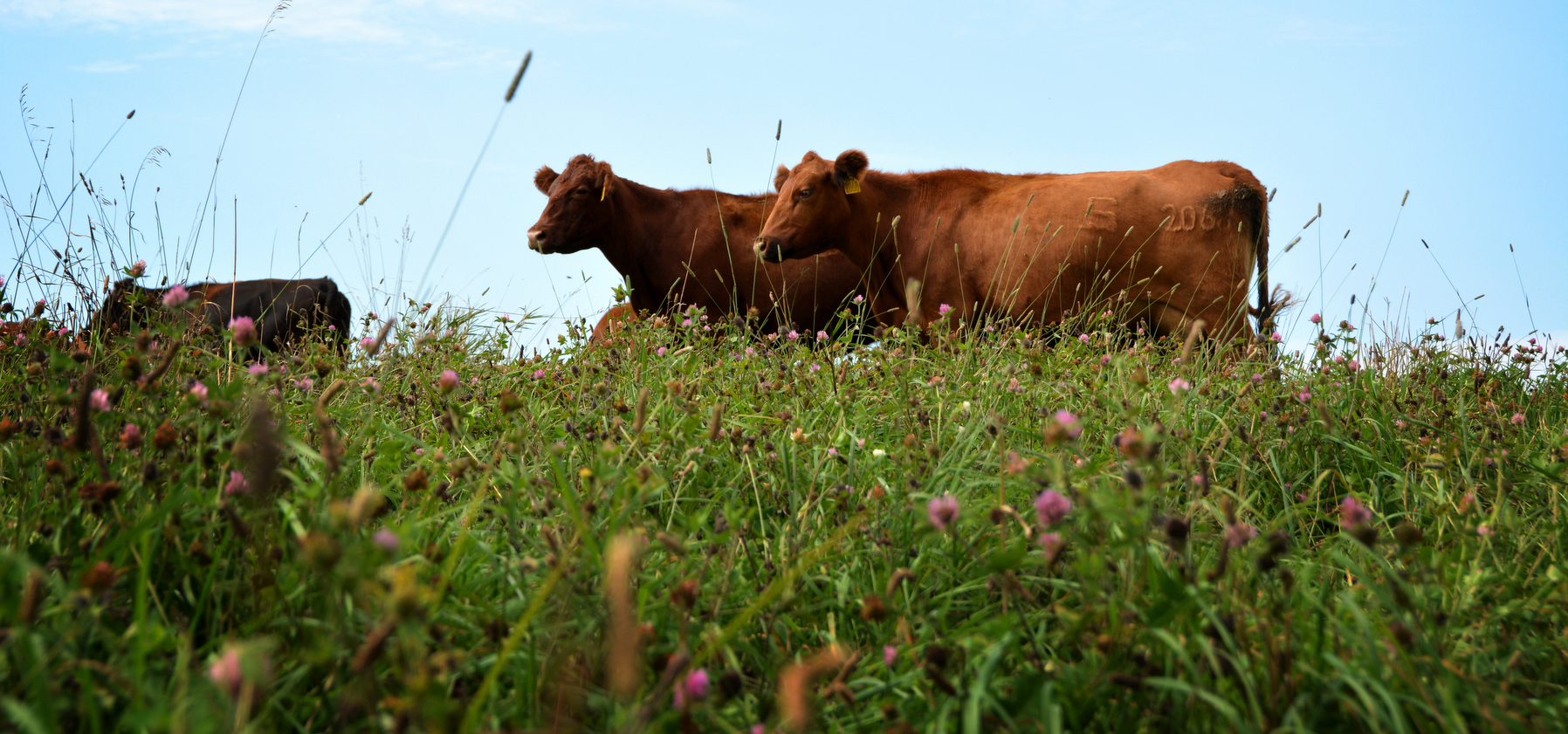

Christine Su is an entrepreneur and CEO of PastureMap, a Silicon Valley startup that creates cutting-edge ranch management software. PastureMap helps ranchers plan grazing, track forage, monitor herd performance, manage record keeping, and much more, all with the goal of saving ranchers time and making their operations more profitable. In the business of ranching—one that has not changed much in the past 100 years—PastureMap is a true breakthrough, and Christine’s innovative mindset and infectious enthusiasm are two of the root drivers of the company’s success.
Christine grew up in an entrepreneurial family, and she has had a lifelong curiosity about agriculture and the importance of food production. After building an impressive resume that includes undergraduate and graduate degrees from Stanford, a stint at McKinsey & Company, and experience in private equity, Christine combined her business expertise with her passion for agriculture to form PastureMap. PastureMap makes active or holistic management a more realistic option for ranchers, creating ripple effects far beyond the ranchers’ bottom lines—healthier grass, increased biodiversity, stronger communities, and continued viable domestic food production.
As you’ll hear in our conversation, Christine is a truly dynamic person whose passion for agriculture is matched by her intellect and entrepreneurial acumen. We cover all the details of PastureMap and how she built the business from a simple idea to a successful enterprise. We discuss her personal background and why she initially became so curious about agriculture around the world. We also chat about the ins and outs of active ranch management, and how a holistic approach to grazing can have far-reaching benefits beyond agriculture. As you’d expect, Christine also has plenty of excellent book recommendations related to agriculture, which I know you will enjoy.
For all of you ranchers out there, Christine is offering a 10% off coupon for a year’s subscription to PastureMap, and you can claim it by using the code “PRAIRIE” on the PastureMap website. Check out the episode notes for all the details. But whether you’re a rancher or not, I hope you’ll enjoy this episode. Christine is a perfect example of someone who has merged her passion and expertise into a financially successful business that is making the world a better place. Enjoy!
All photos courtesy of Christine Su
Click Here to Download on iTunes
—
Click Here to Download on Google Play
—
Click Here to Download on Stitcher
—
Episode Notes
Topics Discussed:
5:10 – How Christine came up with the idea for PastureMap
7:10 – Decision to take a break from business to work on a farm
9:45 – The importance of working ranches for healthy grasslands and a healthy planet
12:50 – Explaining grazing to environmentalists
15:30 – Impactful books about grazing
17:30 – Helping ranchers to see the value of PastureMap
20:20 – PastureMaps success stories
24:00 – How Christine expects PastureMap to evolve in the coming years
28:35 – Christine’s childhood and father’s entrepreneurial ventures
30:20 – Goals when entering Stanford
32:10 – Biggest surprise of entreprenuership
34:45 – Of all sectors, why Christine focused her start up on agriculture
37:55 – Heroes and mentors in the ag world
39:50 – Heroes of the business world
42:10 – Life lessons learned from working with agricultural producers
45:15 – Favorite books
46:15 – Favorite films
47:35 – Christine’s hobbies, including jumping in cold water
50:00 – Most powerful experience in the outdoors
52:10 – Favorite place in the West
52:50 – Best advice she’s ever received
53:20 – Request of the listeners
54:08 – Connect with Christine and PastureMap
- PastureMap
- Use discount code “PRAIRIE” to receive 10% off a base subscription!
- Defending Beef by Nicolette Hahn Niman
- Cows Save the Planet by Judith D. Schwartz
- Joel Salatin
- The Third Plate by Dan Barber
- David Montgomery
- Holistic Management by Allan Savory
- Dr. Allan Williams
- Todd Churchhill
- Russ Conser
- Wayne Rasmussen
- Grassfed Exchange
- Josh Reeves, Gusto CEO
- Angle of Repose by Wallace Stegner
- Wendell Berry
- Lentil Underground Liz Carlisle
- In the Mood for Love film
- Rotten on Netflix
- Jim Howell Podcast
Robert Krapfel – On Living A Purpose-Driven Life
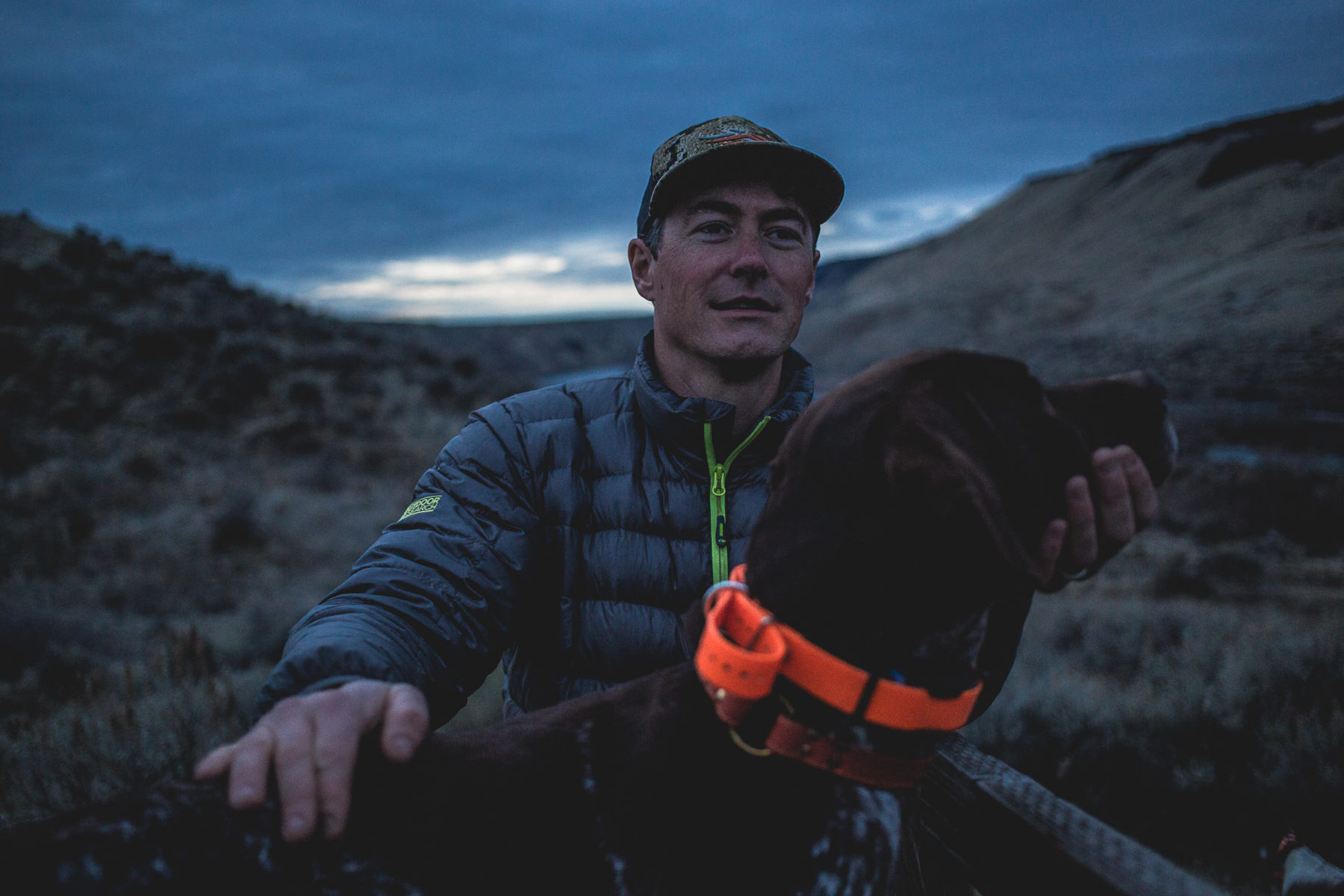
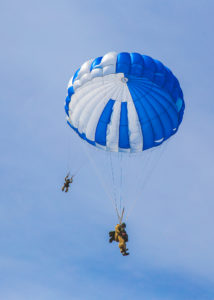
Robert Krapfel is a US Forest Service smokejumper—a member of the elite team of wildland firefighters who parachute into remote, burning landscapes to control some of our country’s most intense forest fires. Prior to joining the smokejumpers, Robert was a fish biologist with the US Fish and Wildlife Service, where he worked on restoring several species of fish in the lower Colorado River system. You may also know Robert as the husband of my previous guest Jillian Lukiwski, and if so, you’ve likely admired stunning photographs of them fishing, hunting, and exploring far-flung corners of the American West.
Growing up in Northern California, Robert was always focused on pushing himself hard in the outdoors, learning new skills, and establishing a sense of self-sufficiency in wild places. As a teenager, he taught himself to fish and hunt, and early in his career, he learned how to operate heavy machinery while rebuilding a remote government satellite station in the Arizona desert. Robert’s intense curiosity and action-oriented mindset have allowed him to build a life centered around adventure and rugged landscapes, while simultaneously being of service to our country and stewarding the forests of the West.
Because Robert has almost no social media presence, not many people outside his immediate circle of friends and family truly grasp what a unique life he leads, nor do they understand the vital role he played in the creation of Jillian’s blog and jewelry business, The Noisy Plume. Robert and Jillian are true partners in every sense of the word, and their approach to business, adventure, and living an authentic, purpose-driven life can be instructive for couples and individuals alike. They pursue their goals as a team and have sacrificed much along the way to turn their dreams into realities.
Robert is a perfect guest for this podcast, because his career and interests touch on almost everything that fascinates me—the West, adventure, service, creativity, hunting, fishing, travel, conservation, ecology, and plenty more. We obviously cover a lot in this episode, including the ins and outs of his becoming a smokejumper and his scariest experience while fighting fires. We discuss his work as a fish biologist, and how he and Jillian spent a year living in the Arizona desert in a rat-infested trailer. Robert also has a unique educational background, which we discuss in detail. And of course we talk about the creation of the Noisy Plume, and how Jillian’s and his vision for the project has evolved over time. And for a podcast that is always heavy on book recommendations, this episode is particularly full of good titles.
This is a great episode, so I know you’ll enjoy it. As I mentioned, Robert isn’t on social media, but you can catch glimpses of him every now and then on Jillian’s Instagram account, so be sure to follow her at @thenoisyplume. Enjoy!
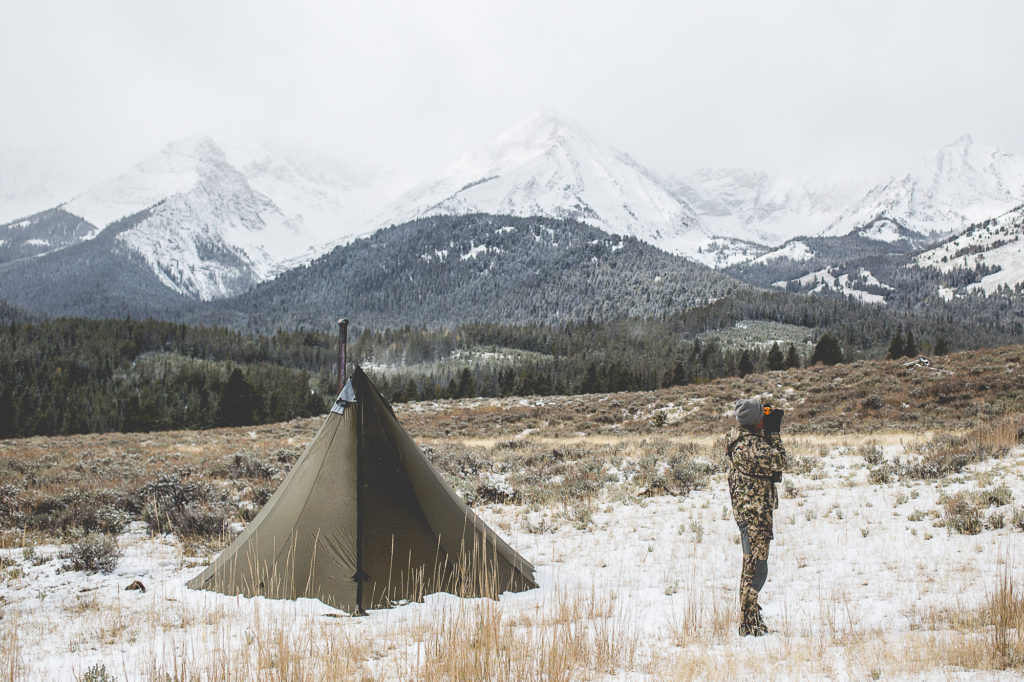
All photos courtesy of Jillian Lukiwski
Click Here to Download on iTunes
—
Click Here to Download on Google Play
—
Click Here to Download on Stitcher
—
Episode Notes
Topics Discussed:
5:50 – How he got involved in smokejumping
8:00 – How smokejumpers are selected
10:00 – Importance of integrity in smokejumping
11:20 – Robert’s desire to challenge himself physically and mentally
13:10 – Growing up in northern California
13:55 – Teaching himself to fish and hunt
16:10 – Importance of learning by doing
17:20 – Robert’s educational path
18:40 – College in Alaska
19:20 – Decision to attend Bible college in Montana
20:50 – Train jumping in Montana (and the ensuing accident!)
25:00 – Recovering from a broken back
27:00 – Finishing school at Wheaton College
28:00 – College versus all of Robert’s varied interests
28:40 – Eloping with Jillian
30:40 – Working as a fish biologist
32:20 – Moving to a satellite station in the desert
33:00 – Endangered fish in the lower Colorado
35:00 – Arriving at the abandoned, rat-crap covered trailer
37:20 – Lessons learned from the time in Arizona
39:25 – Marriage benefits of living in stressful conditions
40:30 – Robert’s role in the creation of The Noisy Plume
43:20 – Original versus current vision for The Noisy Plume
46:25 – The importance of authenticity
47:00 – Why Robert avoids social media
48:25 – Robert’s choice to leave biology and focus completely on fire
50:30 – Rookie smokejumper training
54:30 – Tree climbing as a scary aspect of smokejumping
56:30 – Scariest experience fighting fires
1:02:30 – Readjusting to life after fire season
1:04:50 – Good books about fire
1:06:00 – Best biology books
1:08:30 – Favorite books about the West
1:10:50 – Favorite documentaries and films
1:12:50 – Unexpected hobbies
1:13:45 – Most powerful experience in the outdoors
1:15:40 – Favorite location in the West
1:17:45 – Best advice ever received
1:18:45 – Request of the listeners
- The Noisy Plume
- Youth by Joseph Conrad* (*When Robert refers to Conrad’s Typhoon, he actually meant this this book, Youth)
- US Forest Service Smokejumpers
- US Fish and Wildlife Service
- Young Men and Fire by Norman Maclean
- Razorback suckers
- Bonytail chub
- Tribe by Sebastian Junger
- The Big Burn by Timothy Egan
- John Muir
- Annie Dillard
- Seeing Nature by Paul Krafel
- Little Britches by Ralph Moody
- Laura Ingalls Wilder (Little House series)
- Zane Gray
- Always
- Road House (aka The Greatest Movie of All Time)
- Dolly Parton
- Jillian Lekiwski on Instagram
Profitable Ranching & Grassland Restoration in Eastern Montana
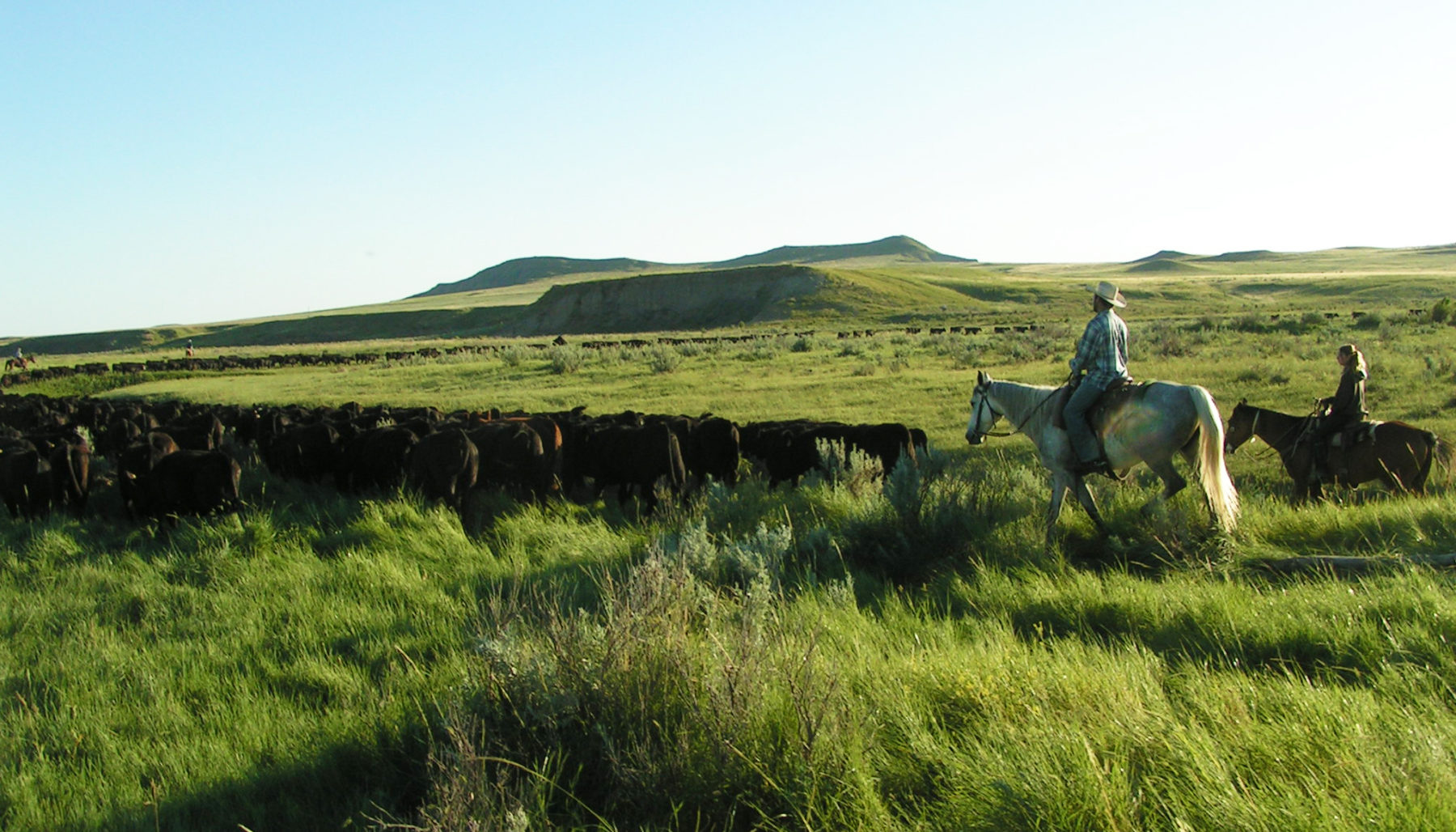
Head over to the Mirr Ranch Group blog to read more about the unique investment value of Cinch Buckle and Antelope Springs Ranches. Not only can buyers expect predictable financial returns, but they can also enjoy the satisfaction of knowing that they are bolstering a massive swath of prairie grasslands—healing the land, increasing biodiversity, and sequestering carbon from the atmosphere.
Cattle Ranches for Investment-Minded Buyers
“The Cinch Buckle and Antelope Springs Ranches are managed by Grasslands, LLC, a renowned ranch management company and global leader in Holistic Planned Grazing. On both ranches, Grasslands’ focused management techniques have restored the grasses and strengthened the landscapes’ overall ecological diversity, leading to increased livestock capacity on both ranches. The increased capacity, combined with Grasslands’ extensive investment in water infrastructure and ranch improvements, has allowed them to enjoy a level of profitability that would have been unimaginable on these ranches years ago.”
Book Club Selection: “American Wolf” by Nate Blakeslee

January-February Book Club Selection: “American Wolf” by Nate Blakeslee
During my podcast interview with renowned historian and author Dan Flores, I asked him to name his favorite books about the American West. He mentioned several classics, and then went on to describe in glowing terms a not-yet-released book about wolves in the Greater Yellowstone Ecosystem. Dan, the author of two of my all-time favorites—Coyote America and American Serengeti—described the book as “The Game of Thrones story of modern western wolves, [unfolding] in just as riveting a fashion. It is an absolutely mesmerizing read.”
The book has since been released, and if it’s is good enough for Dan, it’s good enough for us! So the January-February 2018 selection for the Mountain & Prairie Book Club is:
American Wolf: A True Story of Survival and Obsession in the West by Nate Blakeslee
Wolves are a delicate subject here in the West, and most discussions of the legendary canine are sure to evoke strong reactions from anyone connected to the region. The animal and its influence touch almost every aspect of life in the West, including agriculture, hunting, conservation, ecology, government, sociology, tourism, and environmentalism, just to name a few. It’s difficult to understand the modern-day West without understanding wolves, so this should be an interesting and informative read.
Given the lightening-rod status of wolves in the West, this book selection and the ensuing discussion will serve as a revealing test case to determine if this book club will be a civil and productive endeavor. As you know, the Mountain & Prairie Book Club only has one rule: Be Nice. Please keep that front of mind as you read and discuss with the group. We all love the West and are here to learn from each other, so please Be Nice.
If you’d like to participate:
- Grab a copy of American Wolf — purchase it from Amazon or your local bookseller, or check it out from your local library. Start reading it.
- Head over to our Goodreads Group. Create an account, then join in the conversation in the online discussion forum. As you read, give your feedback on the book, pose questions to the group, and share your first-hand experience with wolves in the West. The only way this works is with lot of participation from lots of people, so the more the better.
- Keep your eyes peeled for an announcement on Goodreads regarding a live online discussion of the book via Google Hangouts. The number of video participants will be limited to 25, but any number of people can interact with the discussion by typing. This event will likely happen the second full week of March, and I will set the exact date and time in late-February.
- We’ll usually have two full months to read the selected book, but since we’re starting in late January, we’ll be on a modified schedule for American Wolf. From now until the group discussion in mid-March, you’ll have 6+/- weeks to read the book. In the future, count on 8+/- weeks per book. (We’re expecting our second child to arrive in late March, so I want to have one full reading-discussion cycle complete prior to her birth and resulting crazy schedule. Thanks for understanding.)
Mountain & Prairie Book Club – Goodreads Group
Not interested in wolves or American Wolf? Then get started on the March-April Book Club selection: All the Wild That Remains: Edward Abbey, Wallace Stegner, and the American West by David Gessner. The official announcement will be in early March.
Jillian Lukiwski – Art and Adventure in the American West

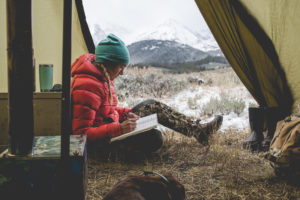
Jillian Lukiwski is a writer, photographer, and silversmith who lives near the banks of the Snake River in south central Idaho. Her quiet confidence and deliberate approach to living have allowed Jillian to blaze her own trail, creating a rewarding career and an authentic life centered around Idaho’s unique landscape. When not working, Jillian and her husband Robert enjoy the western lifestyle from every imaginable angle—bird hunting with their german shorthair pointers, big game hunting, fishing, running, horseback riding, mountain biking, caring for their farm animals, and cultivating their land, to name a few.
Big western landscapes have always been an important part of Jillian’s life—her father worked for Canada’s National Park Service, so she was raised with a deep appreciation for the outdoors and adventure. From an early age, she was riding—and falling off of—horses, shadowing her father in the backcountry, and building a personal foundation of self-sufficiency and toughness. As a young woman, she applied that ingrained tenacity to writing, photography, and creating jewelry, and has since built a loyal following of admirers and customers around the world through her website, The Noisy Plume.
We had a fun conversation and managed to cover a wide range of interesting topics. We discussed her life path that eventually landed her in southeastern Idaho, and we chatted about the unique nature of that region. We talked about her creative process, how she’s been mostly self-taught in all of her art forms, and how she is able to manage the distractions of social media and the online world. We chatted about the importance of being uncomfortable, and how self-imposed physical and mental challenges can help to inoculate yourself against the inevitable difficulties of life. Jillian is a voracious reader, so we had a great discussion about books, as well as how reading has contributed to her success as a writer. Be sure to check the episode notes for a full list of everything we discussed.
This was a fun and inspiring interview, and I hope you enjoy the conversation as much as I did!
All photos courtesy of Jillian Lukiwski
Click Here to Download on iTunes
—
Click Here to Download on Google Play
—
Click Here to Download on Stitcher
—
Episode Notes
Topics Discussed:
3:20 – Jillian’s home in Idaho
4:40 – How she ended up in southeastern Idaho
7:00 – Description of Pocatello and the surrounding landscape
9:10 – Growing up in Canada’s National Parks
10:50 – Childhood in the outdoors
13:00 – Lessons i toughness learned from her father
16:40 – Jillian’s university experience
18:50 – Jillian’s drive to be her own boss
19:45 – Her early attraction to jewelry
21:00 – First silversmithing class
22:50 – Being a self-taught artist
24:25 – Her quest for original ideas
26:20 – Avoiding social media distraction
28:20 – Daily routines and must-do activities
31:10 – Running
35:20 – Hunting and her relationship with her bird dogs
40:00 – The reality of posting hunting images on social media
44:10 – Why Jillian seeks out discomfort
48:35 – Stories of suffering and benefits of those experiences
50:30 – Advice for those seeking a life similar to Jillian’s
52:15 – Favorite books
56:20 – How reading has affected her writing
59:45 – More books
1:01:00 – Favorite movies
1:03:15 – Unexpected talents
1:04:30 – Most powerful experience in the outdoors
1:06:45 – Favorite location in the West
1:09:20 – Biggest challenge facing the West
1:12:00 – Jillian’s request of the listeners
1:12:59 – Connect with Jillian online
- The Noisy Plume
- Jillian on Instagram
- Pocatello, Idaho
- Canadian National Parks
- The Wolf in the Parlor by Jon Franklin
- Alpha film trailer
- And So I Hunt by Jillian Lukiwski
- Ladies of the Canyons by Lesley Poling-Kempes
- Two in the Far North by Margaret Murie
- Claiming Ground by Laura Bell
- Ernest Hemingway
- Mary Oliver
- Dakota by Kathleen Norris
- The Cloister Walk by Kathleen Norris
- Where the Rivers Change by Mark Spragg (this is the one we couldn’t remember the name of)
- Unbranded
- Ben Masters podcast interview
- The River and The Wall
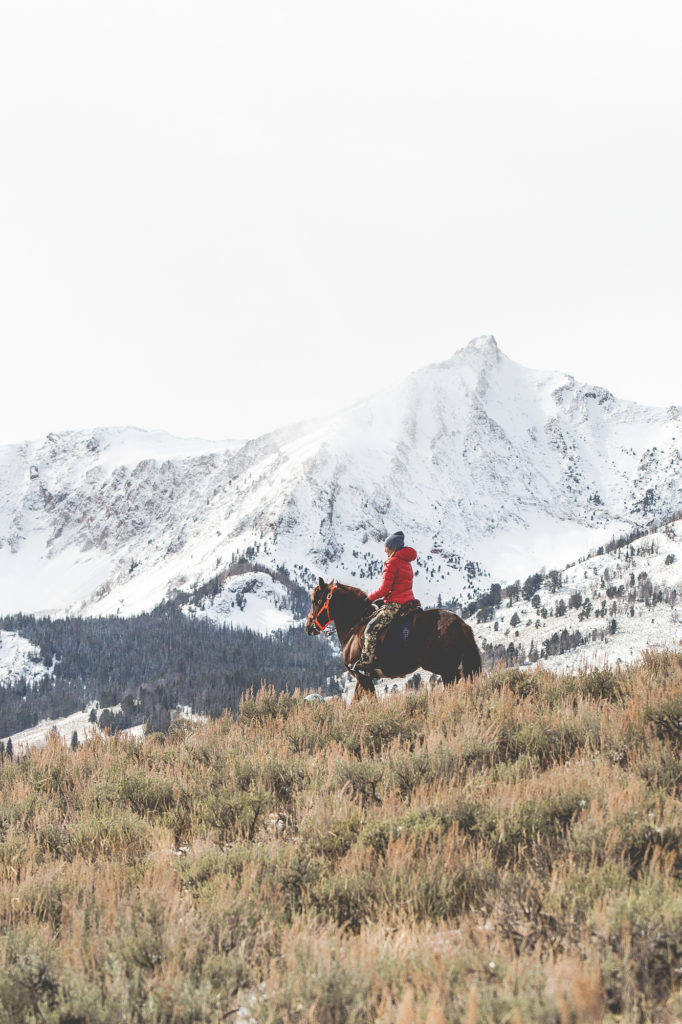
Thoughts While Driving Through South Park

Last night’s sunset in South Park, Colorado
South Park, Colorado. A 1,000-square mile high-altitude basin. Expansive grasslands surrounded by towering snow-capped peaks, located just 70 miles west of the booming Denver metro area. In early summer, South Park is one of the most stunning landscapes in all the West—lush emerald meadows, herds of grazing deer, elk, and pronghorn, and cascading snowmelt that forms the headwaters of the South Platte River. In winter, it’s not for the faint of heart—sub-zero temperatures for days on end, gales that regularly knock 18 wheelers on their side, and blowing snow that reduces visibility to nothing.
Like most resource-rich areas of the West, South Park’s human history has been, and continues to be, one of conflict and conquest. The Utes and the Arapahos fought to control the basin’s rich hunting grounds. Then came the French and Spanish trappers whose insatiable appetite for beaver pelts all but eliminated the species from the basin. They were followed by miners, who were followed by ranchers, who were followed by developers, who were followed by present-day water speculators, all competing to squeeze a profit out of a delicate ecosystem with limited resources.
So who’s right and who’s wrong? Who deserves to capitalize on South Park’s resources and who doesn’t? Your answer likely depends on your upbringing, who pays your salary, your political leanings, what you do for fun, and an unknowable number of variables that make you a unique human. I have my opinions, but if I fed my family by working in the mining industry, would I feel differently? Probably so.
There are no simple, Twitter-length solutions to South Park’s challenges, or to the challenges of the American West. It’s a complicated and messy place—has been and always will be. But personal experience has shown me that most of us who love the West share more commonalities than differences, no matter our backgrounds or politics. Keep reading deeply, being curious, seeking out opinions different from your own. We’re all in this together, so we best start focusing on the common ground.
Book recommendation for further reading: Bayou Salado: The Story of South Park by Virginia McConnell Simmons
Photo and text republished from the Mountain & Prairie Instagram account.
My 10 Favorite Books of 2017
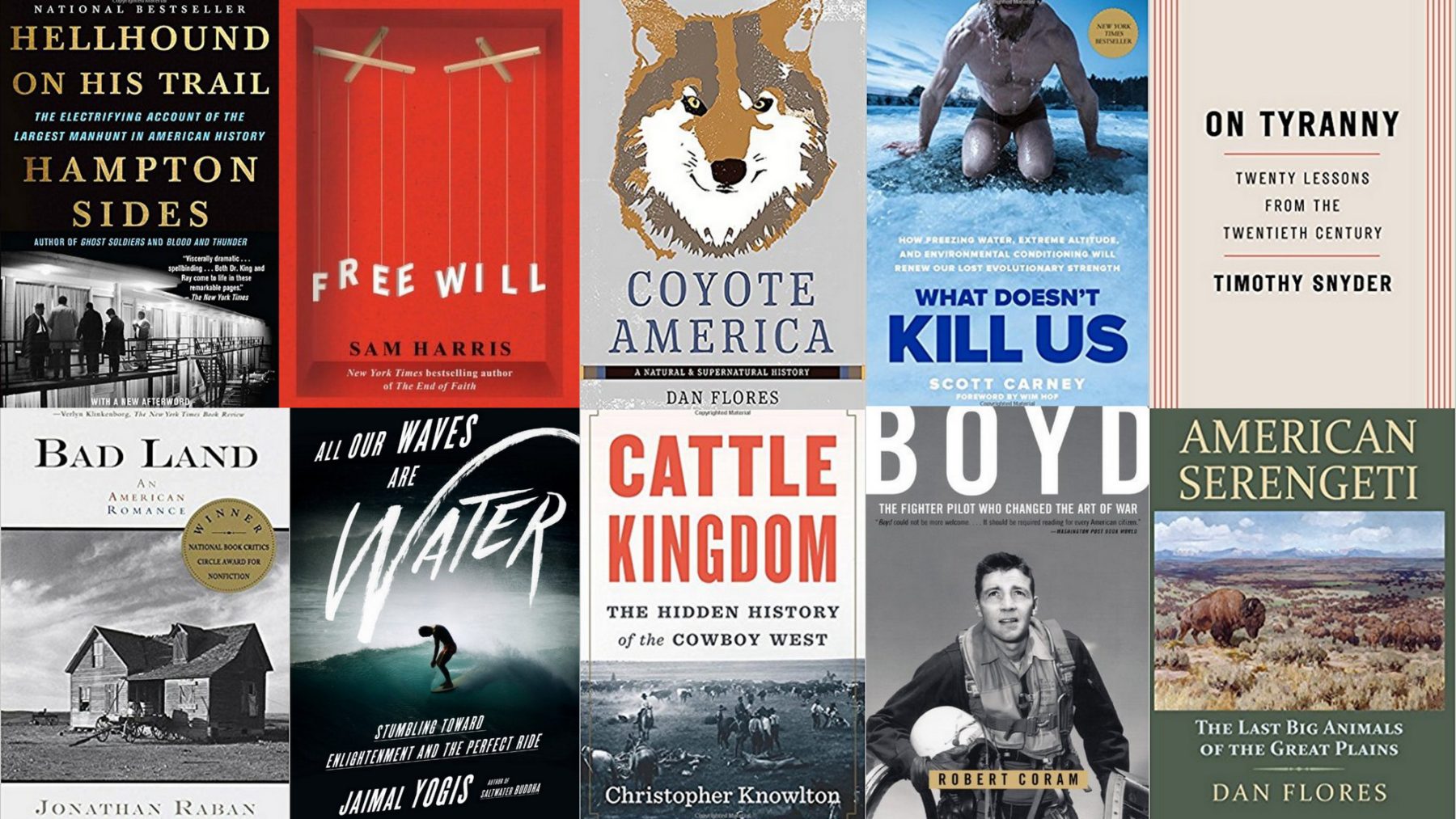
My 10 Favorite Books of 2017
2017 was a solid year of reading that played out even better than expected—I discovered some older titles that I should’ve read long ago, enjoyed some new releases that I’d been anxiously awaiting, and had the opportunity to meet and chat with several of my favorite authors. As usual, the books’ subjects varied widely, and I hard-headedly stuck to 100% non-fiction.
It was difficult (silly? pointless?) to try and pick the absolute best books I read last year, but below, in no particular order, is my feeble attempt at My 10 Favorite Books of 2017:
Cattle Kingdom: The Hidden History of the Cowboy West by Christopher Knowlton – The most entertaining and comprehensive history of cattle ranching in the American West that I’ve ever read… and I’ve read a lot on this subject. (November/December list)
Bad Land: An American Romance by Jonathan Raban – Interesting and new (to me) insights into the settlement of Montana’s eastern Great Plains, with an eye-opening emphasis on the role that corporations and the government played in convincing (i.e. tricking) would-be settlers to head West. (September/October list)
American Serengeti: The Last Big Animals of the Great Plains by Dan Flores – A “biography” of North American megafauna, including pronghorn, coyotes, horses, grizzlies, bison, and wolves. A must read for anyone who loves the American West. (July/August list)
Coyote America: A Natural and Supernatural History by Dan Flores – Coyotes are the most scorned large mammal in North America, yet they’re surprisingly the most human-like in their behavior. A wonderful overview of this fascinating animal and its complicated relationship with us humans. (May/June list)
On Tyranny: Twenty Lessons from the Twentieth Century by Timothy Snyder – A short and to-the-point historical examination of how well-meaning countries fell prey to fascist rulers and tyrannical governments. Timely reading in this day and age. (July/August list)
All Waves are Water: Stumbling Toward Enlightenment and the Perfect Ride by Jaimal Yogis – Part memoir, part meditation manifesto, and part surf travelogue, Yogis nails it again with his follow-up to one of my all-time favorites, Saltwater Buddha. (July/August list)
Free Will by Sam Harris – Harris argues that free will is an illusion and that no one is truly in control of themselves or their actions. I don’t want to believe this, but, despite my best efforts, it’s tough for me to poke holes in his rationale. (September/October list)
What Doesn’t Kill Us: How Freezing Water, Extreme Altitude and Environmental Conditioning Will Renew Our Lost Evolutionary Strength by Scott Carney – Since reading this book, I’ve taken a freezing-cold shower every day. And even after pushing the breathing exercises a little too far, passing out, and “bumping” my face on the floor, I’m still a huge fan! (March/April list)
Hellhound on his Trail: An Electrifying Account of the Largest Manhunt in American History by Hampton Sides – The true story of the nutjob loner who assassinated Martin Luther King Jr. and the ensuing international manhunt that followed. Hampton Sides never disappoints. (January/February list)
Boyd: The Fighter Pilot Who Changed the Art of War by Robert Coram – A deep dive into the mind of an obsessed, unconventional, take-no-shit-from-anybody soldier, whose commitment to his craft changed the course of US military history. (March/April list)
Matt Barber & Joel Doub – Stewards of a Fly Fishing Legacy
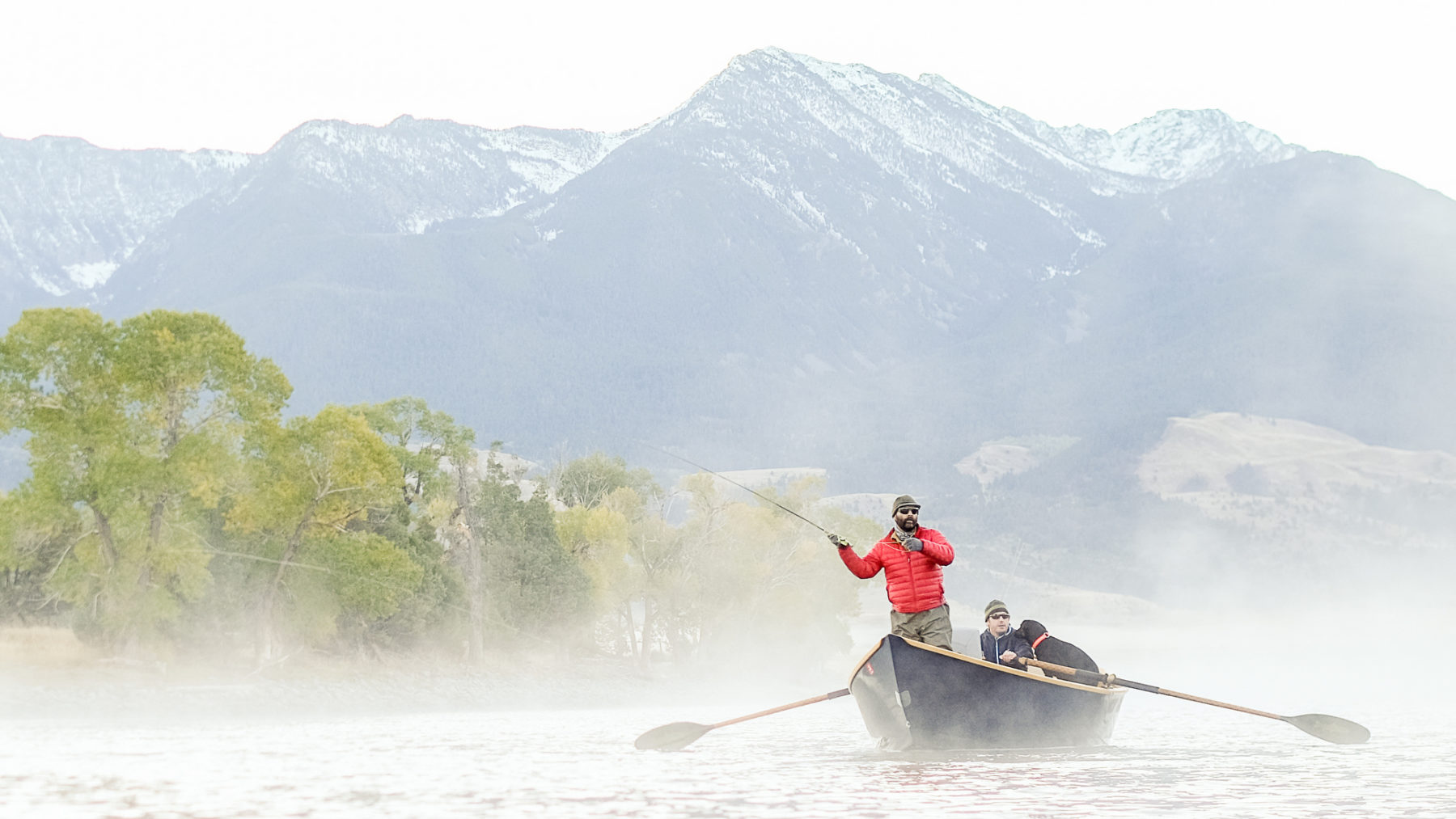
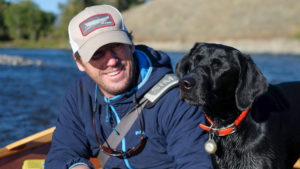
Matt Barber and Joel Doub are the owners of Tom Morgan Rodsmiths, a Bozeman-based fly rod company known for its unyielding commitment to quality, craftsmanship, and enduring performance. The duo purchased the company in early 2017 from Tom Morgan, a fly fishing legend who, along with his wife Gerri, built the company into one of the world’s most unique and renowned rod builders. Rather than focus on the latest fads or selling a high volume of products, Tom was dedicated solely to building the highest quality rod, one that could be passed on from generation to generation, decade after decade.
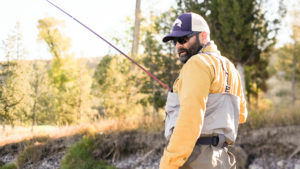
You may be surprised to learn that Matt and Joel are not fishing industry veterans—their previous careers were in education and medical device sales, respectively. But when Tom Morgan decided to sell the company, Matt and Joel’s passion for fly fishing, their willingness to learn from the best, and their commitment to continuing the company’s legacy allowed them to stand out from the crowd of competing buyers. To everyone’s dismay, Tom passed away unexpectedly soon after the sale of the company, but only after imparting his wisdom, craftsmanship secrets, and high standards to Matt and Joel. Building on Tom and Gerri’s rock-solid foundation, the company is now entering its next phase, and the future has never looked brighter.
Matt and Joel were in Denver for the annual Fly Fishing Show, so we met up to chat about the company and their journey into fly fishing entrepreneurship. We talked at length about Tom and his laser-like focus on quality, and how he was willing to snap a rod in half if it did not meet his high standards. We chatted about the “secret” to making these rods, which mostly boils down to being willing to work harder than anyone else. We talk about Tom’s unique partnership with his wife Gerri, and how the couple went about transferring decades of knowledge and experience to Matt and Joel. We discuss the company’s unique business model, and how it flies in the face of most mainstream, MBA business theories. And as usual, we discuss favorite books, films, crazy outdoor experiences, and plenty more.
This was a very fun conversation, and I’m excited to watch the company continue to grow and thrive under Matt and Joel’s ownership. Be sure to check out the episode notes for everything we discuss, and follow Tom Morgan Rodsmiths on Instagram and other social media. Enjoy!
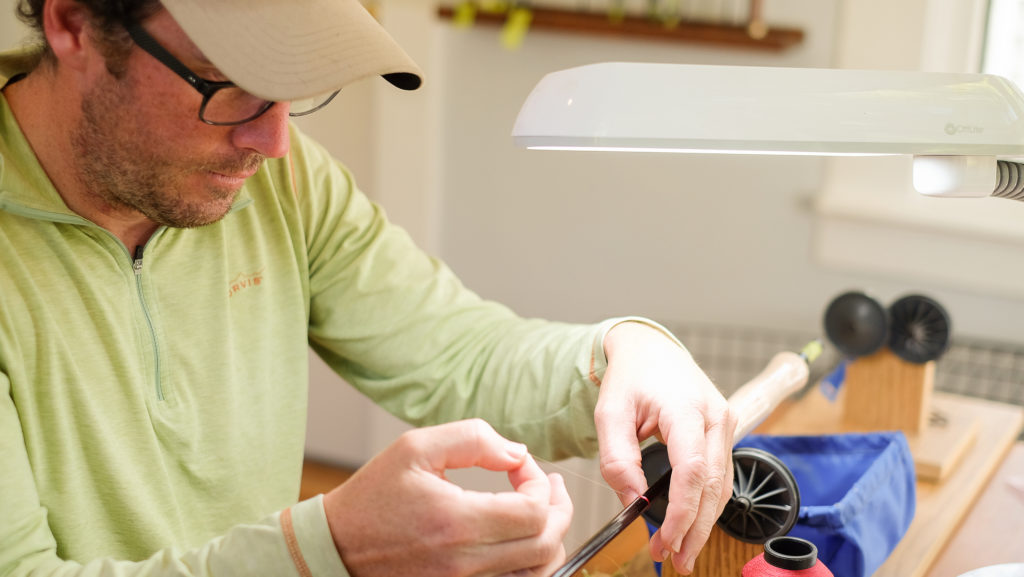
All photos courtesy of Paige McAfee
Click Here to Download on iTunes
—
Click Here to Download on Google Play
—
Click Here to Download on Stitcher
—
Episode Notes
Topics Discussed:
- Tom Morgan Rodsmiths
- Tom Morgan Rodsmiths on Instagram & Facebook
- Denver Fly Fishing Show
- Winston Fly Rods
- Limmer Boots
- Yvon Chouinard
- Power of Habit by Charles Duhigg
- Cate Havstad interview
- The O’Dell
- Duke Beardsley
- Duke Beardsley interview
- Casting for Recovery
- G Loomis
- Wallace Stegner
- Angle of Repose by Wallace Stegner
- The River Why by David James Duncan
- Cormac McCarthy
- All the Pretty Horses by Cormac McCarthy
- A River Runs Through It by Norman Maclean
- Platoon
- I Like Killing Flies
- Rivers and Tides
- Jim Howell interview
- Mark Maggiori interview
- Article from The Drake Magazine
Cate Havstad – Cultivating Creativity & Craftsmanship
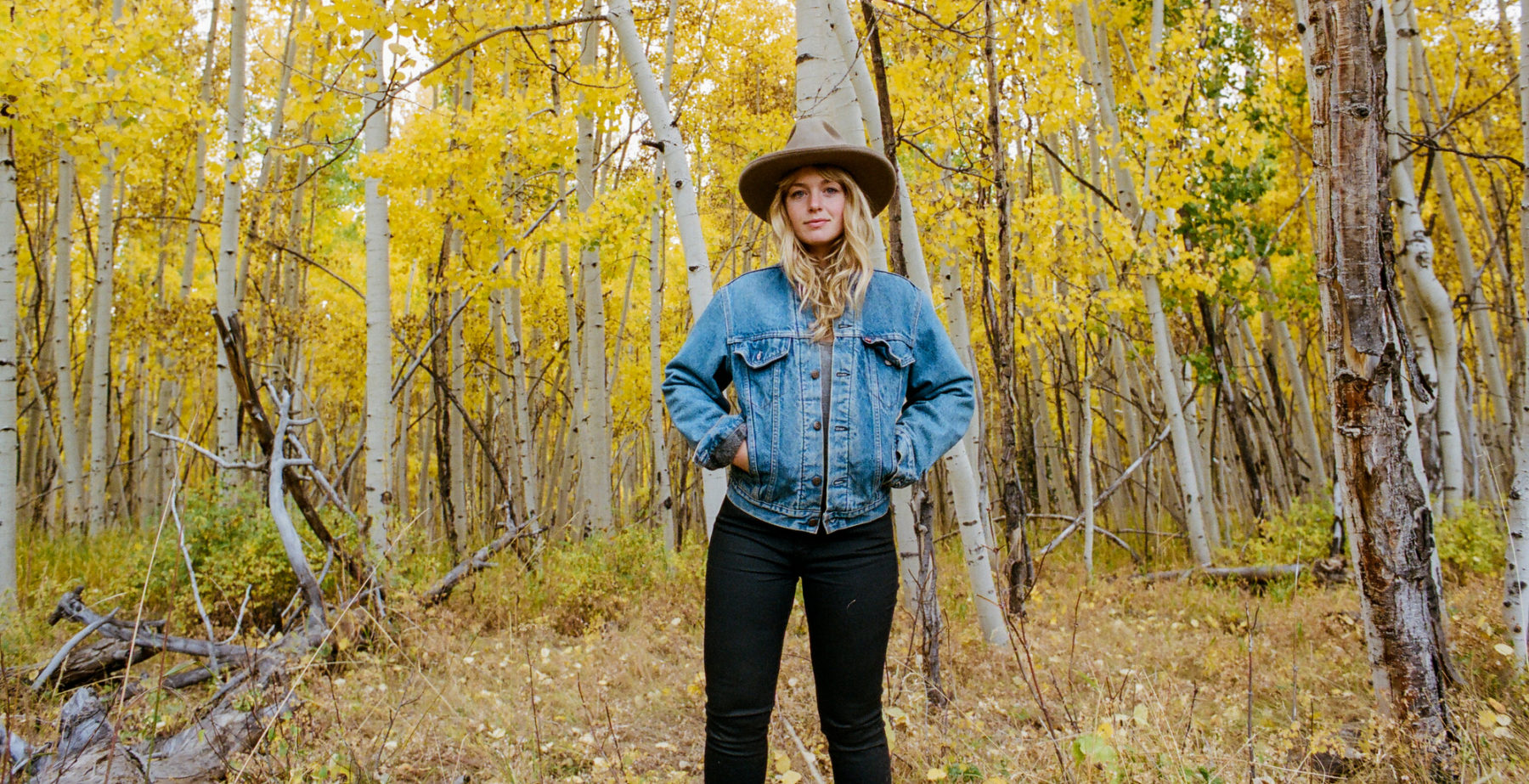
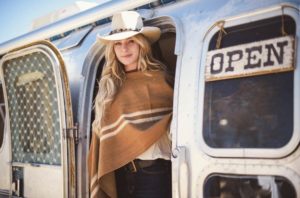
Cate Havstad is a hat maker and farmer based in central Oregon whose abundant curiosity, creativity, and love of place have allowed her to transform her passions into a full-time and fulfilling career. As a hat maker, Cate’s unique style and unwavering commitment to quality have attracted customers ranging from music stars like Gillian Welch and Nikki Lane to hard-working ranchers and farmers throughout the American West. As a farmer, Cate and her partner are deeply committed to regenerative agriculture and the positive impact that their local efforts can have on a global scale. It’s safe to say she’s living a life guided by purpose and passion.
Born and raised in northern California, Cate was a driven athlete in her youth, as evidenced by her desire to be the first woman to play in the NBA (that’s the NBA, not the WNBA). As a young woman, a fortuitous series of events landed her in a hat maker’s workshop, where she applied that same focus and drive toward learning the craft of hat making. After accumulating experience and confidence as an apprentice, she struck out on her own and now creates some of the most sought-after, stylish, and functional hats on the market today. Cate’s life and work are closely connected to the landscape of central Oregon, and her other job as an organic farmer has given her a deep understanding of the role that regenerative agriculture can play in conservation, community building, and reversing climate change.
As you’ll hear in our conversation, Cate is extremely curious, well-read, and and knowledgeable on a wide range of subjects. We talk about her journey as a hat maker, and how she cultivates creativity and consistent production in a world filled with an increasing number of distractions. We discuss regenerative agriculture and how many people, including well-meaning environmentalists, don’t fully understand the importance of farmers and ranchers in the conservation movement. Cate is a devoted meditator and runner, so we talk about how both of those practices have improved her creativity and outlook. We also chat about Wendell Berry, Michael Pollan, Steven Pressfield, and how those authors’ works have impacted her life. There’s a lot to learn in this episode.
This was a fun conversation that could have continued for hours. Be sure the check the episode notes below for links to everything we discussed—it’s a long list! Hope you enjoy!
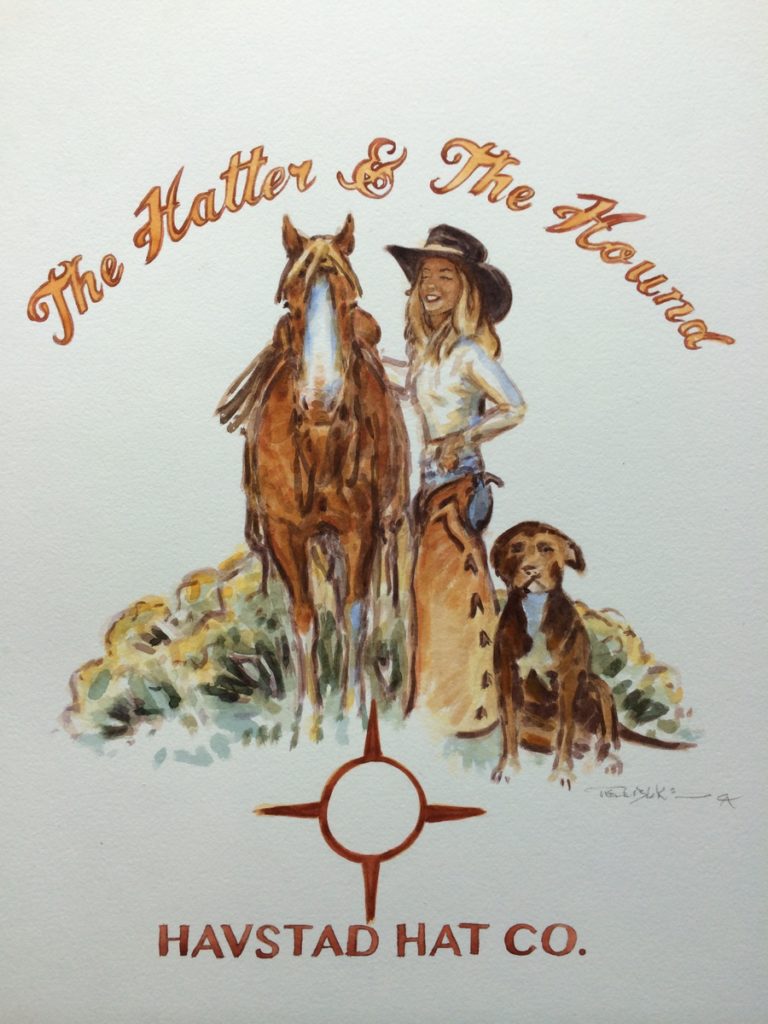
Header photo by Amanda Leigh Smith, others courtesy of Cate Havstad
Click Here to Download on iTunes
—
Click Here to Download on Google Play
—
Click Here to Download on Stitcher
—
Episode Notes
Topics Discussed:
- Cate Havstad on Instagram
- Havstad Hat Company
- Casad Family Farms
- Willy Tea Taylor
- The War of Art by Steven Pressfield
- Headspace
- Sit Like a Buddha by Lodro Rinzler
- Walk Like a Buddha by Lodro Rinzler
- Wendell Berry
- The Unsettling of America by Wendell Berry
- Michael Pollan
- In Defense of Food by Michael Pollan
- Jim Howell interview
- Savory Institute
- Braiding Sweetgrass by Robin Wall Kimmerer
- Taylor Keen interview
- The Dirty Life by Kristen Kimball
- Kristen Kimball
- Deep Work by Cal Newport
- Travels with Charley by John Steinbeck
- The Monkey Wrench Gang by Edward Abbey
- Temperance Creek by Pamela Royes
- Unbranded
- Ben Masters interview
- Unbroken Ground
- 13th
2017 Reads
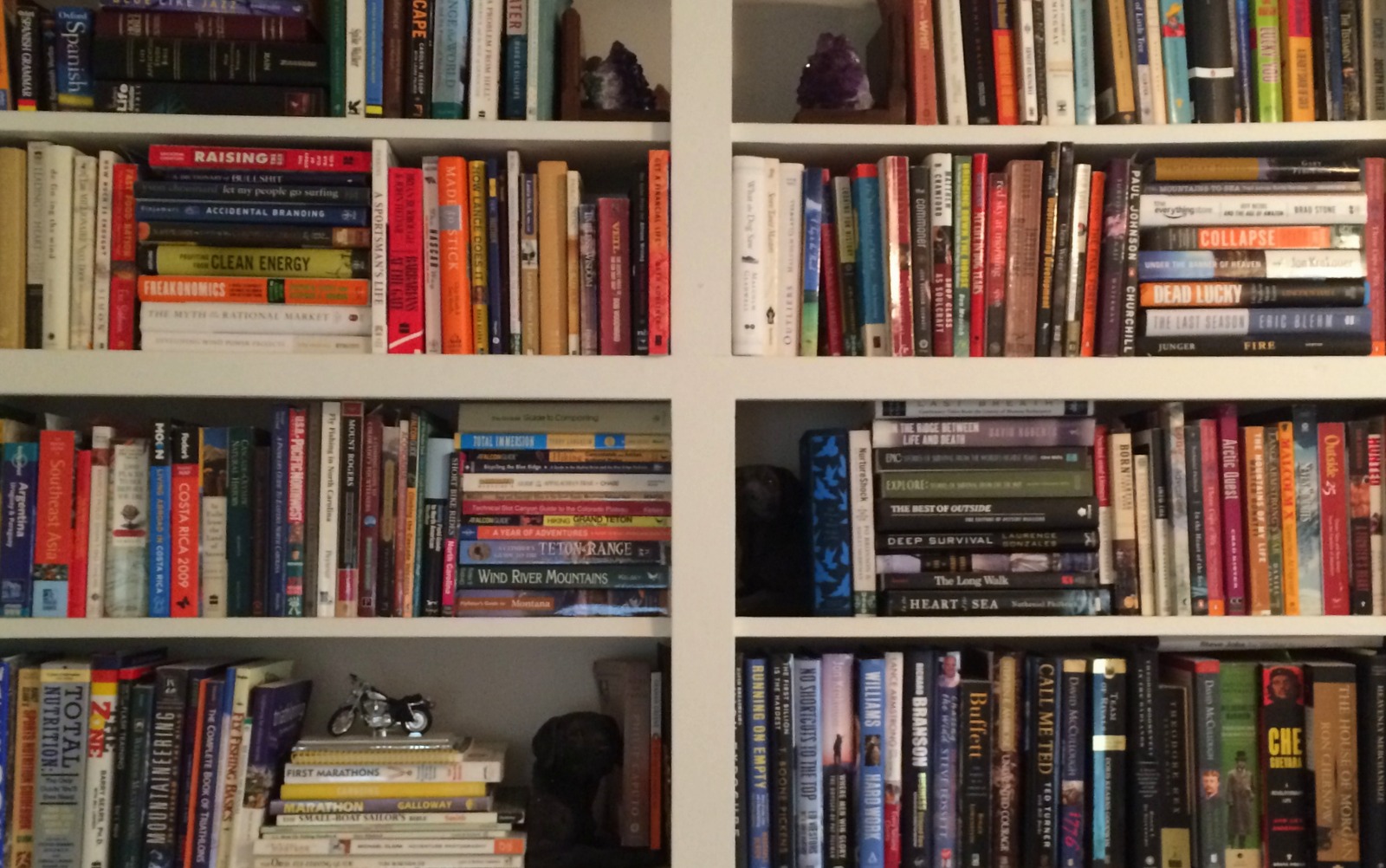
A comprehensive list of every book I recommended in 2017, taken directly from my bimonthly book recommendations email.
Hellhound on His Trail: The Electrifying Account of the Largest Manhunt in American History by Hampton Sides – Hampton Sides is a damn genius. As far as I’m concerned, he is the best non-fiction writer alive. His ability to write in-depth, detailed, scholarly history on a wide variety of subjects and deliver it in entertaining, fun-to-read books is second to none. This one covers the stalking and assassination of Martin Luther King Jr. by the loner/pervert/nutcase Eric Galt aka James Earl Ray. The lead-up to the assassination and the subsequent international manhunt for Ray is a perfect example of truth being stranger than fiction. If you’re like me and are embarrassingly uneducated about the Civil Rights movement, the life of Martin Luther King Jr., and the turbulent 1960s, this book will serve as a solid jumping-off point to learn more. Excellent book. [One of my favorite books of all time is Hampton Sides’ Blood and Thunder: The Epic Story of Kit Carson and the Conquest of the American West]
In the Kingdom of Ice: The Grand and Terrible Polar Voyage of the USS Jeannette by Hampton Sides – I doubled down on Hampton Sides with this book about an ill-fated expedition to discover the North Pole. While the adventure narrative about the actual expedition is entertaining, I found some of Sides’ insights into the Gilded Age to be the more interesting parts of this book. The Gilded Age is my favorite chapter in U.S. history, and the amount of knowledge gained and myths busted during that time period is amazing. For example, when the USS Jeannette left on its adventure, the world’s leading scientists (as well as the boat’s captain) were absolutely convinced that the North Pole was an open warm-water sea created by thermal energy emanating from the earth’s core—turns out it was a deadly frozen wasteland that killed almost everyone on board. Once again, Hampton Sides knocks it out of the park with this one. [For more cold-weather adventure, you can’t beat Endurance: Shackleton’s Incredible Voyage by Alfred Lansing.]
Tools of Titans: The Tactics, Routines, and Habits of Billionaires, Icons, and World-Class Performers by Tim Ferriss – Given the amount of driving I do for work, Tim Ferriss’ podcast has been a godsend. I’ve listened to almost every episode, and each one invariably offers a few new ideas, actionable advice, or interesting book recommendations. Many of the books I’ve recommended on this list were a result of Ferriss’ in-depth and lengthy interviews with “world-class performers.” Tools of Titans is basically the CliffsNotes version of the podcast—hundreds of hours of audio distilled down into the “greatest hits” from each episode. The 700-page book is gargantuan—ridiculous really—and I’ll likely never read it all the way through. But it serves as a great reference for all of the excellent material covered in the podcast. [Check out his podcast interviews with author Sebastian Junger, former Navy SEAL Jocko Willink, and music producer Rick Rubin.]
Lincoln’s Melancholy: How Depression Challenged a President and Fueled His Greatness by Joshua Wolf Shenk – A commonplace narrative in biographies of despondent or depressed people is a heroic story of how the individuals fought through their emotional challenges and eventually had a breakthrough that allowed them to conquer their demons once and for all. This book does no such thing. Instead, it explores how Abraham Lincoln’s chronic, sometimes debilitating, depression was a constant struggle his entire life, and how his battles with “melancholy” made him a stronger and more effective leader during one of our nation’s most tumultuous times. It’s an interesting examination of how a person’s greatest weakness can simultaneously be their greatest strength. [For more on the links between mental health and greatness, I recommend A First-Rate Madness: Uncovering the Links Between Leadership and Mental Illness by Nassir Ghaemi]
On Writing Well: The Classic Guide to Writing Nonfiction by William Zinsser – I’m a firm believer that the only way to learn how to do something is to actually do it. For instance, reading a book about how to run 100-mile ultra marathons won’t do you any good unless you lace up your shoes and go on six-hour training runs. A book may offer some good tips, but the learning is in the doing. So no, this book did not transform me into Hampton Sides overnight, but it did give me a useful toolkit to dig into every time I drag myself to the keyboard and struggle to bang out a few coherent sentences. The book is entertaining, surprisingly hilarious, and offers tips that run contrary to the rules and regs of freshman English class. I will refer back to this book often. [The best book on writing, or any creative endeavor, is The War of Art: Break Through the Blocks and Win Your Creative Battles by Steven Pressfield.]
What Doesn’t Kill Us: How Freezing Water, Extreme Altitude and Environmental Conditioning Will Renew Our Lost Evolutionary Strength by Scott Carney – Over a year ago, I heard a podcast interview with an eccentric Dutchman named Wim Hof who was touting the benefits of cold showers, ice baths, and wacky breathing exercises—so, of course, I immediately gave it all a try. Barring the time I passed out and “bumped” my face on the floor, I found his exercises to improve my mood, burn fat that no amount of running seemed to be able to eliminate, and generally improve my overall well-being. I thought I had discovered a valuable secret until I heard that this book was being released, bringing the techniques and science behind the claims into the mainstream. The author is an investigative journalist who has made a career of debunking gurus, but when he used Wim’s techniques to hike to the summit of Kilimanjaro shirtless, his skepticism began to recede and he realized there may be something to Wim’s claims. (Here’s a short, mainstream article that summarizes the techniques, and here’s an excellent NPR interview with the author.)
The Reluctant Mr. Darwin: An Intimate Portrait of Charles Darwin and the Making of His Theory of Evolution by David Quammen – Hardly a day goes by that I don’t hear or read a reference to “Darwinian,” “Darwinism,” or “Survival of the Fittest.” But while reading this book, I realized just how little I actually knew about the man behind the theory… and the theory itself. Because I always pictured Darwin as a larger-than-life adventurer sailing the high seas on the HMS Beagle, I was surprised to learn that he was actually a bookish homebody who worked himself to the bone, all while suffering from debilitating chronic illnesses likely caused by anxiety. It took him close to 20 years to actually publish his theory because he worried about blowback from religious institutions, and he was a perfectionist who had trouble finishing projects. Eventually, other scientists began producing similar theories, so good ol’ ego and competition finally spurred him to publish On the Origin of Species. I really enjoyed this book. (The best evolution-focused book I’ve read in years is Sapiens: A Brief History of Humankind by Yuval Noah Harari.)
The Craving Mind: From Cigarettes to Smartphones to Love – Why We Get Hooked and How We Can Break Bad Habits by Judson Brewer – Luckily, I’ve never been addicted to anything, with one glaring exception—my iPhone. I pretty much despise the device, yet I find myself constantly fighting the urge to look at it, check email, or research any obscure idea that happens to pop into my head. This book helped me to understand exactly what’s going in people’s brains when they crave anything (cigarettes, booze, drugs, iPhones) and presents methods to stop the addictive behaviors. (Spoiler: iPhones are kind of like heroin.) The author is a neuroscientist and experienced meditator who combined science and mindfulness to invent a system that helps addicts of all kinds conquer their addictions. Amazingly, his system is twice as effective at helping smokers quit cigarettes as the “gold star” treatment prescribed by the American Lung Association. This is a very useful book that combines rock-solid scientific data with ancient Buddhist philosophy in a straightforward and non-silly style. We’ll see if it gives me sustained relief from the iPhone craving. (The best non-silly book on meditation/mindfulness that I’ve ever read is 10% Happier: How I Tamed the Voice in My Head, Reduced Stress Without Losing My Edge, and Found Self-Help That Actually Works by Dan Harris.)
Why Wall Street Matters by William D. Cohan – Given our current hyper-polarized political climate, you wouldn’t expect a lifelong progressive Democrat to write an insightful and even-handed defense of Wall Street, but that’s exactly what Cohan does in this short and easy-to-read book. Cohan, a former investment banker turned journalist, explains the history of Wall Street, the rise of investment banks, Wall Street’s effect on global economies, and how all of this affects every American’s day-to-day life. Cohan argues that American finance is mostly a force for good, but it has lost its way over the past 30 years thanks to faulty incentives that allow bankers to gamble with the public’s money with little or no personal consequence if they lose it all. After all of the indiscriminate Wall Street bashing by both parties during the recent presidential election, I appreciated this book’s rational and measured tone. (For a deeper dive into the history of Wall Street, check out The Myth of the Rational Market: A History of Risk, Reward, and Delusion on Wall Streetby Justin Fox.)
Boyd: The Fighter Pilot Who Changed the Art of War by Robert Coram – This rather obscure book was recommended to me by one of the toughest, most focused, and clearest thinking people I know (or know of). It’s the story of John Boyd, a fighter pilot turned self-taught military strategist whose theories led to the development of the F-15 and F-16, guided US strategy during Desert Storm, and altered the trajectory of the Air Force and the US Military. The book’s military history is extremely interesting, but I was more fascinated with Boyd’s personality—hard-charging, amazingly focused, contrarian, irreverent, hard working, and willing to bend or break long-standing military rules in order to accomplish his goals. Because Boyd was never promoted beyond Colonel, he’s not a well-known historical figure, but thanks to Coram’s entertaining and dense book, Boyd is receiving at least a little of the recognition he deserves. (If you like learning about irreverent, hard-charging, focused men, read my favorite book of all time: The Rise of Theodore Roosevelt by Edmund Morris.)
Coyote America: A Natural and Supernatural History by Dan Flores – I love books that go deep on one very specific subject, and this is one of my favorites. The coyote is a controversial figure, especially here in the American West, and understanding this highly intelligent animal—and humans’ relationship with it—provides some interesting insights into the history of North America, our relationships with other species, and some of the comical ways we’ve gone about trying to control the natural world. The book covers all aspects of the animal, from its evolutionary past to its relationship with Native Americans, and its ability to outwit our best efforts to exterminate it from the planet. Whether you love them or hate them (or can’t distinguish a coyote from a German Shepard), you’ll walk away from this book with new insights into humans, animals, and the North American landscape. (My favorite subject-specific book of all time is Cod: A Biography of the Fish that Changed the World by Mark Kurlansky.)
United: Thoughts on Finding Common Ground and Advancing the Common Good by Cory Booker – I first learned of Cory Booker back in 2005 when I watched the documentary Street Fight. I was intrigued by this Stanford and Yale-educated, Division One football-playing, Rhodes Scholar attorney who passed up high-paying jobs to live in the housing projects of Newark, NJ and devote his life to community development. Since then, he’s worked his way up from City Councilman to Mayor to Senator. While I usually avoid books written by sitting politicians—they are often self-congratulatory nonsense—I made an exception for Booker. It’s a well-written and engaging book that discusses his upbringing, his parents’ role in the civil rights movement, and lessons learned from various mentors along the way. Of course he delves into some current political issues, but I thought they were presented in a logical, non-inflammatory manner. He even challenged some of my notions on issues such as minimum wage and the environment, which is exactly why I read so much—to stretch my mind, challenge my beliefs, and see the world in a more informed way. (If we’re talking about politicians, of course I have to recommend a TR book. Here’s a good one that covers his time as police commissioner of New York City: Island of Vice: Theodore Roosevelt’s Quest to Clean Up Sin-Loving New York by Richard Zacks.)
The Legend of Colton H. Bryant by Alexandra Fuller – This book follows the life of Colton Bryant, a young man from Evanston, WY, whose life is shaped by the booms and busts of the American West’s energy business. His father is a lifelong oil rig worker, and Colton follows in his footsteps, taking a job on a rig in the Upper Green River Valley during the boom of the mid-2000s. I felt a surprising connection with Colton, because we were almost the same age, working in the same area of Wyoming at the exact same time—we very well could have passed each other on Highway 191 at some point. However, through nothing but luck of circumstance, I was selling beautiful ranches while Colton was risking his life in unsafe conditions for relatively low pay and little job security. Although the book reads like fiction, it is true, and it gives some valuable insights into the lives of the West’s struggling lower-middle class. (David Gessner’s All the Wild that Remains: Edward Abbey, Wallace Stegner, and the American West touches on energy production in the West, plus plenty of other fascinating subjects.)
Understanding the Palestinian-Israeli Conflict: A Primer by Phyllis Bennis – I was having dinner with friends recently when the subject of Palestine came up. As I sat quietly, nodding my head, contributing nothing to the conversation, I thought: “I probably can’t find Palestine is on a map, but I sure know a hell of a lot about coyotes!” Two days later, the folks at Boulder Bookstore pointed me to this book as a way to fill this embarrassing gap in my understanding of the world. The book is basically 200 pages of Israel-Palestine FAQs that covers everything from the history of Israel and the competing interests in the area to answers to basic questions like “What is Hamas?” and “What is Zionism?” As I read the book, most of the people and events were vaguely familiar to me, and this book brought them all together into a relatively easy-to-understand narrative. As much as I read and as curious as I am, it’s amazing that I could be so clueless about such an important (and violent) part of world history that has been unfolding throughout my life. I wonder what else I’m missing?
Six Easy Pieces: Essentials of Physics Explained by Its Most Brilliant Teacher by Richard P. Feynman – Years ago, I came across a Youtube video of a man ripping to shreds the idea of “honors,” and I knew I had to learn more about this man. Turns out he was Nobel Prize-winning physicist Richard Feynman, a man who not only contributed to the success of the Manhattan Project, but was a quirky polymath who dabbled in painting, bongo playing, safe cracking, pranking, and hilarious storytelling. Feynman was also a gifted teacher, and this book consists of six different introductory physics classes that he taught at Cal Tech, transcribed into written word. I never took physics in high school or college, so I found the overall concepts interesting. More interesting, however, is Feynman’s ability to communicate extremely complex subjects in a manner that is relatively easy to understand. Most interesting is the opportunity to observe how Feynman’s mind works—extremely curious, open to new ideas, looking to overturn conventional wisdom, and completely rational. In our current political environment where the scientific method seems to be taking a back seat to opinions and emotions, absorbing Feynman’s outlook and personality is like a breath of fresh air. (For more insights into the man himself, I highly recommend one of his other books, Surely You’re Joking Mr. Feynman: Adventures of a Curious Character.)
American Serengeti: The Last Big Animals of the Great Plains by Dan Flores – If you have an interest in natural history and love the American West, this book should be required reading. It gives an overview of the history of large mammals in North America—also known as “charismatic megafauna’—which included lions, mammoths, saber-toothed cats, giant ground sloths, and giant long-horned bison, to name a few. Then Flores digs into detail on some of North America’s remaining large mammals, including pronghorn, coyotes, horses, grizzlies, bison, and wolves. I marked up almost every page of this book with notes and highlights, as each chapter gave me new insights into the why things are the way they are in the West. Flores balances natural history and science with humor and clean prose, making this book a real pleasure to read. I predict I’ll be referring back to this book often. (The first book that introduced me to some of these natural history concepts, then changed my perspective on how livestock can be used to restore grassland ecosystems is For the Love of Land: Global Case Studies of Grazing in Nature’s Image by my good buddy Jim Howell.)
Where You Go Is Not Who You’ll Be: An Antidote to the College Admissions Mania by Frank Bruni– This book confirmed many of my suspicions about college rankings, specifically people’s obsession with the US News “Best Colleges” list—that it is a baseless system that can be gamed by participants and ultimately means nothing. Everyone who has children should read this book, as it gives excellent insights into just how flawed and nonsensical those rankings are. Kids should pick colleges based on their specific interests and personalities, not based on a list put together by a faceless profit-seeking organization with dodgy intentions. Bruni argues that no matter where you go to school, you only get out of it what you put in, so kids’ efforts at their school are much more important than the school’s brand. College admission is far from the finish line of life—work ethic during college and the pursuit of a fulfilling, meaningful career for the following 40+ years should be a much higher priority. (Bruni’s undergraduate education at UNC-Chapel Hill was funded by the Morehead-Cain Foundation—my ridiculously smart wife had the same scholarship and now works for the Foundation, which is how I learned about this book.)
All Waves are Water: Stumbling Toward Enlightenment and the Perfect Ride by Jaimal Yogis – Before I started surfing, I used to scoff when I’d hear spaced-out surfer dudes drone on about how surfing is “spiritual.” Then, after surfing almost every day for a year, I came to understand and completely agree with their assessment. This book combines surfing, meditation, religion, travel, and adventure, in an amazingly cohesive and fun memoir that connects these heavy subjects in unexpected ways. It amazes me that Yogis is able to write about such weighty topics as religion and philosophy, then connect them to surfing, in a manner that is neither silly nor pompous. As an obsessed surfer and a daily meditator, I loved everything about this book. And to top it all off, I was lucky enough to meet Yogis in person at a recent book-signing and thoroughly enjoyed chatting with him—he was humble, insightful, and interested, which made me like the book even more. (Yogis’ first book Saltwater Buddha: A Surfer’s Quest to Find Zen on the Sea is one of my all-time favorites.)
The Haywire Heart: How too much exercise can kill you, and what you can do to protect your heart by Case, Mandrola, and Zinn – Back in June, I was running a 100-mile ultramarathon in Wyoming’s Bighorn Mountains, and my heart went completely nuts, ruining my race and giving me quite a scare. After multiple visits to cardiologists, I am apparently fine, but I walked away from the experience realizing that most doctors know next to nothing about ultra-distance endurance training and its effects on the body. Lucky for me, this book was published earlier this year and is written by several hardcore endurance athletes, one of whom is also a respected electrophysiologist. The book discusses how extreme exercise can affect the heart, the specific diagnoses, and the full spectrum of treatment options—all from the perspective of people who understand the realities of running non-stop for 24-48 hours at a time. A very niche subject for sure, but I highly recommend it, as it gave me solid base-level of understanding about the heart, cardiologists’ lingo, all of the treatment options, and more.
The Compound Effect by Darren Hardy – I don’t know how I came across this book or why I read it—maybe because I was down in the dumps about my heart and unfinished race—but it was timely and surprisingly good. I generally shy away from self-help books, as they usually lead me down a rabbit hole of endless planning, systems, and processes, with very little action and results. This book didn’t really present any new ideas, but it was an effective repackaging of things I already knew at a time when I needed a fresh perspective. The basic ideas are: work extremely hard, make definitive choices, take full responsibility for everything, track your progress, be mindful of habits, and take action NOW. It’s not rocket science. It’s straightforward stuff that everyone knows in theory, but I took a lot away from Hardy’s original presentation of the familiar material. (One of the best self-help type books I’ve read and that I continually refer back to is The Art of Taking Action: Lessons from Japanese Psychology by Gregg Krech.)
On Tyranny: Twenty Lessons from the Twentieth Century by Timothy Snyder – Very enlightening and short book that discusses how totalitarian regimes were able to take over societies during the 20th century. Most of the examples revolve around Hitler’s rise to power, and Snyder shows how Hitler’s transformation of Germany into a fascist regime was a complete surprise to many German scholars, politicians, and citizens—very few took him seriously at first, writing him off as an extremist clown. The book demonstrates just how vulnerable democratic societies can be to the pull of authoritarianism and how citizens must remain vigilant and proactive in repelling forces that threaten democracy. This would be an eye-opening book at any time, but given the current cuckoo political climate in the U.S., it’s even more important. (If you don’t know how to read, check out this interview with the author on Sam Harris’s Waking Up Podcast.)
Bad Land: An American Romance by Jonathan Raban – This book had been on my “to-read” list for quite a while, but a recent work trip to eastern Montana prompted me to bump it to the top of the list—an amazing book that I should’ve read years ago. It’s a history of the settlement of eastern Montana combined with the author’s personal journey traveling through and learning about this uniquely American landscape and culture. Raban details the railroads’ marketing trickery that convinced aspiring emigrants to pack up and move to a 320-acre patch of treeless, dry, windswept grassland. He explains the government’s propaganda touting the lie that “rain follows the plow,” which convinced most of these settlers to plow up healthy grass and plant crops that would not grow. Raban is British, so he brings an outsider’s perspective to his analysis, completely free of the romantic biases that Americans often harbor toward the West. Enlightening, funny, and entertaining—highly recommended. [I also recommend Theodore Roosevelt’s Hunting Trips of a Ranchman, as it lays the groundwork for TR’s love of the West, which directly affected some of the policies that led to the settlement of Montana.]
Theodore Roosevelt’s Letters to His Children by Theodore Roosevelt – I re-read this book and will likely re-read it every year for the rest of my life. Everyone knows that TR was a hard-charging politician (and soldier, naturalist, historian, hunter, explorer, rancher, etc.), but few understand that he was a truly devoted father and family man. This collection of letters is equal parts hilarious and heartwarming, and I also see it as instructional—he sets a great example of an engaged and fun father, while also modeling the values that I hope to pass along to my children. The book is full of ridiculous stories, such as a badger running loose in the White House, snakes slithering up the pants of Senators, and flying squirrels terrorizing presidential guests, all to the sheer delight of TR. But for every letter about mischief, there is a letter encouraging his children to work hard, be honest, and live up to high personal standards, no matter the influences of the outside world. [If you’re looking for a single good book in the ridiculous heap of the parenting genre, the best one I’ve read is Bringing Up Bebé: One American Woman Discovers the Wisdom of French Parenting by Pamela Druckerman.]
In the Neighborhood: The Search for Community on an American Street, One Sleepover at a Time by Peter Lovenheim – Ever since becoming a father, I’ve come to appreciate the importance of community even more than I did before. I’ve also realized how our modern-day society inadvertently snubs out community—many Americans don’t know our neighbors, we’re isolated in our own little sealed-off worlds, mostly oblivious to the people who live in our immediate vicinity. In this book, the author, who has lived in the same suburban, high-end neighborhood for most of his life, realizes he doesn’t really know any of his neighbors, so he sets out to change that. Using the very, very weird technique of asking to spend the night in their homes, he learns the ins and outs of the neighbors’ lives, is able to make connections among once-strangers, and builds a nice community in what was once a sterile suburb. Some parts of the book are a little over the top (as in I would likely call the authorities on a neighbor doing some of the stuff this guy did), but his slightly odd community-building efforts make a strong point—communities matter and we need to be proactive in building and maintaining them. [For the best defense of community I’ve ever read, check out Sebastian Junger’s Tribe: On Homecoming and Belonging.]
Free Will by Sam Harris – I really admire Sam Harris and see him as one of the most clear-thinking and rational voices on a wide spectrum of modern-day cultural issues. Most of his ideas make so much sense to me that I’ve begun actively trying to poke holes in every argument he makes—I never want to defer too much to one individual’s line of thinking (except TR). Free Will is one of those books that I do not want to agree with, but it’s hard for me to find a gap in Harris’s rationale. He argues that no one actually has free will—that all of our choices and opinions are the product of circumstances outside of our control and that no one is truly in control of themselves and their actions. He also argues that a lack of free will is not a bad thing, and that understanding and accepting this reality can improve huge parts of our lives and society. I continue to ruminate on these ideas weeks after finishing the book, so it obviously had an impact on my thinking. It’s a very short book, so if you like challenging your preconceived ideas, you should check it out. [I will once again recommend Sam Harris’s brain-scrambling book Lying—an argument that no one should lie about anything, ever, no matter how benign the issue may be.]
Discipline Equals Freedom: Field Manual by Jocko Willink – So much for the idea of “no free will,” because I read this book with the intention of willing myself to be a little tougher, more disciplined, and an all-around better person. Jocko Willink is a retired Navy SEAL and one of the most genuinely hardcore dudes I’ve ever encountered. The book basically details his day-to-day operating system for living a successful life, which involves embracing discipline above all else. He declares that there are no shortcuts or secrets, that discipline is difficult and it should be. He touts the importance of getting up early, exercising daily, and always working from a list. All very simple ideas, but far from easy. To give you a sample of his no-nonsense advice, here’s a short passage: “People constantly ask me for the secret of getting up early. I tell them it is simple: Set your alarm clock and get out of bed when it goes off.” In a world of endless motivational quotes, “lifehacks,” and self-help foolishness, this book is refreshing, realistic, actionable, and no-nonsense. [If you’re not familiar with Jocko, you many want to check out his podcast or other book, Extreme Ownership: How US Navy SEALs Lead and Win. I love his approach, but I can see how he may not be for everyone.]
Modern Huntsman, Volume 1 – Not a book per se, but this soon-to-be-published magazine will hold a place on my bookshelf alongside all the other important works that mean so much to me. This 200+ page magazine is the brainchild of several friends who happen to be some of the most interesting and impressive folks I know. The first edition of this publication, to be released in early 2018, will feature articles, photography, and commentary by an all-star team of deep-thinking conservationists, hunters, and adventurers. The goal of the publication is to improve the perception of hunting in our society through storytelling in a fresh, elegant, and thoughtful manner. I’m not an obsessed hunter, but my work in conservation and my understanding of natural history have given me a firsthand appreciation for the importance of hunting and the vital role it plays in conserving landscapes and species around the world. This is an important project on several levels, so watch the video on their Kickstarter page if you want to learn more and secure a copy for yourself.
Cattle Kingdom: The Hidden History of the Cowboy West by Christopher Knowlton – This is the book I’ve been waiting for since I moved West in 2005. It’s a comprehensive history of the settlement of the West, as shaped by the rapid expansion (and dramatic implosion) of the cattle ranching business. I loved this book because it’s broad enough to offer a solid overview of the timeframe of the first cattle drives north from Texas, but it also zooms in on specific individuals and events that were instrumental in fueling the western cattle boom. Despite my involvement in the ranching world and my voracious appetite for western history, I learned a lot from this book, specifically the influence of European investment on western settlement. To add to my excitement, there is lots of discussion of TR and his involvement in the West, which is always a welcome subject. [Speaking of TR, if you want a full book dedicated exclusively to his time in the West, check out Theodore Roosevelt in the Badlands: A Young Politician’s Quest for Recovery in the American West by Roger Di Silvestro.]
The Rules Do Not Apply: A Memoir by Ariel Levy – For Pete’s sake, this author’s life is complicated. She’s a staff writer for the New Yorker and an enormously talented author, but how she had the guts to reveal such tragic, weird, sad, and extremely personal details of her life, I’ll never know. This memoir covers everything from her non-traditional family upbringing to a terrible tragedy that struck during a reporting trip to Mongolia, which resulted in the total upending of all aspects of her life. This is far from an upbeat, fun-to-read book, but despite my having almost nothing in common with the author, I found many of her insights and lessons learned to be wise and worth considering. I continue to think about this book weeks after finishing it, which I consider the mark of a book worth reading. It also makes me very thankful for my relatively boring life. [For another New Yorker-staff-writer memoir, read the Pulitzer Prize-winning Barbarian Days: A Surfing Life by William Finnegan. It’s one of my all-time favorites.]
The Vanishing American Adult: Our Coming-of-Age Crisis—and How to Rebuild a Culture of Self-Relianceby Ben Sasse – Sasse is an up-and-coming Republican Senator from Nebraska, but you don’t need to agree with his politics to appreciate his insights in this excellent book. To be clear—this book is not the compiled rants of a well-to-do white guy complaining about how today’s youth don’t understand how good they’ve got it (e.g. “I used to walk 10 miles to school through the snow, uphill both ways!”). Rather, it’s an insightful, historically based examination of how recent cultural changes are making younger generations less prepared to compete and succeed in the real word. Sasse advocates for consuming less, reading more, traveling to deeply experience new cultures, and devoting oneself to meaningful, challenging work—it’s hard for me to disagree with any of that. And like Cattle Kingdom above, there are many TR references throughout the book, which only adds to its appeal.
Promise Me, Dad: A Year of Hope, Hardship, and Purpose by Joe Biden – Until a few years into his Vice Presidency, I wrongly assumed Joe Biden was just another fake-grinning, loudmouthed politician. But as I dug into his backstory, I was surprised to discover that behind the aviator sunglasses, the endless gaffes, and the persona created by The Onion, there is an amazingly decent, grounded, and truly optimistic man who has suffered—and recovered from—some of the most devastating personal experiences imaginable. He doesn’t drink, has never been wealthy, and is deeply admired by a wide range of colleagues from Strom Thurmond to Ted Kennedy. This book tells the story of his most recent loss, his son Beau’s death from aggressive brain cancer. It’s touching, insightful, and inspiring to understand how Biden dealt with yet another tragedy, and how he continued get up and keep pushing forward without becoming bitter. Included in the book is a bit of fluff about his Vice Presidential accomplishments, which is expected and hints that he’s not done with politics. But overall, I thoroughly enjoyed this book. [If you want the over-the-top, R-rated version of Joe Biden that colored my perception of the man for years, check out The Onion’scoverage of his Vice Presidency. Completely fictional, completely crude, and completely hilarious.]
The Stranger in the Woods: The Extraordinary Story of the Last True Hermit by Michael Finkel – This is the true story of a complete weirdo who lived hidden in the Maine woods completely alone, never speaking to another human for 27 years. I enjoyed the book and read it quickly in just three sittings, but absolutely did not like the main character, the hermit Christopher Knight. Knight’s experience as a hermit was unlike any other known hermit—he was not seeking spiritual enlightenment nor did he have a true love of nature—according to the author, he just sort of sat around for the better part of three decades in a small, forested cove with no real purpose or reason for being there. Instead of hunting, trapping, or some other type of self-reliant badassery, he snuck around at night and stole all of his food, clothing, and gear from vacation homes and a nearby summer camp. My visceral reaction to the hermit and his lame “hunting and gathering” methods speaks to the author’s ability to tell an engrossing story that strikes a chord with readers. Very entertaining and worth a read. [One of my favorite books as a kid was Hatchet by Gary Paulsen, about a boy who actually hunts and fishes (and doesn’t steal) in order to survive in the wilderness.]
Tribe: On Homecoming and Belonging by Sebastian Junger – I re-read this book a few weeks ago, and will likely re-read it again and again. It’s no exaggeration that I think about it everyday and have bought numerous copies to give away to friends and family. It’s short and powerful and has redefined my thinking on the importance of community, purpose, and the social structure of modern-day America. I can’t recommend it enough. Here’s my original recommendation from July/August 2016. [But don’t take my word for it, the almighty Oprah loved it, too—listen to her podcast with Junger. Or listen to this Joe Rogan Podcast episode with Junger.]
Sarah King – Collaborative Conservation in the American Southwest
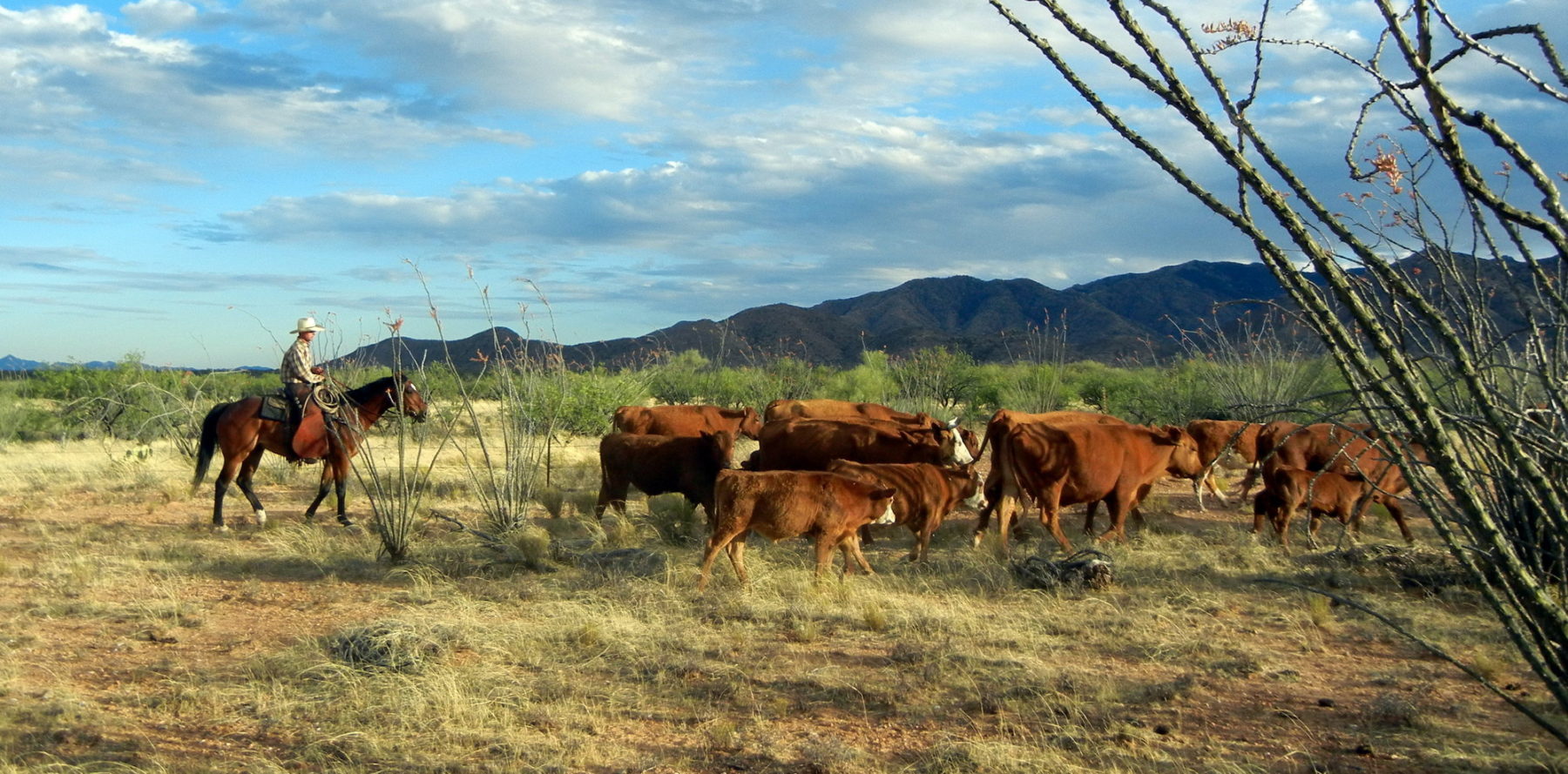
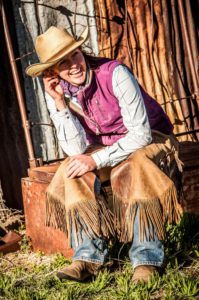
Sarah King is a rancher, conservationist, wife, and mother of two who lives and works on her family’s 55,000-acre cattle ranch in southern Arizona’s Altar Valley. The King’s Anvil Ranch was established in 1895 and has operated successfully within their family for generations, setting an example of how to run a financially viable agricultural business, while simultaneously protecting the long-term ecological health of their vast desert ranch. The Kings understand that in order for their business to thrive, the land must thrive, and they are leaders in pursuing a variety of outside-the-box land stewardship techniques, including the focused use of prescribed fires.
The King family spearheaded the creation of the Altar Valley Conservation Alliance, a cutting-edge land conservation organization that collaborates with a wide range of stakeholders, including private landowners, ranchers, government entities, conservation non-profits, and environmental advocacy groups. Thanks to focused, diligent efforts over the course of two decades, the AVCA has managed to bring together groups that have historically been at odds, allowing them to focus on shared goals and creative solutions to complicated challenges, rather than dwelling on their differences. As you’ll hear Sarah explain, AVCA understands that open, honest, face-to-face communication has been the key to tackling the Altar Valley’s complex challenges, and their success gives me hope that other organizations throughout the West can adopt their approach and enjoy the same success.
This was a very enlightening episode for me, because I personally just don’t know enough about the landscapes and heritage of the deep southwest. We dig into many of the details of the King’s Anvil Ranch and its operation, including the unique climate and ecology of the Arizona desert. Sarah explains how the AVCA came to be, and offers some insights into exactly what they do and how they’ve managed to have such success. We discuss Sarah’s personal background, specifically how an east coast native ended up on an expansive cattle ranch in Arizona. We talk about the benefits of raising children on a ranch, and the lessons she hopes to impart as they grow up closely connected to the land. Given that the ranch is located less than 40 miles from the Mexico border, we discuss how illegal border crossings have a significant effect on the ranch’s operations. And, of course, we discuss favorite books and documentaries, with links to everything in the episode notes.
I had such a great time chatting with Sarah, and I walked away from the conversation with a much deeper understanding of ranching, conservation, and life in the American southwest. She and her colleagues at AVCA are doing important, groundbreaking conservation work, so I encourage you to follow them and learn from their efforts. Also, be sure to follow Sarah on Instagram—on top of everything else, she’s a talented photographer, too. Enjoy!
Header photo courtesy of Sarah King, other courtesy of Roni Ziemba
Click Here to Download on iTunes
—
Click Here to Download on Google Play
—
Click Here to Download on Stitcher
—
Episode Notes
Topics Discussed:
4:10 – King’s Anvil Ranch
5:20 – History of the ranch
7:10 – Details on the ranching operation
10:30 – History of Altar Valley Conservation Alliance
13:15 – Events leading to the Alliance’s formation
16:30 – Importance of fire in the Altar Valley
20:00 – Examples of AVCA collaborative projects
25:20 – Why has AVCA been able to be successful where others have not?
28:45 – Specific reasons for AVCA’s success
31:15 – The importance of private land in the West
35:30 – How Sarah ended up in the west, working in ranching
39:00 – Sarah’s college thesis on women dude ranchers
41:15 – Realities of moving West from the east coast
42:30 – Benefits of raising children on a ranch
45:30 – Sarah’s photography
47:15 – Illegal immigration and its effects on the King’s ranch
55:50 – Favorite books
57:55 – Favorite documentaries
59:35 – Surprising activities
1:00:30 – Most powerful experience in the outdoors
1:03:30 – Best advice ever received
1:05:00 – Sarah’s request of the listeners
1:06:00 – Connect with Sarah online
- Sarah King on Instagram
- King’s Anvil Ranch on Facebook
- AZ Beef Council Article on Sarah and Joe King
- Altar Valley Conservation Alliance
- Altar Valley Watershed Framework
- AVCA award article
- Altar Valley Global Rangelands Collection
- Rolling Stone video featuring King’s Anvil Ranch
- Malpai Borderlands Group
- Erik Glenn podcast interview
- The Big Burn by Timothy Egan
- Wildfire TED talk
- Davidson College
- Elkhorn Guest Ranch – Montana and Arizona
- Ladies of the Canyons by Lesley Poling-Kempes
- Ivan Doig
- House of Sky by Ivan Doig
- Heart Earth by Ivan Doig
- A River Runs Through It by Normal Maclean
- Half Broke Horses by Jeannette Walls
- The Glass Castle by Jeannette Walls
- Buck documentary
Charles Post – Stewardship, Science & Storytelling
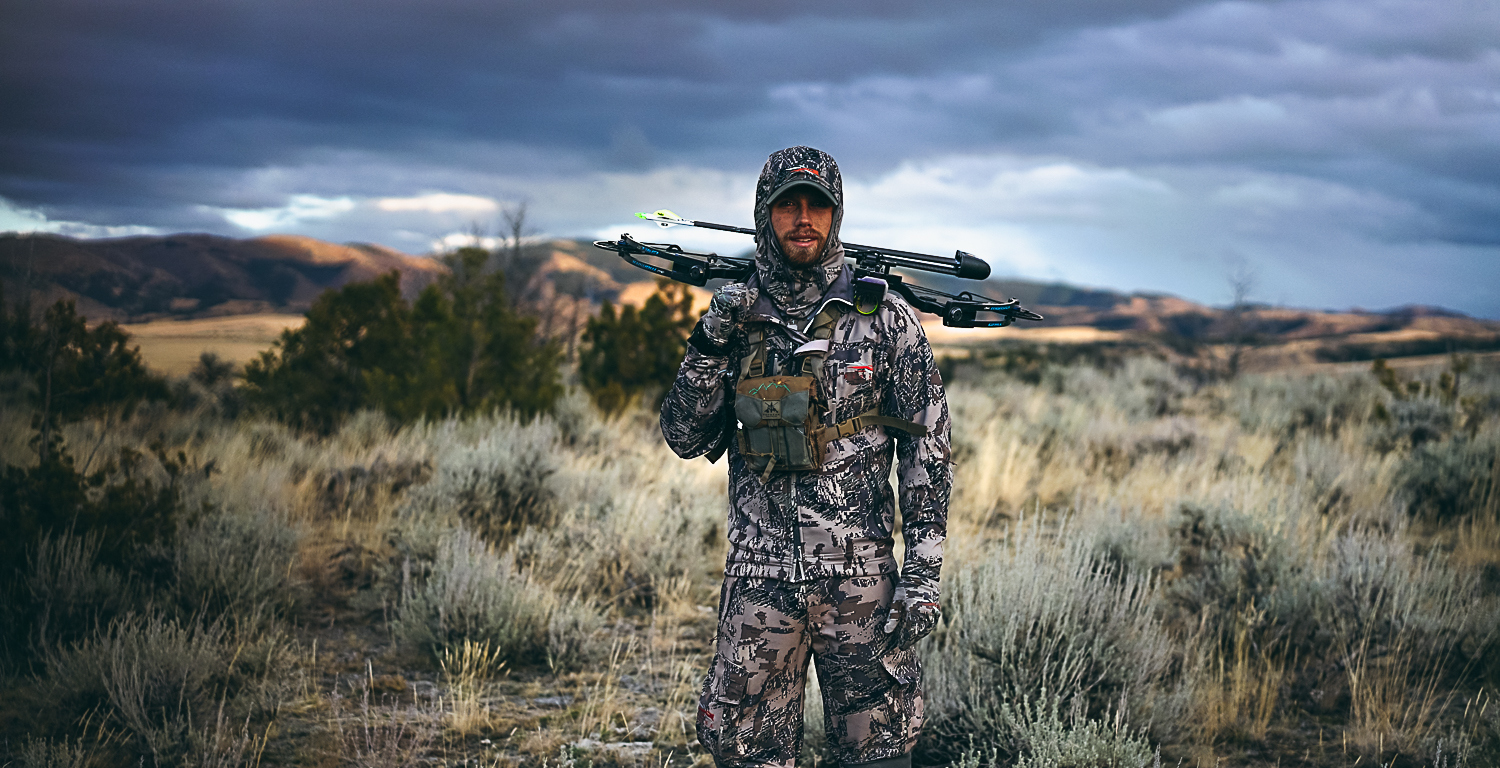
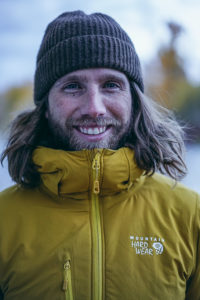
Charles Post is an academically trained ecologist with a gift for communicating complex and sometimes emotionally charged issues in a thoughtful manner to diverse audiences. Whether he’s discussing the intricacies of ranch management, the ecological implications of ethical hunting, or controversies surrounding the BLM’s wild mustang program, Charles has honed his ability to consider all sides of issues, then educate the public in a style that is positive, comprehensive, and intellectually honest. His academic credentials, combined with his photography, writing, filmmaking, and popular social media channels have made Charles a rising star in the world of conservation.
Born and raised in northern California, Charles has enjoyed a deep connection with Western landscapes for as long as he can remember. He grew up hunting, fishing, and exploring the seascapes and mountain ranges of the West Coast, then earned both a Bachelors and Masters in ecology from UC Berkeley. After considering pursuing a PhD followed by a career in academia, Charles changed course and pursued a less traditional track that melded his two passions of science and storytelling. Since then, he has settled in Bozeman, Montana where he works on a wide range of projects that all tie back into conservation and stewardship in the American West.
Charles and I talked for well over an hour, and could’ve easily continued for several more. We discuss his recent work for Filson covering Ranchlands, a progressive, forward-thinking ranching operation in southern Colorado. We also chat about the ecological importance of ranching for Western landscapes and the progress that Charles has made trying to change some of the unfounded negative impressions of ranching and livestock. We talk about his recent elk hunt, and how that adventure was one of the richest, most meaningful experiences of his life. Charles speaks fondly about his relationship with Ben Masters, who helped him break into the filmmaking world. It also turns out that we have a shared love of the American Dipper (which is a bird, for those of you out of the loop), and we nerd out on that subject for a few minutes. As usual, we discuss favorite books, films, and the best advice he’s ever received.
If you’re a long-time listener, you will love this episode… and if you’re brand new, I hope you will, too! Be sure to check out Charles on Instagram at @charles_post and check the episode notes for everything we discuss. Enjoy!
All images courtesy of Rachel Pohl
Click Here to Download on iTunes
—
Click Here to Download on Google Play
—
Click Here to Download on Stitcher
—
Episode Notes
Topics Discussed:
5:10 – How Charles describes his work
6:30 – Why Charles identifies as an ecologist
8:50 – Science versus communicating to the mainstream
10:30 – Charles experience with Ranchlands and thoughts on ranching
17:45 – How Charles tells the ranching story
20:45 – Resources for learning more about ranching
21:55 – Discussion about wolves’ effects on Yellowstone
24:35 – Where Charles grew up
25:50 – Charles’ connection to Gifford Pinchot
29:40 – Hunting from a conservation perspective
32:25 – Modern Huntsman
35:15 – Interplay between public and private land
41:40 – How science shaped his ability to be objective
43:40 – His approach to social media
49:45 – The importance of Charles’s sponsors and supporters
54:30 – Charles’s personal history with hunting
1:01:40 – Favorite books
1:08:10 – Weird habits and quirks
1:09:30 – American Dipper nerd-fest
1:12:20 – Most powerful experience in the outdoors
1:16:00 – Best advice he’s ever received
1:19:25 – Charles’s request of the listeners
1:20:50 – Connect with Charles online
- Charles Post – Website & Instagram
- US Berkeley Ecology
- Ranchlands
- Ranchlands Filson Campaign
- The Lasater Philosophy of Raising Cattle by Laurence Lasater
- How Wolves Change Rivers
- Ben Masters podcast
- Jim Howell podcast
- For the Love of Land by Jim Howell
- Gifford Pinchot
- Rachel Pohl
- KEEN
- Mountain Hardwear
- The Big Burn by Timothy Egan
- The Wilderness Warrior by Douglas Brinkley
- Undaunted Courage by Stephen Ambrose
- Sand County Almanac by Aldo Leopold
- Desert Solitaire by Edward Abbey
- The Monkeywrench Gang by Edward Abbey
- All the Wild That Remains by David Gessner
- David Gessner
- The Great Animal Orchestra by Bernie Krause
- Elk River
- Island Earth
- Sonic Sea
- Chasing Coral
- Chasing Ice
- American Dipper
- Sky Migrations
Mark Maggiori – A Fresh View of the American West

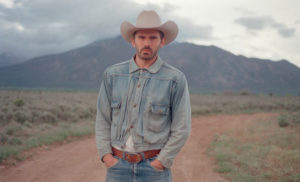
Mark Maggiori has taken the western art scene by storm with his dramatically realistic paintings of cowboys, horses, landscapes, and scenes from the American West. But painting is only a small part of Mark’s journey as a professional artist—he is also an accomplished director, filmmaker, drawer, photographer, and musician, working for companies like Disney as an illustrator and fronting a major-record-label rock band. To make his story even more interesting, Mark was born and raised in France, and is a relative newcomer to the western United States.
When he was 15, Mark took a road trip across America with his adventurous uncle, igniting his passion for Western landscapes and planting the seed of his western art career that would flourish two decades later. Between then and now, he has demonstrated an uncanny ability to dive headfirst into a wide array of artistic endeavors with single-minded focus and work ethic, enjoying success at every level. At little over three years ago, at age 36, all of Mark’s talents and experiences melded together when he decided to try and paint his first cowboy. In what he describes as an epiphany, Mark immediately knew he had found his true identity as an artist.
Mark and I had a fun conversation. We talk about all the stages of his prolific career as an artist, and how he has approached each one with a laser-like focus and uncompromising work ethic. Mark explains how he discovered his talent for drawing—a talent that he had no idea he possessed until after he had enrolled in art school. We also chat about how being new to America has afforded him a fresh perspective on the people and landscapes of the American West, a perspective that shines through in his paintings. He gives details on his workman-like approach to painting and ensuring the historical accuracy of his work, and how exercise helps to fuel his creativity and work ethic. As usual, we cover favorite books, documentaries, and the craziest thing that’s ever happened to him in the outdoors, which is a ridiculous and pretty damn scary story!
Be sure to check out the webpage for links to all of Mark’s work, his upcoming solo show, and everything we discuss in this episode. Hope you enjoy!
All images courtesy of Mark Maggiori
Click Here to Download on iTunes
—
Click Here to Download on Google Play
—
Click Here to Download on Stitcher
—
Episode Notes
Topics Discussed:
5:11 – Growing up in France
6:30 – Road trip across America
11:20 – Mark’s interests as a teenager
12:40 – The attraction to art school
15:40 – Discovering his talent for art
18:45 – Learning work ethic
20:30 – Working for Disney
22:45 – Working in music videos
23:45 – Performing music and creating art
24:30 – Mark’s time with Pleymo
27:25 – Leaving music
32:00 – Coming to America to make a film
35:40 – Demolition derbies and rodeos
36:50 – Starting to paint cowboys
41:00 – Building his following through Instagram and networking
44:00 – Expanding to new galleries
45:00 – Secret of painting clouds
47:55 – Keeping his work accurate
50:00 – Starting to paint Native Americans
54:30 – Mark’s daily routine
58:45 – Favorite books
1:01:00 – Favorite documentaries
1:02:30 – Favorite place in the West
1:03:50 – Most powerful experience in the outdoors
1:05:30 – Getting chased by crazy people in Louisiana
1:10:15 – Mark’s request of the listeners
1:12:50 – Connect with Mark online and learn about his upcoming art show
- Mark Maggiori – Website & Instagram
- “Lonesome Souls” — Mark’s upcoming solo show
- Fontainebleau, France
- Maxwell Alexander Gallery
- Gerald Peters Gallery
- Trailside Galleries
- Pleymo
- Desert Solitaire by Edward Abbey
- Silent Spring by Rachel Carson
- An American Idea by Kim Heacox
- Emerald Mile by Kevin Fedarko
- Lassoing the Sun by Mark Woods
- Unbranded
- Duke Beardsley interview
- Stephen Smith interview
Tyler Sharp, Part II – Modern Huntsman
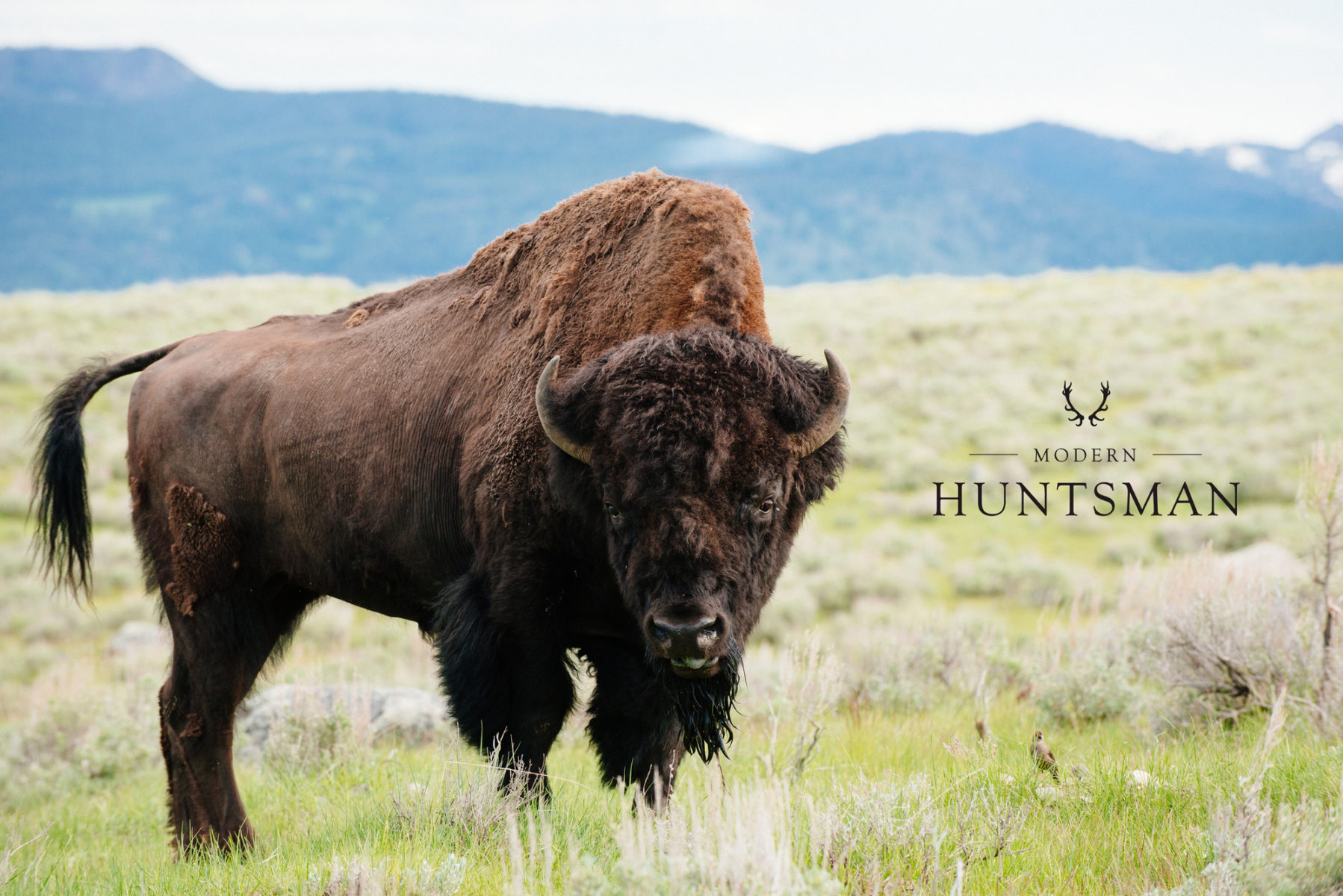
Tyler Sharp, Part II – Modern Huntsman
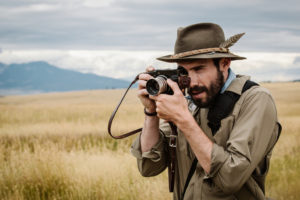
Modern Huntsman is a biannual publication and online forum for conservationists, creatives, and outdoor enthusiasts. If you enjoy this podcast and my guests’ depth of thinking on topics related to the natural world, then you’re going to love Modern Huntsman. Through thoughtful writing, captivating photography, and elegant design, Tyler and his all-star team intend to improve the perception of hunting in our society by highlighting its thoughtful and conservation-focused aspects, which are often ignored by established media.
I like to hunt, although I’m not obsessed with it like I am with endurance sports. But my work in conservation and deep reading of natural history have given me a firsthand appreciation for the importance of hunting, and the vital role it plays in conserving landscapes and species around the world. Without the efforts of visionary hunters like Theodore Roosevelt, the healthy wildlife populations we enjoy here in the American West would be a mere fraction of what they are today, if they existed at all. Thanks to their deep respect for wildlife born from their love of the sport of hunting, TR and his contemporaries set in motion a conservation ethic that continues to grow and evolve. Now, over 100 years later, Modern Huntsman will carry that ethic forward.
Once again, Tyler and I had a wonderful conversation, and I was incredibly impressed with his ability to discuss complex, sometimes emotionally charged issues in a respectful, intelligent, and non-arrogant tone. Of course we discussed the details of Modern Huntsman, its origins, and why there is a need for such a publication. We chatted about Modern Huntsman’s current Kickstarter campaign, which I highly recommend you support—links are in the notes. We also talked in depth about some of the misconceptions around hunting and specifics about why hunting is so important for conservation throughout the world. And just like last time, Tyler had some excellent book recommendations.
This was a fun and enlightening conversation, so I hope you enjoy. Check out the episode notes for links to everything, and be sure the check out the Modern Huntsman Kickstarter page, watch the film, and support the project.
All images courtesy of Tyler Sharp & Modern Huntsman
Click Here to Download on iTunes
—
Click Here to Download on Google Play
—
Click Here to Download on Stitcher
—
Episode Notes
Topics Discussed:
Information Referenced
- Tyler Sharp – Website and Instagram
- Tyler’s First Mountain & Prairie Podcast episode
- Modern Huntsman Kickstarter page
- www.bit.ly/modernhuntsman
- Modern Huntsman on Instagram
- Drop Cap Design
- Ben Masters interview
- Camrin Dengel interview
- John Dunaway interview
- Stephen Rinella
- Theodore Roosevelt
- The Man-Eaters of Tsavo by John Henry Patterson
- The Ghost and the Darkness
- Something of Value by Robert Ruark
- The Old Man and the Boy by Robert Ruark
- Meditations on Hunting by Jose Ortega y Gasset
- Green Hills of Africa by Ernest Hemingway
- The Short and Happy Life of Francis Macomber by Ernest Hemingway
- The Snows of Kilimanjaro by Ernest Hemingway
- Out of Africa by Isak Dinesen
Scott Slusher – The Cowboys’ Cowboy Photographer
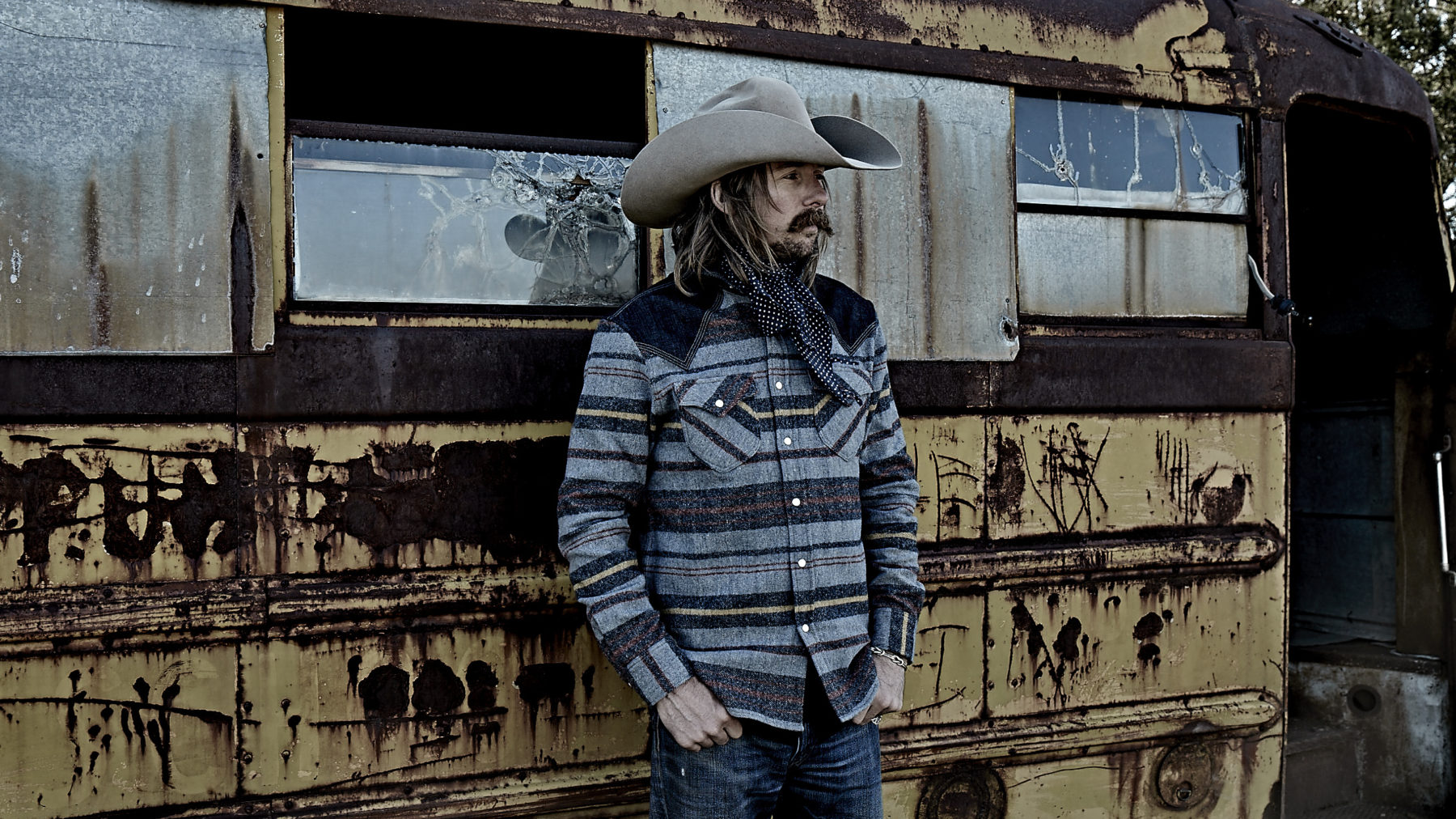
Scott Slusher – The Cowboys’ Cowboy Photographer
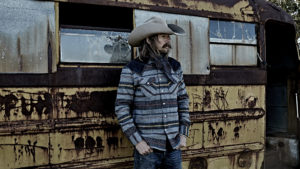
Scott Slusher is an Oklahoma native and Texas-based photographer who is best known for his stunning images of cowboys and life on working ranches. After seeing Scott’s work, it is crystal clear that he has a deep understanding of the ranching lifestyle and has invested more than his share of time out in the heat and dust, on horseback or in the branding pen. Given his immersion in the tough, hard-nosed world of ranching, you may be surprised to learn that Scott was trained as a fashion photographer and still works with a variety of big-name companies on their fashion and clothing line spreads.
So what allows Scott to have success in two worlds as diametrically opposed as ranching and fashion? Well, as you’ll hear in this interview, Scott has a habit of pursuing his interests with a single-minded intensity and curiosity, unafraid of getting in over his head, venturing outside his comfort zone, or working harder than expected. Combine those traits with endless energy and a knack for making friends with everyone he meets, and you’ll understand how Scott has managed to work his way onto iconic ranches, riding alongside and photographing some of the best ranch hands in the business.
Scott’s enthusiasm and love of people really come through in our conversation, so I know you’ll enjoy it. We talk about his childhood in Oklahoma and how his father’s work as a veterinarian and horse breeder shaped his outlook. We chat about his time as a photography intern and how he chose to dive head first into no-fun chores (like mopping the floor), and how that optimistic, high-energy approach has paid off time and again throughout his career. We also discuss how he broke into photographing cowboys, and how his respectful approach has allowed him to be accepted by ranch hands throughout the West. We cover a ton, so check out the episode notes for a full list of topics and links.
If you don’t already, be sure to follow Scott on Instagram at @slusherphoto—if you love the West and the ranching lifestyle, I can guarantee you’ll love his work. Hope you enjoy this episode.
All images courtesy of Scott Slusher
Click Here to Download on iTunes
—
Click Here to Download on Google Play
—
Click Here to Download on Stitcher
—
Episode Notes
Topics Discussed:
2:45 – How Scott describes his work
4:50 – Where Scott grew up
8:30 – Time working at a vet clinic
12:00 – Applying to art school in Dallas
14:00 – Finding focus in art school
18:00 – Work ethic during his first internship
22:30 – First time taking photos of cowboys
26:00 – Making folks feel comfortable during photo shoots
27:20 – How he broke into the cowboy culture
33:00 – Working at the Four 6s Ranch
36:15 – Importance of networking
40:00 – Close calls during ranch photography
44:45 – Close call during a rodeo
49:30 – Importance of social media in Scott’s career
1:04:00 – Important books
1:09:00 – Favorite films
1:14:00 – Words of advice to the listeners
1:15:00 – Connect with Scott online
Information Referenced
- Scott Slusher
- Scott’s Instagram and Facebook
- 6666 Ranch
- Teal Blake
- Pictures from the Costa Rican Rodeo
- Duke Beardsley
- Barbarian Days by William Finnegan
- Coyote America by Dan Flores
- Dan Flores
- The Rum Diary by Hunter S Thompson
- Unbranded
- Ben Masters
- Apaloosa
- Lonesome Dove
- Nacho Libre
- Big Lebowski
- Jeff Bridges
Duke Beardsley – Art in the Big, Bold American West

Duke Beardsley – Art in the Big, Bold American West
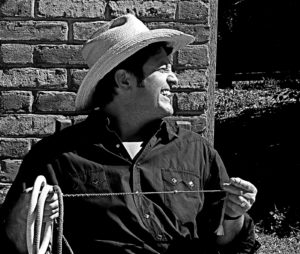
Duke Beardsley was well on his way to a career in medicine, when, just before med school, he took a hard turn onto a new path when he decided to pursue art as a full-time vocation. Since then, he has become one of the West’s most revered artists, producing paintings of cowboys, anglers, and the Western way of life in a style that is uniquely his own. His work is big, bold, and completely original, and it continues to grow and evolve in ways that surprise even Duke himself.
Thanks to a childhood spent between Denver and his family’s eastern Colorado ranch, Duke has been immersed in cowboy culture for as long as he can remember. He has been drawing non-stop since he could hold a crayon, and as a child (sometimes to the dismay of his parents) he demonstrated a proclivity for sketching western scenes on the walls of his family’s home. Duke is also a committed conservationist with a deep devotion to preserving the West’s landscapes and heritage. This eclectic mix of experiences and interests, combined with a formal art education, allows Duke to produce works that are ambitious, inspiring, and engaging.
I stopped by Duke’s Denver studio earlier this week, where we had a fun and wide-ranging conversation. We chat about his decision to change his career goal from medicine to art, and the value he gleaned from a formal art education. He explains that life-long obsession with drawing on walls, and he tells some stories about how, as an adult, drawing on walls has led to surprising professional opportunities. We talk about his artistic process, his meditation practice, and how he managed his extroverted personality in the solitary world of creating art. He also discusses why land conservation is an issue that is so near and dear to his heart, and offers up some excellent book recommendations.
This was a lot of fun and I really appreciate Duke inviting me into his studio. Be sure to check the episode notes for links to everything we discuss, and check out Duke on Instagram, Facebook, and his website.
All images courtesy of Duke Beardsley
Click Here to Download on iTunes
—
Click Here to Download on Google Play
—
Click Here to Download on Stitcher
—
Episode Notes
Topics Discussed:
3:30 – Growing up between Denver and eastern Colorado
5:15 – Artistic energy in Duke’s family
6:30 – Duke’s early path toward medicine
8:30 – Transition to art school
9:40 – Biggest lesson learned from art school
12:20 – Focusing his art on horses and the West
14:20 – Life post-art school
15:30 – How Duke’s art is different now from 20 years ago
18:30 – Drawing on the wall
20:20 – Why Duke paints big pieces
21:31 – Story behind Duke’s line ups
24:45 – Getting in “the zone” while painting line ups
26:40 – Working on multiple pieces at once
27:50 – Working with galleries
29:00 – Process for commissioned paintings
31:45 – Extrovert or Introvert?
34:30 – Duke’s artistic process
38:00 – Duke’s meditation practice
41:00 – Drawing on the wall at Las Pampas Lodge
44:00 – Working with Fishpond
45:50 – Passion for land conservation
49:30 – Favorite books
52:34 – Favorite films
54:00 – Surprising activities
54:45 – Most powerful outdoor experience
57:00 – Favorite place in the West
58:40 – Best peice of advice ever recieved
59:45 – Duke’s request of the listeners
1:00:30 – Connect with Duke online
Information Referenced
- Duke Beardsley
- Duke on Instagram and Facebook
- Dartmouth College
- The Claremont Colleges
- ArtCenter College of Design
- Altamira Fine Art
- Virginia Diaz Saiki
- Las Pampas Lodge
- Patagonia Fly Fishing
- Fishpond
- Woody Beardsley
- Cadillac Desert by Mark Reisner
- Beyond the 100th Meridian by Wallace Stegner
- Legacy of Conquest by Patricia Limerick
- Blood and Thunder by Hampton Sides
- Angle of Repose by Wallace Stegner
- The River Why by David James Duncan
- Empire of the Summer Moon by SC Gwynne
- The Heart of Everything That Is by Drury and Clavin
- The Emerald Mile by Kevin Fedarko (Duke accidentally said “Miracle Mile”)
- Cormac McCarthy
- Blood Meridian by Cormac McCarthy
- The Road by Cormac McCarthy
- Chinatown
- Blackthorn
- The Three Burials of Melquiades Estrada
- Ain’t in It for My Health – A Film About Levon Helm
- Yahtzee
- Thatcher School
- Ray Turner
Innovators of the American West Book List
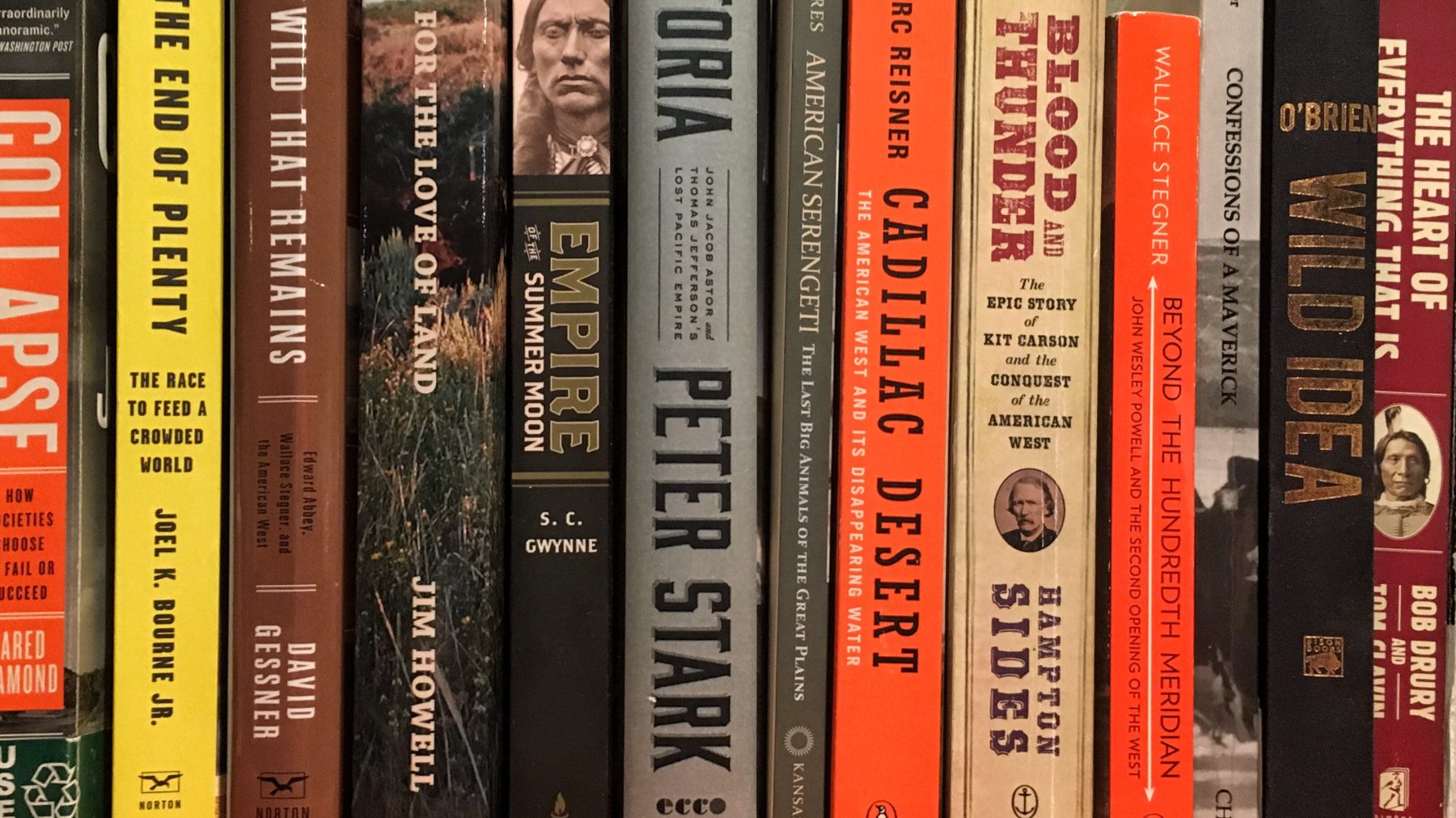
Innovators of the American West Book List
Over the years, I’ve interviewed dozens of innovators who are shaping the future of the American West—writers and ranchers, athletes and artists, conservationists and entrepreneurs, to name a few. While their vocations and backgrounds vary widely, they’re all connected by a shared love of books. All of my guests read widely and deeply, and they credit books with shaping their outlooks, work, and lives.
On each episode’s webpage, the exhaustive “episode notes” link to all books, authors, and other pertinent information discussed in the interview. So in an effort to consolidate all of this valuable information in one easy-to-access location, I compiled every book mentioned by each of my guests into this single comprehensive super-mega-list—the Innovators of the American West Book List. I’ve tried my best to organize them into logical categories, taking into account that many of the books span several genres.
As you’ll see, the books are as diverse as the guests, with topics ranging from the obvious western history and biographies, to more esoteric subjects such as military history, religion, and philosophy. Each book has played an important role in at least one of my guests’ fascinating lives, so it’s safe to say these books have been vetted and come highly recommended. For curious readers who love the American West, this list is a treasure trove.
I will continue to update this list after episodes (last update: 3-13-19), adding newly mentioned books or authors to their respective categories. I hope this list directs you to some books that you would not have otherwise discovered and that you will continue to check back as the list grows. Enjoy!
Western History
- Astoria: John Jacob Astor and Thomas Jefferson’s Lost Pacific Empire: A Story of Wealth, Ambition, and Survival by Peter Stark
- Jefferson’s America: The President, the Purchase, and the Explorers Who Transformed a Nation by Julie Fenster
- Blood and Thunder: The Epic Story of Kit Carson and the Conquest of the American West by Hampton Sides
- The Big Burn: Theodore Roosevelt and the Fire that Saved America by Timothy Egan
- The Worst Hard Time: The Untold Story of Those Who Survived the Great American Dust Bowl by Timothy Egan
- American Buffalo: In Seach of a Lost Icon by Steven Rinella
- Nothing Daunted: The Unexpected Education of Two Society Girls in the West by Dorothy Wickenden
- Beyond the 100th Meridian: John Wesley Powell and the Second Opening of the West by Wallace Stegner
- Sweet Promised Land by Robert Laxalt
- Winter: Notes from Montana by Rick Bass
- Dust Bowl: The Southern Plains in the 1930s by Donald Worster
- Roughing It by Mark Twain
- The Legacy of Conquest: The Unbroken Past of the American West by Patricia Limerick
- Undaunted Courage: Meriwether Lewis, Thomas Jefferson, and the Opening of the American West by Stephen Ambrose
- An American Idea: The Making of the National Parks by Kim Heacox
- Lassoing the Sun: A Year in America’s National Parks by Mark Woods
- Young Men and Fire by Norman Maclean
- Cattle Kingdom: The Hidden History of the Cowboy West by Christopher Knowlton
- Bad Land: An American Romance by Jonathan Raban
- Short Nights of the Shadow Catcher: The Epic Life and Immortal Photographs of Edward Curtis by Timothy Egan
- Cougar Annie’s Garden by Margaret Horsfield
- Down the Santa Fe Trail and Into Mexico: The Diary of Susan Shelby Magoffin by Susan Magoffin
- Montana: An Uncommon Land by Ross Toole
- Big Bend: A Homesteaders Story by JO Langford
- The Big Ranch Country by JW Williams
Biographies & Memoirs
- The Naturalist: Theodore Roosevelt, A Lifetime of Exploration, and the Triumph of American Natural History by Darrin Lunde
- The Rise of Theodore Roosevelt by Edmund Morris
- Theodore Rex by Edmund Morris
- Colonel Roosevelt by Edmund Morris
- The Wilderness Warrior – Theodore Roosevelt and the Crusade for America by Douglas Brinkley
- Theodore Roosevelt in the Badlands: A Young Politician’s Quest for Recovery in the American West by Roger Di Silvestro
- An African Obsession: The Life and Legacy of Carl Akeley by Penelope Bodry-Sanders
- All the Wild that Remains: Edward Abbey, Wallace Stegner, and the American West by David Gessner
- No Destination: Autobiography of a Pilgrim by Satish Kumar
- Shadows of the Koyukuk: An Alaskan Native’s Life Along the River by Sidney Huntington
- Confessions of a Maverick: An Autobiography by Farrington Carptenter
- Call Me Ted by Ted Turner
- Last Stand: Ted Turner and His Quest to Save a Troubled Planet by Todd Wilkinson
- On the Road by Jack Kerouac
- The Hippy Guide to Climbing the Corporate Ladder and Other Mountains: How JanSport Makes It Happen by Skip Yowell
- Memoirs of the Second World War by Winston Churchill
- The Prophet of Dry Hill: Lessons from a Life in Nature by David Gessner
- Knife Fights: A Memoir of Modern War in Theory and Practice by John Nagl
- Barbarian Days: A Surfing Life by William Finnegan
- House of Sky: Landscapes of a Western Mind by Ivan Doig
- Heart Earth: A Memoir by Ivan Doig
- The Glass Castle: A Memoir by Jeanette Walls
- The Dirty Life: A Memoir of Farming, Food, and Love by Kristin Kimball
- Temperance Creek: A Memoir by Pamela Royes
- Ladies of the Canyons: A League of Extraordinary Women and Their Adventures in the American Southwest by Lesley Poling-Kempes
- Two in the Far North by Margaret Murie
- Claiming Ground by Laura Bell
- Dakota: A Spiritual Geography by Kathleen Norris
- The Cloister Walk by Kathleen Norris
- Where the Rivers Change by Mark Spragg
- 60 Meters to Anywhere by Brendan Leonard
- Life at Full Draw: The Chuck Adams Story by Gregg Gutschow
- Breaking Clean by Judy Blunt
- The Mountain and the Father: Growing Up in the Big Dry by Joe Wilkins
- Bad Luck Way: A Year on the Ragged Edge of the West by Bryce Anderson
- The Far Horizons: 30 Years Among the Gauchos of Uraguay by Christopher Empson
- The Solace of Open Spaces by Gretel Ehrlich
Western Issues
- Colorado Water Law for Non-Lawyers by P. Andrew Jones
- Cadillac Desert: The American West and its Disappearing Water by Marc Reisner
- Man Meets Gizzly by F.M. Young
- Death in Yellowstone: Accidents and Foolhardiness in the First National Park by Lee H Whittlesey
- The Abstract Wild by Jack Turner
- Monkey Wrench Gang by Edward Abbey
- Desert Solitaire by Edward Abbey
- Wild Idea: Buffalo and Family in a Difficult Land by Dan O’Brien
- Ranching West of the 100th Meridian edited by Knight, Gilgert, and Marston
- Crossing The Next Meridian: Land, Water, and the Future of the West by Charles Wilkinson
- The Secret Knowledge of Water: Discovering the Essence of the American West by Craig Childs
- Where the Water Goes: Life and Death Along the Colorado River by David Owen
- The Grand Canyon: Between River and Rim by Pete McBride
- A Great Aridness: Climate Change and the Future of the American West by William deBuys
- Losing Eden: An Environmental History of the American West by Sara Dant
- Recovering a Lost River: Removing Dams, Rewilding Salmon, Revitalizing Communities by Stephen Hawley
- A River Lost: The Life and Death of the Columbia River by Blaine Harden
Adventure
- The Emerald Mile: The Epic Story of the Fastest Ride in History Through the Heart of the Grand Canyon by Kevin Fedarko
- Beyond the Mountain by Steve House
- River of Doubt: Theodore Roosevelt’s Darkest Journey by Candice Millard
- The Horizontal Everest: Extreme Journeys on Ellesmere Island by Jerry Kobalenko
- Into the Wild by Jon Krakauer
- Into Thin Air: A Personal Account of the Mt. Everest Disaster by John Krakauer
- Touching the Void: The True Story of One Man’s Miraculous Survival by Joe Simpson
- Fire on the Mountain: The True Story of the South Canyon Fire by John Maclean
- Young Men and Fire by Norman Maclean
- The Fire Line: The Story of the Granite Mountain Hotshots by Fernanda Santos
- Endurance: Shackleton’s Incredible Voyage by Alfred Lansing
- Fire by Sebastian Junger
- The Wild Places by Robert MacFarlane
- The Man-Eaters of Tsavo by John Henry Patterson
- The New American Road Trip Mixtape by Brendan Leonard
- Horns in the High Country by Andy Russell
- Death in the Long Grass by Peter Capstick
- Death in the Silent Places by Peter Capstick
- My Family and Other Animals by Gerald Durrell
Native American History
- Crowfoot: Chief of the Blackfeet by Hugh Dempsey
- The Apache Wars: The Hunt for Geronimo, the Apache Kid, and the Captive Boy Who Started the Longest War in American History by Paul Andrew Hutton
- The Heart of Everything That Is: The Untold Story of Red Cloud, An American Legend by Bob Drury and Tom Clavin
- Empire of the Summer Moon: Quanah Parker and the Rise and Fall of the Comanches, the Most Powerful Tribe in American History by S.C. Gwynne
- Corn Among the Indians of the Upper Missouri by George Francis Will and George E. Hyde
- Bury My Heart at Wounded Knee: An Indian History of the American West by Dee Brown
- Custer Died for Your Sins: An Indian Manifesto by Vine Deloria, Jr.
- God is Red: A Native View of Religion by Vine Deloria, Jr.
- Mitakuye Oyasin: We Are All Related by A.C. Ross
- Indian Why Stories by Frank B Linderman
- An Indigenous Peoples’ History of the United States by Roxanne Dunbar-Ortiz
- Blood Struggle: The Rise of Modern Indian Nations by Charles Wilkinson
- I Will Fight No More Forever: Chief Joseph and the New Perce War by Merrill Beal
Land Management & Agriculture
- For the Love of Land: Global Case Studies of Grazing in Nature’s Image by Jim Howell
- Holistic Managment: A New Framework for Decision Making by Allan Savory
- Knowledge Rich Ranching by Allan Nation
- No Risk Ranching: Custom Grazing on Leased Land by Greg Judy
- Turn Here Sweet Corn: Organic Farming Works by Atina Diffley
- Braiding Sweetgrass: Indigenous Wisdom, Scientific Knowledge and Teachings of Plants by Robin Wall Kimmerer
- Living with Fire: Fire Ecology and Policy for the 21st Century by Sara Jensen and Guy McPherson
- Cradle of Forestry in America by Carl Schenck
- The End of Plenty: The Race to Feed a Crowded World by Joel K Bourne
- The Lasater Philosophy of Raising Cattle by Laurence Lasater
- The Unsettling of America: Culture & Agriculture by Wendell Berry
- In Defense of Food: An Eater’s Manifesto by Michale Pollan
- Defending Beef: The Case for Sustainable Meat Production by Nicolette Hahn Niman
- Cows Save the Planet: And Other Improbable Ways of Restoring Soil to Heal the Earth by Judith D. Schwartz
- The Third Plate: Field Notes on the Future of Food by Dan Barber
- Lentil Underground: Renegade Farmers and the Future of Food in America Liz Carlisle
- How to Not Go Broke Ranching: Things I Learned the Hard Way in Fifty Years of Ranching by Walt Davis
History & Natural History
- Citizens of London: The Americans Who Stood with Britain in Its Darkest Hour by Lynee Olson
- Tribe: On Homecoming and Belonging by Sebastian Junger
- The Song of the Dodo: Island Biogeography in an Age of Extinction by David Quammen
- Fire: A Brief History by Stephen Pyne
- Coyote America: A Natural and Supernatural History by Dan Flores
- American Serengeti: The Last Big Animals of the Great Plains by Dan Flores
- American Wolf: A True Story of Survival and Obsession in the West by Nate Blakeslee
- Silent Spring by Rachel Carson
- The Great Animal Orchestra: Finding the Origins of Music in the World’s Wild Places by Bernie Krause
- Seeing Nature: Deliberate Encounters with the Visible World by Paul Krafel
- Guns, Germs, and Steel: The Fates of Human Societies by Jared Diamond
- Collapse: How Societies Choose to Fail or Succeed by Jared Diamond
- The Nature Fix: Why Nature Makes Us Happier, Healthier, and More Creative by Florence Williams
- Backcountry Bow Hunting by Cam Haynes
- The Emperor of all Maladies: A Biography of Cancer by Siddhartha Mukherjee
- Deer Hunting with Jesus: Dispatches from America’s Class War by Joe Begeant
- On Desperate Ground: The Marines at the Reservoir, the Korean War’s Greatest Battle by Hampton Sides
- Changes in the Land: Indians, Colonists, and the Ecology of New England by William Cronon
- Bowling Alone: The Collapse and Revival of American Community by Robert Putnam
- Seeing Like a State: How Schemes to Improve the Human Condition Have Failed by James Scott
- Manhunt: The 12-Day Hunt to Catch Lincoln’s Killer by James Swanson
- Body of Water: A Sage, a Seeker, and the World’s Most Elusive Fish by Chris Dombrowski
- Coming Into the Country by John McPhee
- One River: Explorations and Discoveries in the Amazon Rainforest by Wade Davis
- Down from the Mountain: The Life and Death of a Grizzly Bear by Bryce Andrews
Athletics
- Training for the New Alpinism: A Manual for the Climber as Athlete by Steve House and Scott Johnston
- Born to Run: A Hidden Tribe, Superathletes, and the Greatest Race the World Has Never Seen by Christopher McDougall
- Natural Born Heroes: How a Daring Band of Misfits Mastered the Lost Secrets of Strength and Endurance by Christopher McDougall
Personal & Creative Development
- How to Win Friends and Influence People by Dale Carnegie
- Good to Great for the Social Sectors: Why Business Thinking is Not the Answer by Jim Collins
- War of Art: Break Through the Blocks and Win You Inner Creative Battle by Stephen Pressfield
- The Power of Habit: Why We Do What We Do in Business and Life by Charles Duhigg
- The 4-Hour Work Week: Escape 9-5, Live Anywhere, and Join the New Rich by Tim Ferriss
- Forever Changed: How Summer Programs and Insight Mentoring Challenge Adolescents and Transform Lives by Linda Mornell
- Quiet: The Power of Introverts in a World That Can’t Stop Talking by Susan Cain
- Sit Like a Buddha: A Pocket Guide to Meditation by Lodro Rinzler
- Walk Like a Buddha: Even if Your Boss Sucks, Your Ex Is Torturing You, and You’re Hungover Again by Lodro Rinzler
- Make It Till You Make It: 40 Myths and Truths About Creating by Brendan Leonard
- In Praise of Shadows by Junichiro Tanizaki
- Wabi Sabi for Artists, Designers, Poets, and Philosophers by Leonard Koren
- Deep Work: Rules for Focused Success in a Distracted World by Cal Newport
- Big Magic: Creative Living Beyond Fear by Elizabeth Gilbert
- The Poetics of Space by Gaston Bachelard
- The Four Agreements by Don Migel Ruiz
- Man’s Search for Meaning by Viktor Frankl
- Last Child in the Woods by Richard Louv
- Presence: Human Purpose and the Field of the Future by Peter Senge et. al.
- The Compassionate Achiever by Christopher Kukk
- Draft No. 4 by John McPhee
Fiction
- Atlas Shrugged by Ayn Rand
- The Grapes of Wrath by John Steinbeck
- East of Eden by John Steinbeck
- The Time Traveler’s Wife by Audrey Niffenegger
- Lonesome Dove by Larry McMurtry
- Anthill: A Novel by E.O. Wilson
- My Side of the Mountain by Jean Craighead George
- Adventures of Tom Sawyer by Mark Twain
- Adventures of Huckleberry Finn by Mark Twain
- The Lord of the Rings by J.R.R. Tolkien
- The Hobbit by J.R.R. Tolkien
- War and Peace by Leo Tolstoy
- Sometimes a Great Notion by Ken Kesey
- The Drifters: A Novel by James Michener
- The Dog Stars by Peter Heller
- The Border Trilogy by Cormac McCarthy
- Blood Meridian by Cormac McCarthy
- The Road by Cormac McCarthy
- Angle of Repose by Wallace Stegner
- The River Why by David James Duncan
- The Rum Diary: A Novel by Hunter S Thompson
- Green Hills of Africa by Ernest Hemingway
- The Short and Happy Life of Francis Macomber by Ernest Hemingway
- The Snows of Kilimanjaro by Ernest Hemingway
- Out of Africa by Isak Dinesen
- Something of Value by Robert Ruark
- The Old Man and the Boy by Robert Ruark
- A River Runs Through It by Normal Maclean
- Half Broke Horses: A True-Life Novel by Jeannette Walls
- Travels with Charley in Search of America by John Steinbeck
- Youth by Joseph Conrad
- Typhoon by Joseph Conrad
- Little Britches series by Ralph Moody
- Little House series by Laura Ingalls Wilder
- Little Big Man: A Novel by Thomas Berger
- Bless Me, Ultima by Rudolfo Anaya
- A Heartbreaking Work of Staggering Genius by Dave Eggars
- The Painter by Peter Heller
- A Brief History of Seven Killings by Marlon James
- Blind Your Ponies by Stanley Gordon West
- Prodigal Summer by Barbara Kingsolver
- The Glass Castle by Jeannette Walls
- The Wolves of Currumpaw by William Grill
- Crime and Punishment by Fyodor Dostoevsky
- A Thousand Acres: A Novel by Jane Smiley
- The Road Home by Jim Harrison
- Legends of the Fall by Jim Harrison
- All the King’s Men by Robert Warren Penn
- Where the Bluebird Sings to the Lemonade Springs by Wallace Stegner
- Three Day Road by Joseph Boyden
- Ismael by Daniel Quinn
- Trails Plowed Under by Charles Russell
- 100 Years of Solitude by Gabriel Marquez
- The Sheep Queen by Thomas Savage
- My Antonia by Willa Cather
- The Meadow by David Galvin
- Indian Horse by Richard Wagamese
- Gallatin Canyon by Thomas McGuane
Philosophy & Essays
- The Power of Myth by Joseph Campbell
- The Hero with a Thousand Faces by Joseph Campbell
- The Walk by William deBuys
- A Native Hill by Wendell Berry
- The Problems of Work by L Ron Hubbard
- Shop Class as Soulcraft: An Inquiry into the Value of Work by Matthew Crawford
- Meditations on Hunting by Jose Ortega y Gasset
- A Sand County Almanac by Aldo Leopold
- The Alchemist by Paulo Coelho
- Walking by Henry David Thoreau
- The Public and Its Problems: An Essay in Political Inquiry by John Dewey
- West of 98: Living and Writing in the New American West by Lynn Stegner
Specifically Mentioned Authors
- Wendell Berry
- Aldo Leopold
- Edward Abbey
- Nick Hornby
- Gary Snyder
- Joseph Campbell
- Hubert Selby Jr.
- David Gessner
- Tom Dorrance
- Satish Kumar
- Sir Arthur Conan Doyle
- Wallace Stegner
- Mary Oliver
- Sinclair Lewis
- Cormac McCarthy
- David Quammen
- Thomas McGuane
- Ernest Hemingway
- Ivan Doig
- Michael Pollan
- Kristin Kimball
- John Muir
- Annie Dillard
- Zane Grey
- David Montgomery
- Joel Salatin
- Charles Wilkinson
- Robinson Jeffers
- Robert Frost
- Loius L’Amore
- Max Brand
- Craig Childs
- Shelby Foote
- Jim Harrison
- David Grann
- Candice Millard
- Laura Hillenbrand
- Nathaniel Philbrick
- David McCullough
- Tim Cahill
- David Quammen
- Jon Krakauer
- Sebastian Junger
- Hal Rothman
- Willam deBuys
- Hal Herring
- David James Duncan
- Chris Dombrowski
- Wade Davis
- Reinhold Niebur
- JRR Tolkien
- Peter Heller
- James Salter
- Gary Snyder
- Christian Wiman
Dan Flores – Chronicling the West’s Rich Natural History
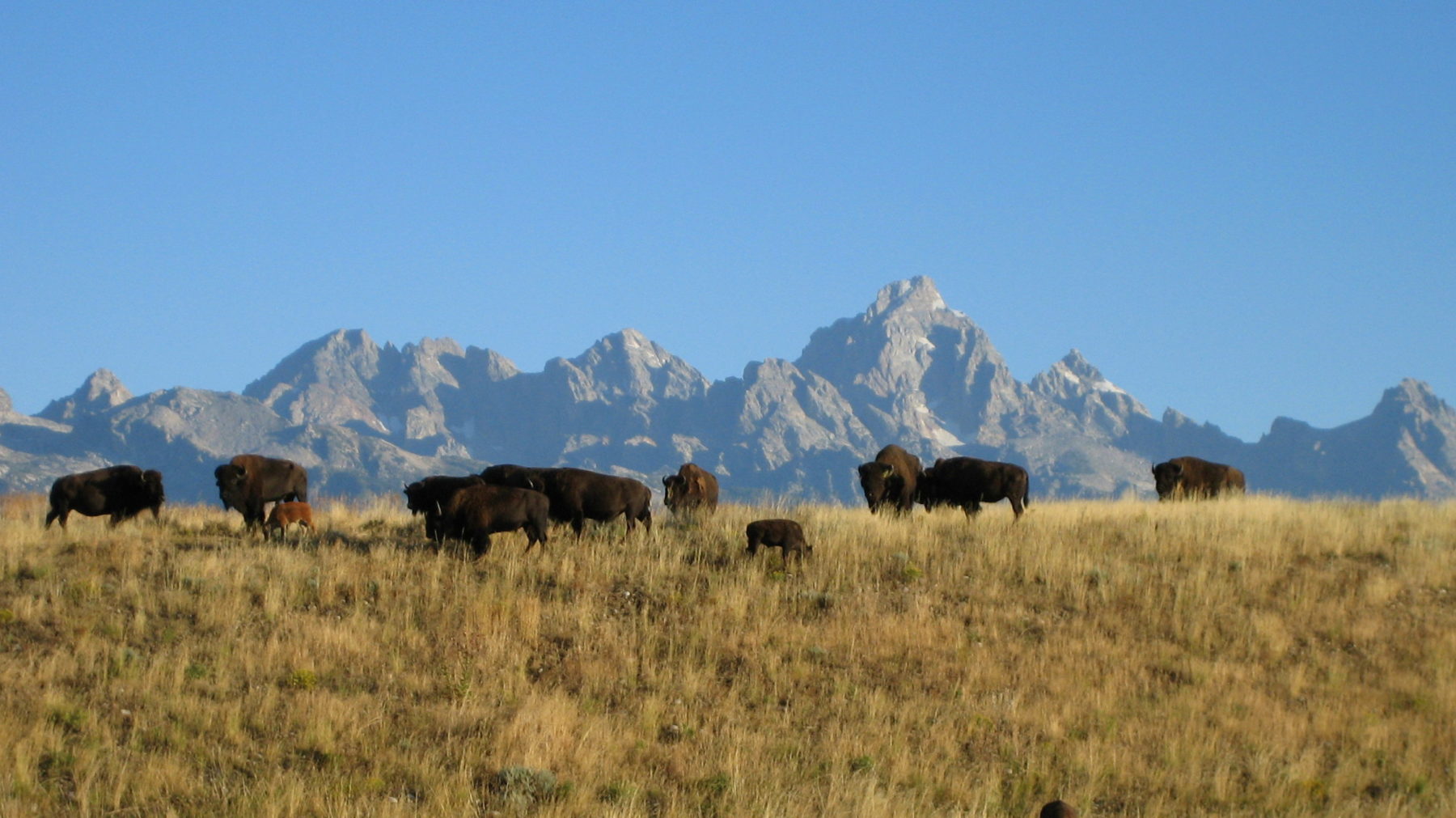

Dan Flores is a writer, historian, and former professor whose work explores the connections between people and the natural world in the American West. His most recent books—Coyote America and American Serengeti—are two of the most enlightening and informative books on the West’s natural history that I have ever read. The former is a biography of the coyote, a surprisingly fascinating animal with a rich and severely misunderstood history. The latter explores the last big mammals of the great plains—pronghorn, coyotes, horses, grizzlies, bison, and wolves—and also gives a great overview of North American big history.
It’s clear that Dan was a wonderful professor, because as you’ll hear in this episode, he has a real knack for explaining complicated subjects in a way that’s understandable, engaging, and exciting. This conversation gave me a glimpse into what it must have been like to be a student in Dan’s class at the University of Montana—I walked away from it full of new knowledge, and it whet my appetite to dig deeper into the many subjects we covered.
I could’ve asked Dan questions for hours and hours, but in our relatively short time together we managed to cover a lot. We start by discussing the coyote—how and why the animal has been so misunderstood, its similarities to humans, how it has managed to thrive despite efforts to totally eradicate the species, and the varying pronunciations of the word coyote. Then we discuss horses—the misconception that they are a non-native species in North America, their evolutionary history around the world, and some modern-day challenges facing the West’s few remaining wild horses. We also talk about Dan’s childhood in Louisiana, his current home in New Mexico, his favorite books on the American West, and much, much more.
This is an excellent episode and I’m excited for you to listen. If you haven’t already, buy Coyote America and American Serengeti—I can promise you’ll love them both.
Click Here to Download on iTunes
—
Click Here to Download on Google Play
—
Click Here to Download on Stitcher
—
Episode Notes
Topics Discussed
4:10 – History of the pronunciation of “coyote”
7:30 – Coyote’s historical reputation
11:00 – Coyote’s status in Native American lore
12:30 – Mark Twain’s influence on the coyotes’ image
14:05 – Coyotes as humans’ avatars
16:15 – Fission and fusion in coyotes
18:00 – Coyotes’ ability to control their reproduction
22:20 – Dan’s thoughts on the current attempted Federal Land grab
28:45 – Misconception that horses are non-native
34:30 – Current issues with horses in the United States
37:55 – Dan’s thoughts on the BLM Wild Mustang Program
40:15 – Dan’s early years in Louisiana
43:00 – First trip to Carlsbad Caverns
45:20 – Dan’s passionate love of desert
48:55 – Living in Montana’s Bitterroot Valley
51:00 – Changes in Montana during Dan’s time there
55:00 – “In Defense of the Ranchette” article
1:01:45 – Favorite books about the American West
1:08:00 – Most powerful experience outdoors
1:09:20 – Favorite place in the West
1:11:30 – Dan’s request of the listeners
1:15:45 – Connect with Dan
Information Referenced
- Dan Flores
- Coyote America: A Natural and Supernatural History by Dan Flores
- American Serengeti: The Last Big Animals of the Great Plains by Dan Flores
- Roughing It by Mark Twain
- Ben Masters’podcast
- Big History
- Henry David Thoreau
- Wallace Stegner
- Aldo Leopold
- In Montana – The View from the Ranchette
- American Prairie Reserve
- Beyond the 100th Meridian: John Wesley Powell and the Second Opening of the West by Wallace Stegner
- Dust Bowl: The Southern Plains in the 1930s by Donald Worster
- American Wolf: A True Story of Survival and Obsession in the West by Nate Blakeslee
- Dan’s Amazon Author Page
Noel Durant – Conservation & Community in the Gunnison Valley

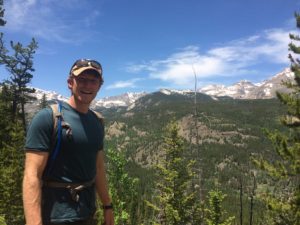
Noel Durant is the new Executive Director of the Crested Butte Land Trust, a conservation organization that protects and stewards the ranches, trails, open space, and wildlife habit of Colorado’s Gunnison Valley. Noel took the helm of the land trust in early 2017, and he brings a wide variety of conservation experience with him into this new role. He’s worked as a member of the Interagency Hotshot Crew, fighting fires across the American West. He has also worked for regional and national conservation organizations, doing everything from managing large swaths of rural land to developing urban trail systems.
Noel’s resume speaks for itself, but what is even more impressive is his intense curiosity and deep knowledge around all things conservation. Whether discussing the history of the Gunnison Valley or the ideas of Wendell Berry, it’s clear that Noel has a true passion for his work and a vision for the future of conservation in Colorado and beyond. His practical experience combined with abundant enthusiasm is what will allow him to continue and expand the work of Crested Butte Land Trust into the future.
As listeners of the podcast know, Crested Butte in one of my favorite places in the American West. Its ranching heritage, world-class recreation, and genuine community make it a unique and rare place in today’s American West. In our conversation, Noel explains what makes Crested Butte and the Gunnison Valley so special, and how the Land Trust must balance the goals of such a wide range of various stakeholders. He talks about the history of conservation in the Valley and where he sees conservation going in the future. We also discuss his time fighting fires throughout the West, how his early life and parents shaped his love of the outdoors, and lessons learned from his various roles in conservation.
This is an excellent episode with lots of interesting information, so be sure the check the episode notes for links to everything we discuss. I’m sure you’ll agree that Crested Butte Land Trust is in great hands under the leadership of Noel. Enjoy!
Click Here to Download on iTunes
—
Click Here to Download on Google Play
—
Click Here to Download on Stitcher
—
Episode Notes
Topics Discussed
2:55 – Crested Butte and the Crested Butte Land Trust
5:00 – Crested Butte compared to other mountain towns
7:00 – History of conservation in Crested Butte
11:00 – Variety of stakeholders and methods of conservation
16:30 – Overlap between ranchers and recreational users
19:00 – The community of the Gunnison Valley
20:15 – Early years in Tennessee
22:00 – Semester in western NC
23:50 – College at Clemson
27:00 – Time with the Interagency Hotshot Crew
29:00 – Details of a hotshot crew
33:00 – Community and purpose of the fighting fires
35:00 – Tragedies and challenges from the fire fighting world
39:45 – Moving on from fires to land conservation
43:00 – Time at Trust for Public Land
45:20 – Importance of open space in urban area
47:00 – Lessons learned from jobs in conservation
51:45 – Future of land conservation locally and nationally
56:45 – Favorite books
58:50 – Favorite documentaries
59:20 – Favorite location in the West
1:01:34 – Favorite hike in Crested Butte
1:03:00 – Best piece of advice he’s ever received
1:04:45 – Request of the listeners
1:05:45 – Connect with Noel and Crested Butte Land Trust
Information Referenced
- Noel Durant
- Crested Butte Land Trust
- CBLT on Instagram and Facebook
- Crested Butte, Colorado
- Outdoor Academy of the Southern Appalachians
- Clemson University
- Connor Coleman podcast
- Interagency Hotshot Crew
- Tribe by Sebastian Junger
- Fire by Sebastian Junger
- Lulu Lake Land Trust
- Trust for Public Land
- Wendell Berry
- Aldo Leopold
- Shop Class as Soulcraft by Matthew Crawford
- Winter: Notes from Montana by Rick Bass
- Alone in the Wilderness
Teal Blake – On Being Authentic & Original
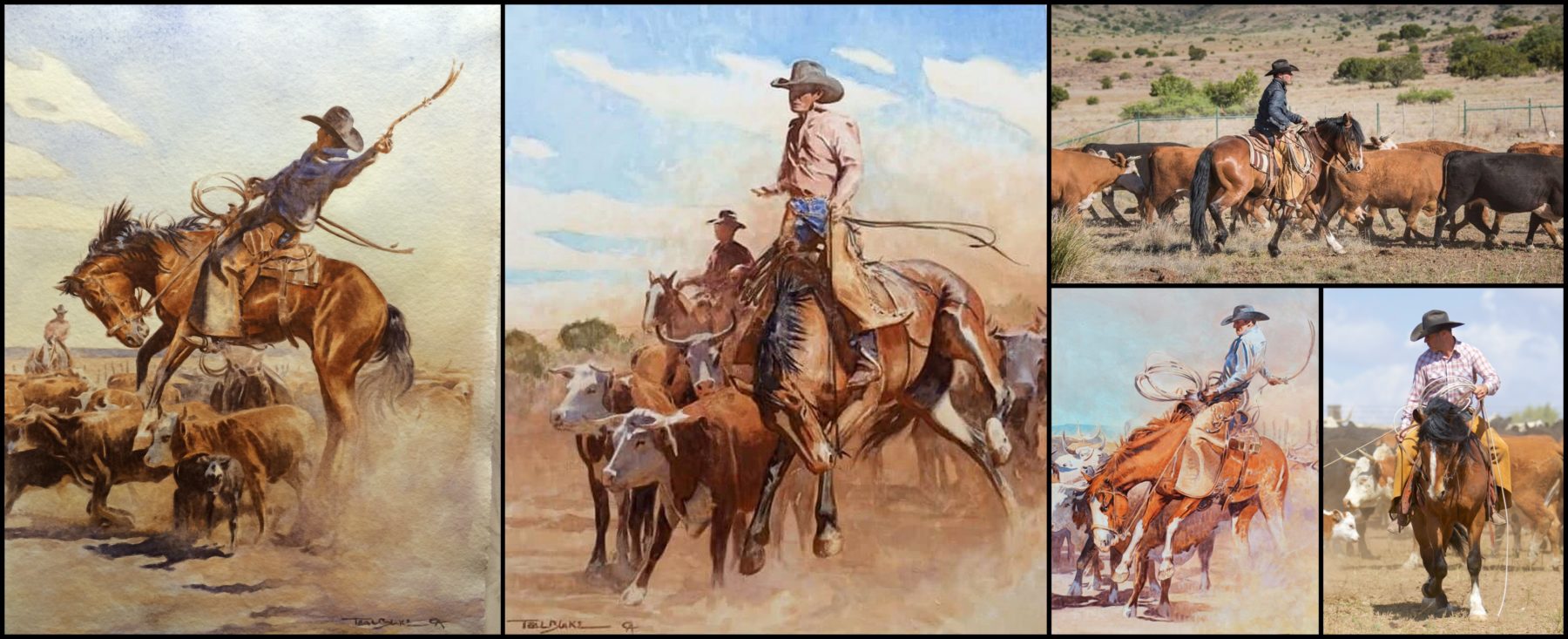
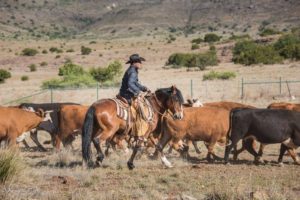
If you love art and the American West, chances are you’re already a fan of Teal Blake. His paintings of bucking horses, working cowboys, and the Western ranching lifestyle are some of the most authentic and creative around. Teal’s art is authentically Western because he’s so authentically Western—he has worked on ranches for all of his life, has ridden rodeo on the professional level, and has been making art since before he can remember. These unique life experiences, combined with a deep-seated drive to create original and striking art, meld together to make him one of the most genuine and fresh faces in Western art today.
Teal grew up in Augusta, Montana, the son of two creative parents who allowed him to roam free—fishing, hunting, and exploring the wilderness out his backdoor. During high school, he discovered his talent for bull riding and rodeo, and he pursued that passion for years, eventually competing on the professional circuit. Throughout all of his various adventures and life stages, Teal was continuously sketching and painting, and after several impressive showings at western art shows, he decided to make a go of it as a professional artist. Since then he hasn’t looked back, and his stature in the Western art world continues to grow.
We had an in-depth conversation in which we discussed Teal’s upbringing in Montana and Idaho, and how his artistic parents influenced his life and work. We chatted about his experience at art school, which ended with him flunking out, yet being the only one from his class to actually make it as a professional artist. We discuss his background in ranching and rodeo, and his process of transitioning into life as a professional artist. We also talk about the important role that external validation can play in a solitary creative endeavor such as painting. As usual, we discuss favorite books, favorite films, and his favorite place in the American West. We cover a lot in this episode, so be sure to check out the episode notes for all the topics and links to everything we discuss.
Images courtesy of Teal Blake
Click Here to Download on iTunes
—
Click Here to Download on Google Play
—
Click Here to Download on Stitcher
—
—
Episode Notes
Topics Discussed
3:33 – Process of becoming a professional artist
5:00 – Teal’s childhood in Montana
7:55 – Teal’s parents and their influence on him
9:35 – Early artistic influences
11:20 – Early artistic endeavors
12:00 – Move to Idaho and rodeo beginnings
14:55 – Decision to stop riding bulls
17:40 – Teal’s experience at college art school
21:30 – Transition from rodeo to full-time artist
24:00 – Teal’s first art show
28:00 – Teal’s daily routine and artistic phases
31:05 – Ranch work and its influence on Teal’s work
35:25 – Teal’s attraction to bucking animals — painting and riding them
38:20 – Biggest changes in Teal’s art over the past 10 years
40:33 – Challenge of creating new and original work
43:00 – Thoughts on the business of professional art
48:20 – Favorite books
52:10 – Importance of being humbled
53:10 – Raising kids in the internet age
56:50 – Favorite films
58:40 – Surprising hobbies
1:01:00 – Great advice Teal has received
1:02:15 – Favorite place in the West
1:05:50 – Teal’s advice to the listeners
1:07:45 – Connect with Teal online
1:08:10 – Chappin’!!
Information Referenced
- Teal Blake
- Teal’s Instagram
- Buckeye Blake
- Augusta, Montana
- C.M. Russell Museum
- Charlie Russell
- Will James
- Haley, Idaho
- Team roping
- Cutting horses
- War of Art by Steven Pressfield
- Cormac McCarthy
- The Border Trilogy by Cormac McCarthy
- Blood Meridian by Cormac McCarthy
- Thomas McGuane books
- Maynard Dixon documentary
- Unbranded
- Ben Masters Podcast
- The Infamous Chappin’ Video
Justin Simoni – The Ultra-Endurance Artist
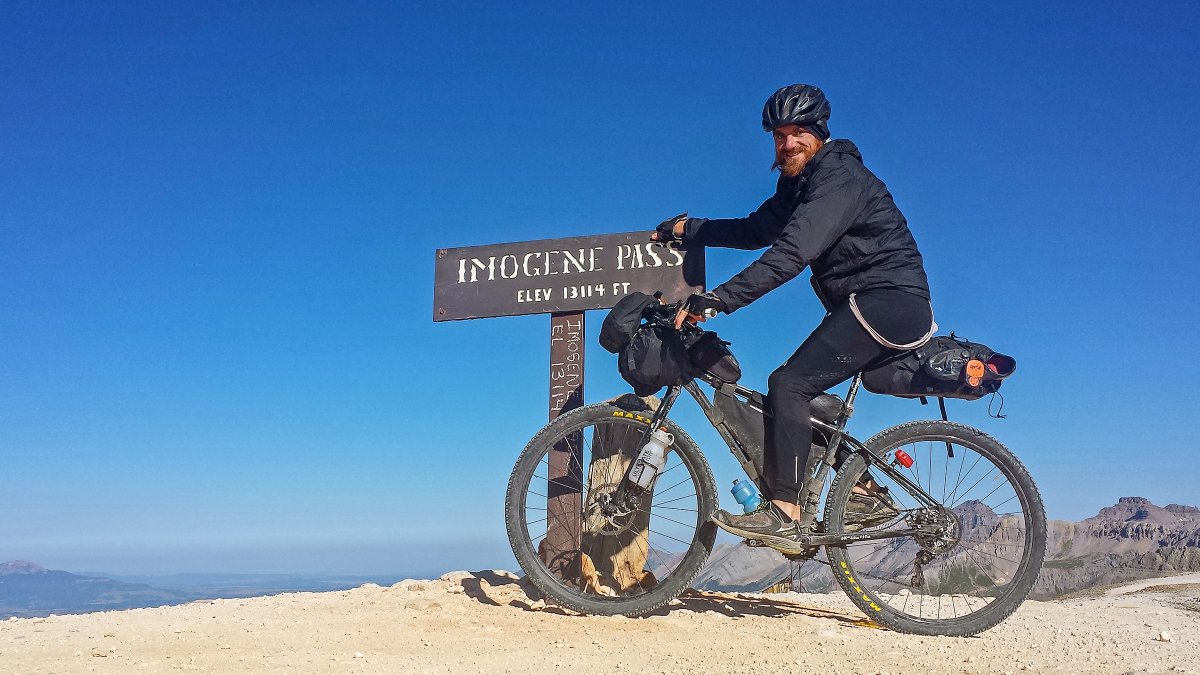
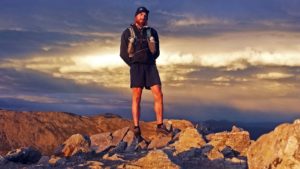
Justin Simoni is an ultra-endurance adventurer who is most well known for his self-powered, long-distance tours that combine cycling, mountain running, and climbing. He is currently preparing for the “Highest Hundred” in which he’ll climb Colorado’s 100 highest peaks, accessing them all by bike, in 60 days or less. If he pulls it off (and I’m betting that he will), it will be the first time anyone has linked all of these peaks by bike in a completely self-supported style.
Most people would assume that Justin has been a hardcore cyclist for his entire life, but he actually started riding relatively late. He studied painting in college and worked full time as a professional artist for years, living in an art gallery in downtown Denver. Frustrated with his car that kept breaking down, Justin purchased a bike and began to ride it as his primary mode of transportation. As his rides became longer and longer, he enjoyed it more and more, and pretty soon he was completely committed to long-distance cycling. What followed was a barrage of impressive solo ultra-distance adventures: cycling the Pacific Coast, racing the Tour Divide mountain bike race twice, and completing the Tour 14er, which involved cycling to all 58 of Colorado’s 14,000-foot mountains and climbing them… in just 34 days.
Thanks to his athletic accomplishments, artistic perspective, hilarious sense of humor, and infectious enthusiasm, Justin is truly one of a kind. We had a fun and funny conversation that covered a wide range of topics from his adventures to his time as an artist. We chatted about some of the techniques that he uses to stay upbeat during periods of extreme fatigue or fear, and we discussed how he balances his free-wheeling artist’s mentality with the monk-like discipline required to pull off such serious adventures. As usual, we discuss favorite books, films, and Justin shares the best piece of advice he’s ever received.
I appreciate Justin taking the time to chat during such a hectic period of planning and training. Also, thanks to the sponsors who are helping to make the Highest Hundred possible: Ultimate Direction, Surly Bikes, Colorado Mountain Club, OR, Sierra Designs, and La Sportiva.
This was a really fun conversation, so I hope you enjoy!
Photos courtesy of Justin Simoni
Click Here to Download on iTunes
—
Click Here to Download on Google Play
—
Click Here to Download on Stitcher
—
—
Episode Notes
Topics Discussed
Information Referenced
- Justin Simoni
- Justin on Facebook, Instagram, and Twitter
- Highest Hundred
- Colorado Centennials
- Colorado 14ers
- Tour Divide
- Tour 14er
- Ride the Divide
- “Everesting” Green Mountain
- Green Mountain
- Bill Briggs (interview)
- Bill Wright (blog)
- Anton Krupicka
- Joe Grant
- M&P podcast with Joe Grant
- Edward Abbey
- Desert Solitaire by Edward Abbey
- Monkey Wrench Gang by Edward Abbey
- All the Wild that Remains by David Gessner
- The Holy Mountain
- John Cage
- Taiko Drumming
- The Marathon Monks of Mount Hiei
- Sri Chnmoy Self-Trancendence 3,100-Mile Race
- Longs Peak
- Ultimate Direction
- Surly Bikes
- Colorado Mountain Club
- OR
- Sierra Designs
- La Sportiva
Bryan Martin & Elizabeth Williams – Life Skills Through Wilderness Adventure

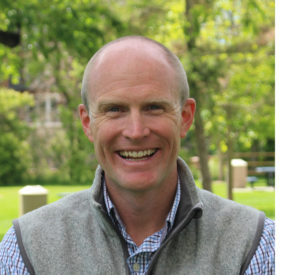
Bryan Martin and Elizabeth Williams work at Big City Mountaineers, a Colorado-based nonprofit that transforms the lives of underserved youth through wilderness mentoring expeditions. Through partnerships with community youth programs around the United States, Big City Mountaineers exposes close to 1,000 youth per year to outdoor adventures in some of our country’s most spectacular public lands. Not only do these young people learn outdoor skills, but more importantly, they learn critical life skills while also improving their self-confidence, communication skills, and leadership abilities.
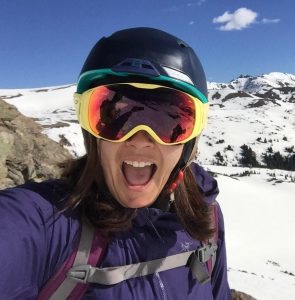
Prior to assuming his role as executive director at BCM, Bryan enjoyed great success with a wide variety of conservation and outdoor-related organizations including the Nature Conservancy, Continental Divide Trail Alliance, Colorado Mountain Club, and the Land Trust Alliance. Elizabeth was a teacher in India and Nepal before joining BCM as a marketing intern—10 years and a lot of hard work later, she has risen through the ranks and is now the Director of Programs. Bryan and Elizabeth share a deep enthusiasm for the outdoors and a belief that outdoor experiences can be transformative. Their passion for the work and BCM’s mission is palpable, so I know you’ll enjoy getting to know them.
I met Bryan and Elizabeth at the BCM offices in the American Mountaineering Center in Golden, Colorado, where we discussed BCM’s mission, the details of their wilderness expeditions, and why outdoor adventures can be such life-changing experiences. We chat about Bryan and Elizabeth’s professional backgrounds and learn what drew them to careers centered around the outdoors and service. They also tell a heart-warming success story in which a student overcomes her initial fears to thrive on a weeklong wilderness trip.
Thanks to Bryan and Elizabeth for taking the time to chat. Hope you enjoy!
Click Here to Download on iTunes
—
Click Here to Download on Google Play
—
Click Here to Download on Stitcher
—
—
Episode Notes
Topics Discussed
Information Referenced
- Big City Mountaineers
- BCM on Facebook, Twitter, and Instagram
- Bryan’s letter regarding the importance of public lands
- Summit for Someone
- National Outdoor Leadership School (NOLS)
- Outward Bound
- The Hippy Guide to Climbing the Corporate Ladder and Other Mountains by Skip Yowell
- Forever Changed by Linda Mornell
- Summer Search
- The Emerald Mile by Kevin Fedarko
- The Dog Stars by Peter Heller
- Chaco Presents: The Time Travelers
- Doug Topkins: Wild Legacy
John Dunaway – The Life and Times of a Merchant Mariner
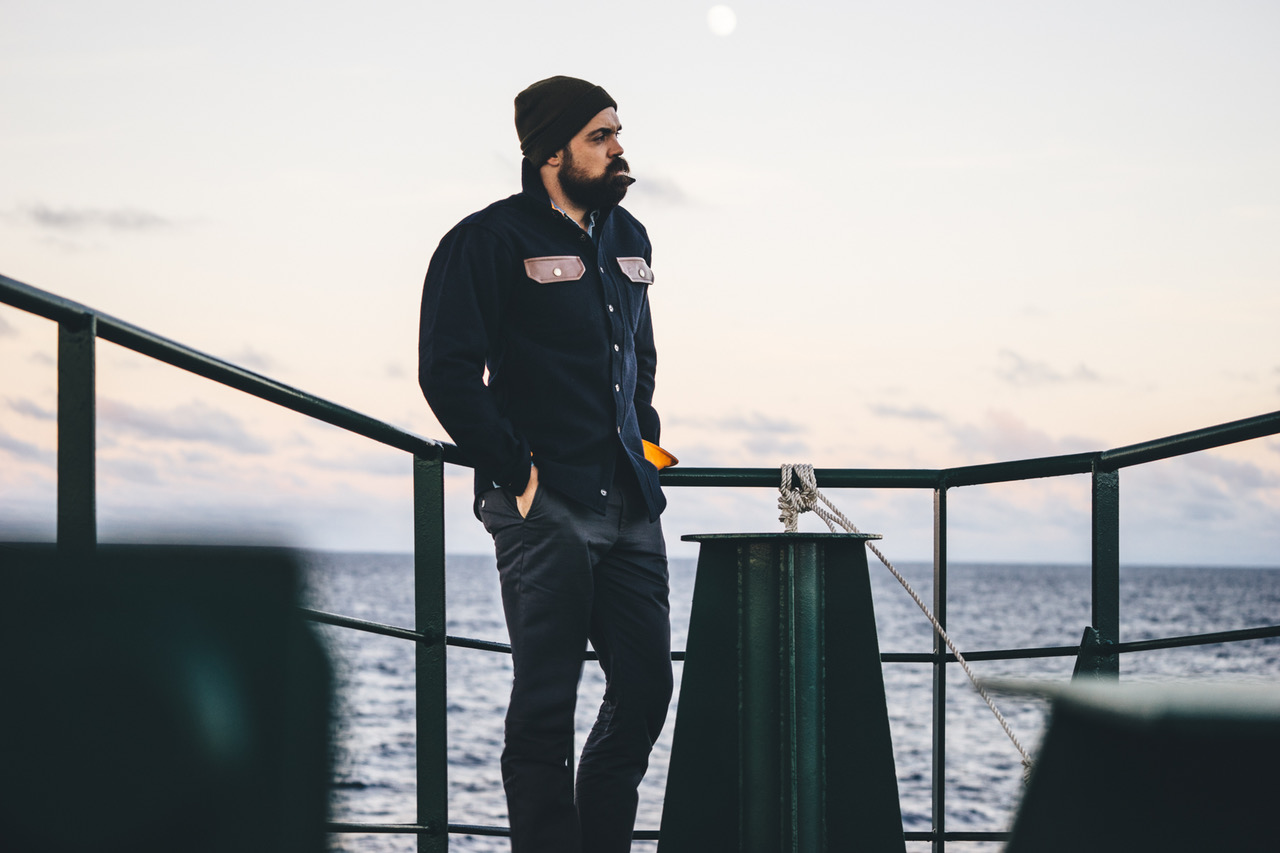
John Dunaway – Life and Times of a Merchant Mariner
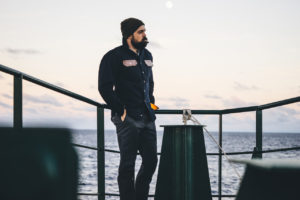
John Dunaway is a Texas-based merchant mariner who spends six months each year traveling the world as the captain of large cargo ships. Whether cruising the calm, warm waters of Central America or avoiding Somali pirates off the coast of Africa, John’s goal is the same: deliver the cargo efficiently while ensuring the safety of his crew—quite the responsibility for a 32-year-old. When not at sea, John is an avid bird hunter, surfer, and all-around adventurer who uses his downtime to explore everywhere from Jackson Hole to Canyonlands to Antelope Island with his wife and young daughter. Thanks to a talent for photography and writing, John has gained a huge following on Instagram, where he documents his exploits on his account, AbstractConformity.
So you might be asking, what does a ship captain have to do with mountains and/or prairies? Although John may spend most of his time on the high seas, far away from the American West, you’ll notice that his optimistic perspective, focused sense of purpose, and thirst for adventure parallel the attitudes and outlooks of many of my previous podcast guests. Also like other guests, he is well read, a deep thinker, and has a genuine conservation ethic thanks to his close connection to the natural world. Although the objects of our affections may be different, our underlying values and priorities are surprisingly similar.
After almost a year of recording this podcast, I was excited to switch it up a little with this in-depth conversation with John about a subject that was fairly new to me. We start by covering the basics of his job—how one becomes a ship captain, particulars on the size of the ships, and details of day-to-day life on a 90-day ocean voyage. Then we dig deeper into some of his thoughts on leadership, his rituals and superstitions, how fatherhood has changed his outlook, and how he manages the pressure that comes along with being responsible for a massive ship, his crew, and the cargo. He also tells a few crazy stories from Africa and India, and he shares some insights from his recent trips around the American West. As usual, we discuss favorite books, films, and thoughts on conservation.
I found this to be a fascinating conversation, and I’d love to hear what you think. If you have a moment, please shoot me an email and let me know your thoughts. As always, thanks for taking the time to listen; hope you enjoy.
Photos courtesy of John Dunaway
Click Here to Download on iTunes
—
Click Here to Download on Google Play
—
Click Here to Download on Stitcher
—
—
Episode Notes
Topics Discussed
Information Referenced
- John Dunaway
- John’s Instagram – AbstractConformity
- US Merchant Marine Academy
- The Power of Habit by Charles Duhigg
- The 4-Hour Work Week by Tim Ferriss
- Tim Ferriss podcast
- Endurance by Alfred Lansing
- Brady Robinson podcast interview
- Tyler Sharp podcast interview
- Knife Fights by John Nagl
- Texas Monthly article
- Filson article
- Jackson Hole
- Canyonlands
- Antelope Island
- The Drifters by James Michener
- 180 South
- Wes Anderson
Bernice Ende – Equestrian Explorer
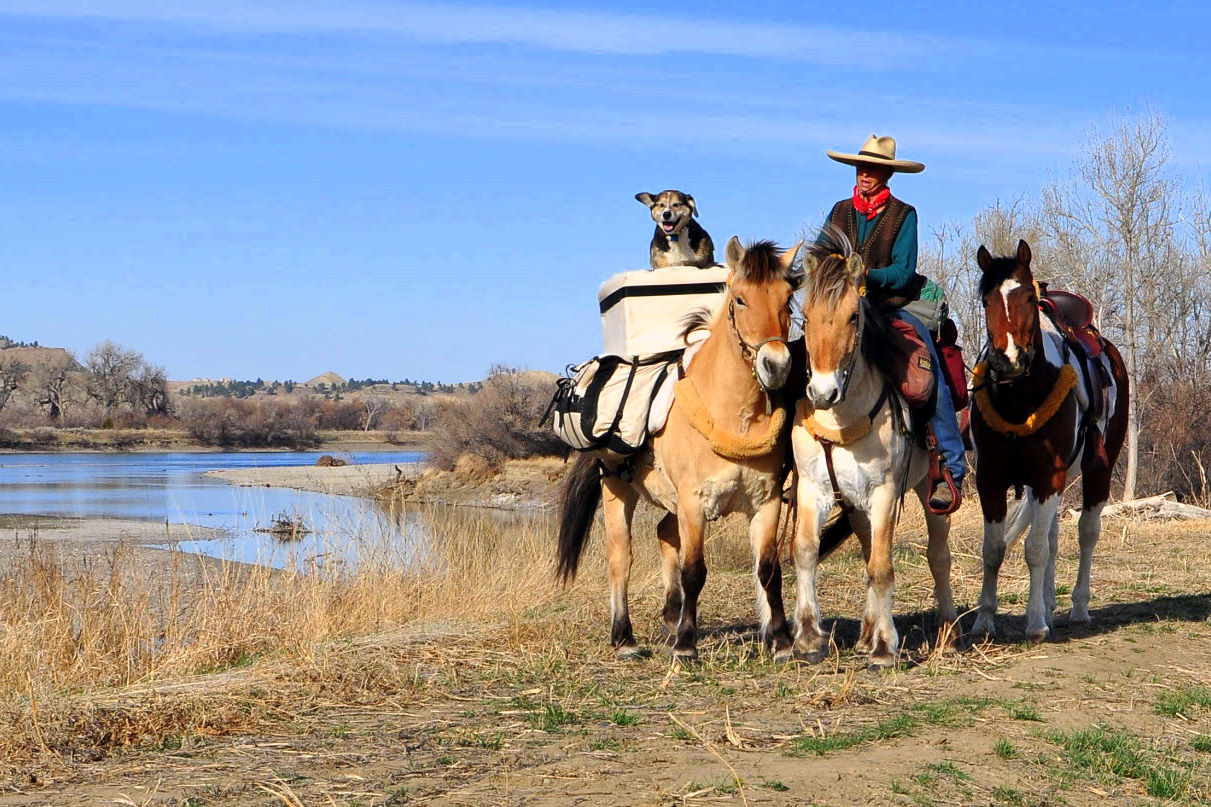
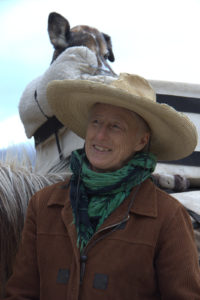
Bernice Ende is a horsewoman and adventurer who has ridden over 28,000 miles on horseback throughout the United States. Back in 2005, without any significant experience in long riding, Bernice set out by herself from her home in Trego, Montana and headed south—2,000 miles south, all the way to the Albuquerque, New Mexico. In the following years, her rides became more and more ambitious, and her most recent trip stretched 8,000 miles from Montana to the coast of Maine and back, a journey that took over two and a half years to complete!
I was surprised to learn that Bernice is relatively new to long riding and never had life-long dreams of making long riding a full-time vocation. She grew up on a Minnesota dairy farm and spent the majority of her adult life teaching ballet in cities such as San Francisco, Minneapolis, and Seattle. In 1992 she moved to Trego, Montana and opened a ballet school in a historic community hall building. After a decade of teaching there in Trego, she made the decision to take her first long ride. Since then, her story has been featured in numerous magazines, newspapers, and even on the Today Show. More importantly, her rides have inspired people of all ages to follow their dreams and pursue lives of adventure.
Bernice is extremely gifted at telling her her life story, so we had a fun and in-depth conversation. We discussed her background and the decisions that led her to strike out on her own on her first long ride. We talked about the mental challenges of pursuing such ambitious adventures and how she manages the emotional ups and downs of years on the road. She breaks down the specifics of her long rides—how far she rides each day, what she eats, where she sleeps, and all the other details. She also shares some heartwarming stories of people she has met on her rides—stories that will restore your faith in humanity in the midst of our current volatile political climate.
Thank you again to Bernice for taking the time to chat. I hope you enjoy!
Photos courtesy of Bernice Ende
Click Here to Download on iTunes
—
Click Here to Download on Google Play
—
Click Here to Download on Stitcher
—
—
Episode Notes
Topics Discussed
Information Referenced
- Bernice Ende
- Bernice’s Facebook Page and “Lady Long Rider” page
- The Long Rider’s Guild
- Sherlock Holmes
- Sir Arthur Conan Doyle
- Wallace Stegner
- Mary Oliver
- Sinclair Lewis
- All the Wild That Remains: Edward Abbey, Wallace Stegner, and the American West by David Gessner
- Edward Abbey
- Blackfoot Community Conservation Area
Mike Reilly – Helping Combat Veterans Rediscover Purpose
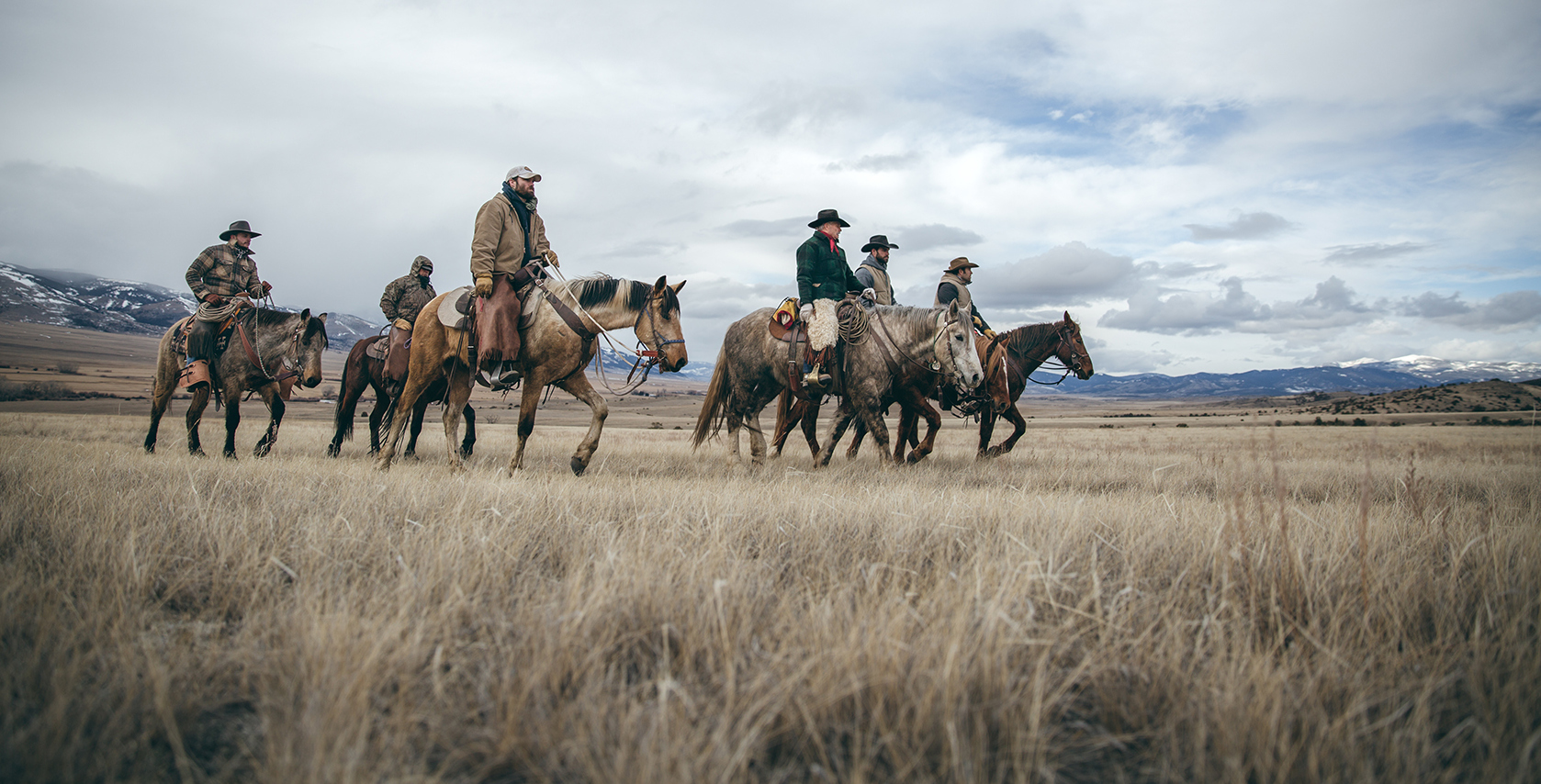
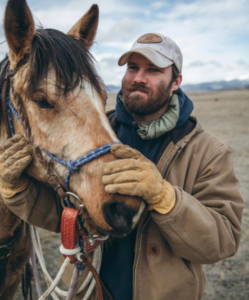
Mike Reilly is the Veterans Program Coordinator at Heroes and Horses, a Montana-based nonprofit that uses expedition-style horse pack trips through wild landscapes to help veterans overcome the challenges of life after the military. Prior to his work with Heroes and Horses, Mike was a Navy SEAL and served as a member of SEAL Team 1 in Operation Iraqi Freedom and Operation New Dawn. As he was transitioning out of the military, he heard about Heroes and Horses and signed on as a student. The program offered a perfect blend of service, teaching, helping others, and adventure that spoke to Mike’s strengths and interests; after completing the program, he was hired as a full-time member of the team.
Heroes and Horses is not a vacation. It’s a rigorous and hardcore three-phase process that takes veterans with no prior horseback experience and, in the course of a summer, turns them into expert horsemen and wilderness travelers. Through the hard work and focus required to make it through the program, veterans are able to forge lasting bonds and discover a renewed sense of purpose—which gives them the skills and confidence to thrive in the civilian life as they begin their post-military lives. Amazingly, this program is offered at no cost to veterans.
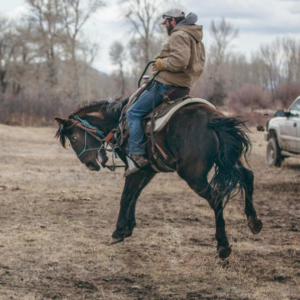
Mike was nice enough to take a break from a morning of training wild mustangs to chat with me about the program and his personal story. We discussed how he initially connected with Heroes and Horses and how it helped him through some of the challenges of post-deployment life. Mike explained the organization’s upcoming 500 Miles Project, in which they are training horses from the BLM’s Wild Mustang Program and planning to take them on a 500-mile ride later this summer. He also talks about his military career, and how a collegiate baseball injury was the catalyst that led him to pursue his dream of becoming a SEAL.
Mike is a humble guy with a deeply ingrained passion for serving and helping others, so I know you’ll enjoy this episode. I encourage you to check out the Heroes and Horses website, visit their GoFundMe page, and consider supporting their important work.
Photos courtesy of Chris Douglas
Click Here to Download on iTunes
—
Click Here to Download on Google Play
—
Click Here to Download on Stitcher
—
—
Episode Notes
Topics Discussed
Information Referenced
- Heroes and Horses
- Heroes and Horses team
- Micah Fink – Founder and Executive Director of H&H
- H&H on Facebook and Instagram
- The 500 Miles Project
- 500 Mile Project GoFundMe page
- YETI H&H Film
- 500 Miles Project teaser
- Navy SEALs
- BUDs
- Unbranded
- Ben Masters
- Podcast interview with Ben Masters
- Tom Dorrance
- Road House
- Cobra
- Big Trouble in Little China
AD Maddox – The Art of Trout and Fly Fishing

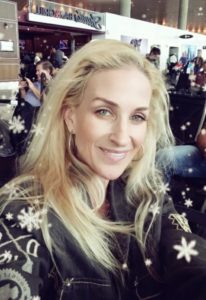
AD Maddox is an accomplished artist who creates some of the most spectacular and memorable paintings of trout that I’ve ever seen. Using bright colors and unique perspectives, AD depicts trout and the fly fishing lifestyle in a way that is completely original, yet so authentic you’d be hard-pressed to find an angler who doesn’t love her work. Her art has been featured widely throughout the fishing world, including on the cover of Gray’s Sporting Journal, Patagonia apparel, and even StealthCraft drift boats.
I first encountered AD’s work when I moved to Jackson Hole in the mid-2000s. I’m not an art connoisseur, but I was instantly taken away with how she managed to capture the beauty and realistic details of trout with a contemporary and unconventional style. And just like her work, AD is a one-of-a-kind original—she spent years as a super-competitive athlete, studied exercise physiology in college, taught herself to paint without any formal art education, and rips around backroads on a Ducati motorcycle. Despite a fun-loving and easygoing exterior, she approaches her work with discipline and rigor that seem more fitting for a professional soldier than a professional artist.
Thanks to AD’s outgoing and hilarious personality, we had a very fun and wide-ranging conversation. We chatted about her many years living in Jackson Hole and how the people, landscapes, and natural beauty of that valley influenced her art. We discussed her upbringing and her parents’ role in giving her the confidence to pursue art as a full-time career. She also talks in detail about the importance of facing challenges (both in work and life) head-on and proactively, with a positive attitude and relentless work ethic. Whether you’re an artist or not, there are many wise lessons in the conversation that anyone could apply to their work and life.

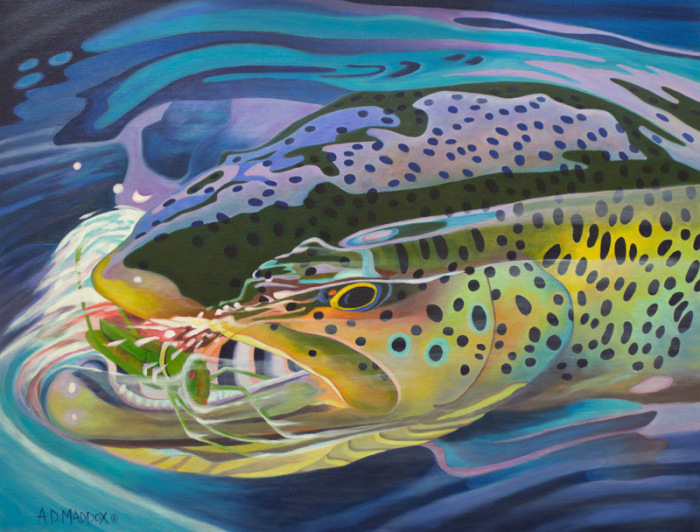
Photo and images courtesy of AD Maddox
Click Here to Download on iTunes
—
Click Here to Download on Google Play
—
Click Here to Download on Stitcher
—
—
Episode Notes
Topics Discussed
Information Referenced
Jeff Lee – Creating a Literary Home on the Range
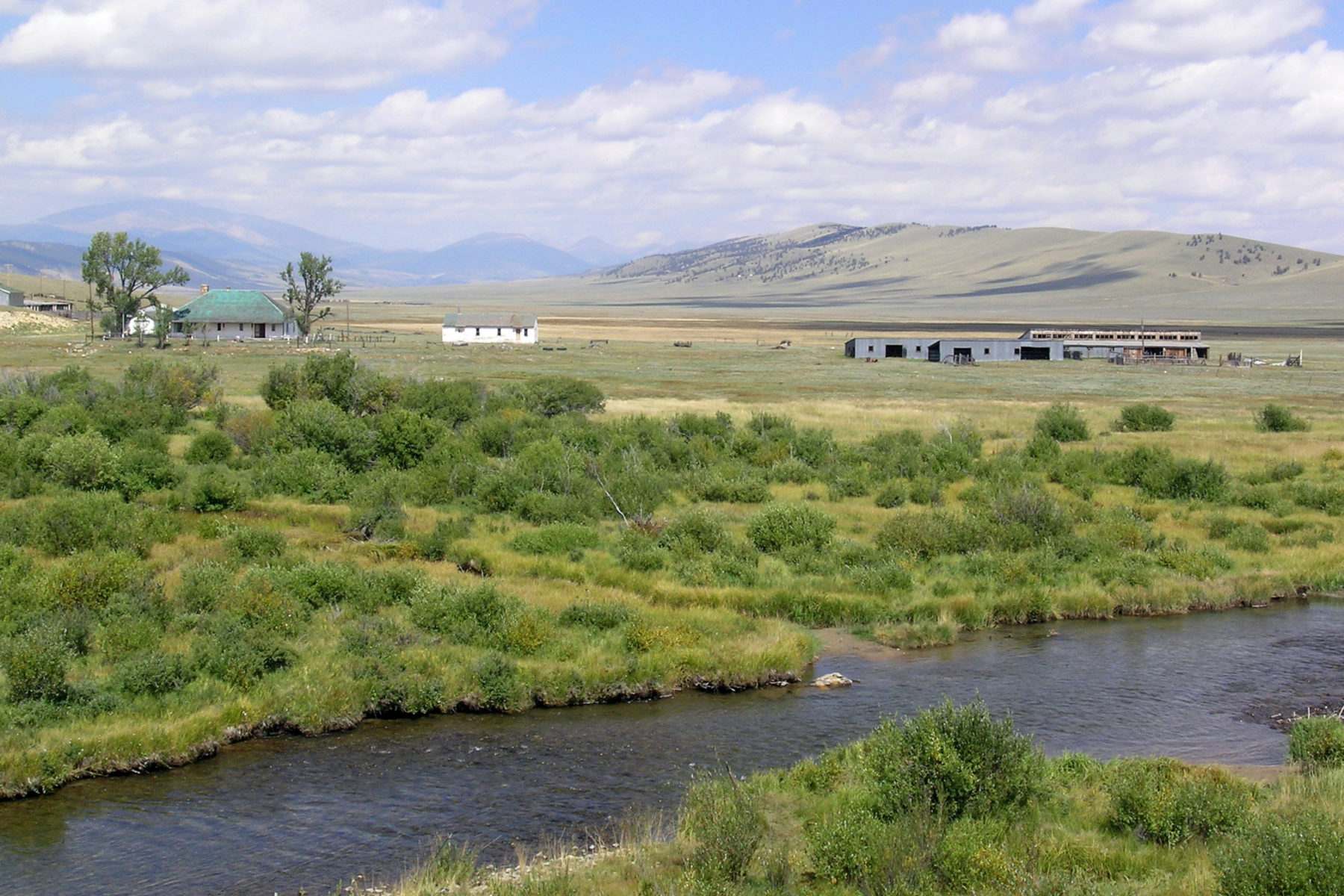
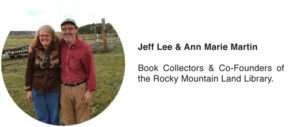 Jeff Lee is the co-founder of the Rocky Mountain Land Library, a residential library located on a historic ranch in one of Colorado’s most beautiful and dramatic high country grassland basins. The Buffalo Peaks Ranch, as it is known, will eventually house a collection of over 35,000 books related to natural history, conservation, and the American West. These books will be dispersed throughout ranch in houses and agricultural structures that have been preserved and restored by a growing team of enthusiastic volunteers. The ranch will become a place where individuals can immerse themselves in a natural setting, surrounded by books, for days at a time to read, write, and work on projects related to the West’s unique landscapes.
Jeff Lee is the co-founder of the Rocky Mountain Land Library, a residential library located on a historic ranch in one of Colorado’s most beautiful and dramatic high country grassland basins. The Buffalo Peaks Ranch, as it is known, will eventually house a collection of over 35,000 books related to natural history, conservation, and the American West. These books will be dispersed throughout ranch in houses and agricultural structures that have been preserved and restored by a growing team of enthusiastic volunteers. The ranch will become a place where individuals can immerse themselves in a natural setting, surrounded by books, for days at a time to read, write, and work on projects related to the West’s unique landscapes.
The idea for the Land Library came to Jeff and his wife Ann (the library’s other co-founder) when they visited a residential library in Europe during the mid-1990s. Given their deep love of books and land, Jeff and Ann immediately saw the potential for a similar concept in Colorado that centered around the history and landscapes of the American West. More than 20 years and tens of thousands of books later, their vision has become a reality—the Rocky Mountain Land Library is open for business and continuing to grow and evolve.
For anyone who has listened to this podcast, you know that the Land Library is my dream come true—it combines ranches, conservation, nature, and books—so I was obviously extremely excited to chat with Jeff. In a little over an hour, we covered a ton of interesting information, including the project’s backstory, the history of the ranch, and Jeff and Ann’s long term vision for the Land Library. Of course, we discuss books, and Jeff has many excellent recommendations that were brand new to me. It’s worth noting that the Land Library is in the midst of the a fundraising campaign, so I encourage you to visit their KickStarter page, watch the video, and donate to the cause… I just did, so you definitely should too! Links to everything are in the episode notes.
If you love the West, love books, and love the land, I can guarantee you will love the Land Library and this episode. Enjoy!
Photos courtesy of the Rocky Mountain Land Library
Click Here to Download on iTunes
—
Click Here to Download on Google Play
—
Click Here to Download on Stitcher
—
—
Episode Notes
Topics Discussed
Information Referenced
- Rocky Mountain Land Library
- Land Library on Facebook, Instagram, and Twitter
- Kickstarter Campaign
- Buffalo Peaks Ranch informational brochure
- Buffalo Peaks Ranch site plan
- Tattered Cover Book Store
- US Geological Survey
- Lake Powell
- William Gladstone
- South Park
- South Park City Museum
- HistoriCorps
- David Lavender
- Wallace Stegner
- Beyond the 100th Meridian by Wallace Stegner*
- Bernard DeVoto
- The Walk by William deBuys*
- Sweet Promised Land by Robert Laxalt*
- The Big Burn by Timothy Egan*
- Theodore Roosevelt
- Gifford Pinchot
- Boulder Bookstore
- Wendell Berry
- A Native Hill by Wendell Berry*
- The Wild Places by Robert MacFarlane*
- David Gessner
* Please buy these books at your local bookseller!!!
